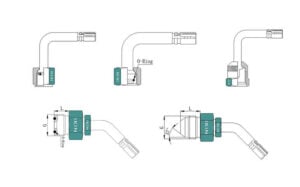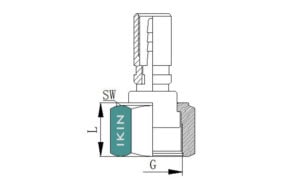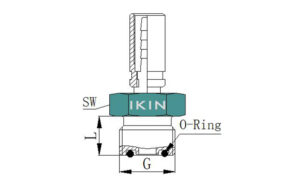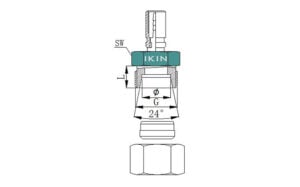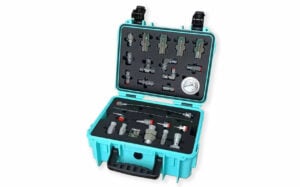лё”лЎңк·ё
How to operate hydraulic test fittings safely?
How to operate hydraulic test fittings safely?
В В В В В Hydraulic test fittings are essential components in hydraulic systems, widely utilized in fields such as construction machinery, industrial equipment, aerospace, automotive manufacturing, and oil and gas.В
В В В В В Their primary role is to measure and monitor system pressure, ensuring stable operation and safety. However, improper use or poor maintenance can lead to system failures and potentially severe safety incidents.
В В В В В Therefore, mastering the safe operation guidelines for pressure measuring joints is crucial. This paper delves into the correct operation and maintenance practices for pressure measurement joints to ensure their safety and reliability in practical applications.
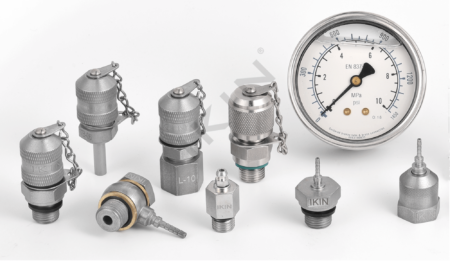
1. Basic structure and operation principle of pressure-measuring connectors
В В В В В A pressure measuring fitting typically comprises a body, seals, and connecting components. Its function is to detect pressure fluctuations within a hydraulic system, delivering real-time data that allows operators to monitor and adjust the system’s performance accordingly. Hydraulic test fittings are engineered for optimal tightness and stability in high-pressure environments, effectively preventing fluid leaks and potential system failures.
2. Basic principles of safe operation
2.1 Knowledge of equipment
В В В В В Before operating a pressure measuring fitting, it’s essential to thoroughly understand its structure, working principles, and operating instructions. Familiarize yourself with the equipment’s performance parameters, including maximum working pressure, temperature range, and suitable media. This knowledge ensures that the equipment operates within its design limits, preventing any operational issues.
2.2 Wear appropriate protective equipment
В В В В В Always utilize suitable protective equipment, such as gloves, goggles, and protective clothing, when operating pressure-measuring fittings. This gear is crucial for preventing injuries from high-pressure fluid leaks and ensures operator safety.
2.3 Checking the status of equipment
В В В В В Before operation, thoroughly inspect the condition of the pressure measuring fitting to ensure there are no signs of damage or wear. Pay special attention to the seals, which must be intact to prevent leaks. Additionally, check the connecting parts for tightness to ensure a secure and reliable connection.
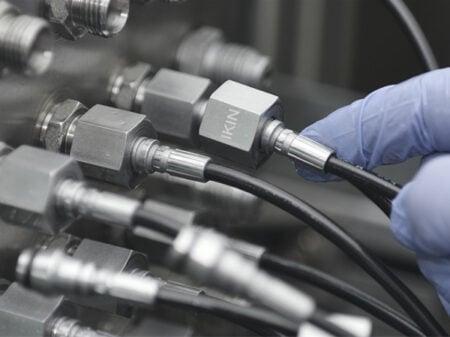
3. Safe practices for installation and dismantling
3.1 Installation of hydraulic test fittings
-Selecting an Appropriate Location: Choose a suitable spot within the hydraulic system for installation to ensure the measurement point accurately reflects the system’s operating pressure.
– Cleaning Connecting Parts: Prior to installation, thoroughly clean both the pressure measuring fitting and the system’s connecting parts to remove any impurities or contaminants that might compromise the seal.
– Using the Right Tools: Employ the correct tools for installation and avoid applying excessive force to prevent damage to the fittings or connecting components. Adhere to the equipment manufacturer’s installation instructions to ensure proper setup.
3.2 Disassembly of hydraulic test fittings
– Pressure Relief: Before removing the pressure measurement fitting, ensure that the system is fully depressurized to eliminate any residual pressure and prevent injuries from fluid discharge.
– Equipment Protection: During disassembly, carefully protect the pressure measurement fittings and connecting parts from impacts and damage. After removal, store the connectors properly to prevent contamination and damage.
4. Safety precautions in operation
В В В В В Monitoring System Pressure: During operation, continuously monitor the system pressure in real-time to ensure it remains within a safe range. Avoid overpressure conditions to prevent damage to the pressure measuring fitting and the hydraulic system.
В В В В В Avoiding Sudden Pressure Changes: Prevent sudden pressure changes during operation to avoid shocks to the pressure measuring fitting and the hydraulic system. Adjust the system pressure gradually to ensure a smooth transition.
В В В В В Compliance with Operating Procedures: Adhere strictly to the operating procedures and avoid unauthorized actions. If any abnormal conditions arise during operation, stop immediately, identify the cause, and address it to ensure system safety.
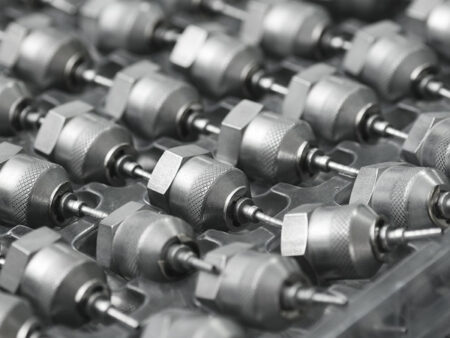
5. Safe practices for maintenance and upkeep
5.1 Regular inspection and maintenance
– Inspection of seals: Regularly inspect the seals of the pressure measuring joints, and replace them in time if they are found to be aged or damaged. Select high-performance sealing materials to improve the sealing effect and service life.
– Cleaning the equipment: Clean the pressure measurement fitting regularly to prevent dust, impurities and corrosive substances from entering the inside of the fitting. Use appropriate cleaning agents and tools to ensure that both the inside and outside of the fitting are kept clean.
5.2 Lubrication and fastening
– Lubrication: For pressure-measuring fittings that require frequent operation, lubricate regularly to reduce wear and operating resistance. Select a suitable lubricant and avoid lubricants that are harmful to the sealing material.
– TIGHTENING: Periodically check the tightness of the joints to ensure that they are securely connected. For loose joints, tighten them with appropriate tools to prevent leakage and system instability.
5.3 RAM
– Maintenance records: Detailed records of each maintenance and servicing, including inspection items, problems found and treatment measures. Through the maintenance records, the history of equipment use can be traced, potential problems can be found and dealt with in a timely manner.
– File management: Establish a file management system for the pressure measuring joints, keep the technical data, operation instructions and maintenance records of the equipment, etc., so as to facilitate the daily management and maintenance.
6. Emergency response measures
Regular Inspection and Maintenance:
- Seal Inspection: Regularly examine the seals of pressure measuring joints and promptly replace any that are aged or damaged. Use high-performance sealing materials to enhance sealing effectiveness and extend service life.
- Equipment Cleaning: Routinely clean the pressure measuring fitting to prevent dust, impurities, and corrosive substances from entering. Use appropriate cleaning agents and tools to ensure both the interior and exterior of the fitting remain clean.
Lubrication and Fastening:
- Lubrication: For pressure measuring fittings that require frequent operation, lubricate regularly to minimize wear and operational resistance. Choose a suitable lubricant and avoid those that could harm the sealing material.
- Tightening: Periodically check the tightness of the joints to ensure secure connections. Use appropriate tools to tighten any loose joints, preventing leaks and system instability.
Record and Maintenance (RAM):
- Maintenance Records: Keep detailed records of each maintenance session, including inspection items, identified issues, and corrective actions taken. These records help trace the equipment’s usage history and identify potential problems early.
- File Management: Establish a file management system for pressure measuring joints, maintaining technical data, operation instructions, and maintenance records. This system facilitates daily management and maintenance activities.
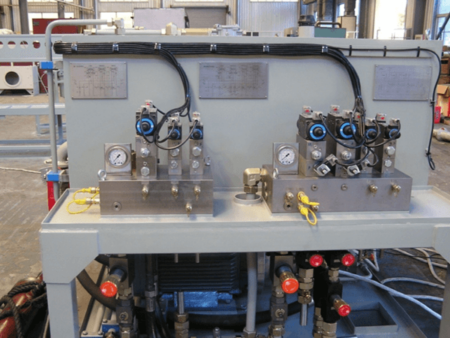
7. Case studies
Case 1: Safe Operation of hydraulic test fittings in a Chemical Plant
В В В В В In a chemical plant, numerous hydraulic test fittings were utilized within the hydraulic system. An incident occurred when an operator failed to perform the necessary pressure relief operation, resulting in a high-pressure liquid spray during disassembly and causing injury.
В В В В В Following an investigation, the chemical plant developed detailed operating procedures and provided comprehensive training to the operators. These measures significantly improved the operational safety of the pressure measuring joints and prevented similar incidents from occurring.
Case 2: Maintenance of pressure-measuring fittings at a manufacturing company
В В В В В A manufacturing company employed high-pressure hydraulic test fittings in its hydraulic press equipment. Due to neglect in timely maintenance and repair, the seals of the pressure-measuring fittings deteriorated and became damaged, leading to system leaks.
В В В В В To address the issue, the company took the following actions: replaced all deteriorated seals with high-performance sealing materials; regularly inspected and cleaned the pressure-measuring fittings to ensure optimal condition; and trained operators to enhance their maintenance and operation skills. These measures effectively resolved the leakage problem and improved both the operational efficiency and safety of the equipment.
В В В В В Hydraulic test fittings are crucial components in hydraulic systems, and their safe operation and maintenance are directly linked to the stability and safety of the system. By understanding the equipment’s structure, wearing appropriate protective gear, checking the equipment’s condition, installing and removing it correctly, monitoring system pressure, avoiding sudden pressure changes, adhering to operating procedures, conducting regular inspections and maintenance, maintaining thorough records and files, and implementing emergency response measures, you can ensure the safety and reliability of pressure-testing fittings in practical applications.
В В В В В Real-world case studies demonstrate that following scientific operation and maintenance protocols not only enhances the service life and performance of pressure measuring joints but also effectively prevents safety incidents. Therefore, attention to the safe operation specifications of pressure measuring joints is essential for ensuring the stable operation of hydraulic systems and the safety of operators.
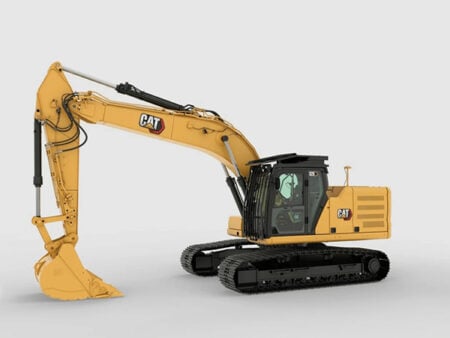
Common problems and solutions during pressure testing
Common problems and solutions during pressure testing
В В В В Pressure testing is essential for ensuring the proper operation and safety of hydraulic systems and equipment. It helps detect weaknesses, verify design pressures, and identify potential leaks within the system.
В В В В В However, various issues may arise during pressure testing. If these problems are not addressed promptly and effectively, they can affect test results and even jeopardize system safety.
В В В В В This article provides an in-depth analysis of common problems encountered during pressure testing and offers practical solutions. We will also discuss these issues through real-world examples. By offering detailed analysis and discussion, this article aims to provide practical guidance to ensure the stability and safety of hydraulic systems.

**1. Common problems during pressure testing**
**1.1 Leakage**
В В В В В Leaks are among the most common issues encountered during pressure testing. They can occur at system connections, seals, or along piping. The causes of leaks are varied and may include deteriorated seals, improper installation, or defective materials.
**Solutions:**
В В В В В Inspection and Replacement of Seals: Regularly inspect the condition of seals. Any seals that are deteriorated or damaged should be promptly replaced to prevent potential leakage.
В В В В В Correct Installation: Ensure that all connections and piping are installed correctly, using appropriate methods and tools. Proper tightening and sealing of each component are essential to prevent leaks.
В В В В В Material Selection: Choose materials that are corrosion-resistant and capable of withstanding high pressures. Selecting the right materials for the systemвҖҷs working environment enhances the overall reliability of the system.
В В В В В By implementing these solutions, the likelihood of leaks can be significantly reduced, ensuring the integrity and safety of the hydraulic system during pressure testing.
В
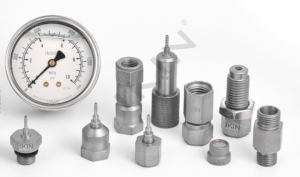
**1.2 Pressure fluctuations**
В В В В В Pressure fluctuation refers to unstable pressure during testing, which can be caused by poor system design, unstable pressure sources, or equipment failure.
**Solutions:**
В В В В В Optimized System Design: Ensure that the system is well-designed to prevent sudden changes in pressure. A robust design minimizes the likelihood of pressure fluctuations and significantly reduces associated problems.
В В В В В Stable Pressure Source: Utilize a reliable pressure source that can provide continuous and stable pressure, ensuring the system operates normally and efficiently.
В В В В В Equipment Maintenance: Conduct regular inspections and maintenance of pressure source equipment. Timely identification and resolution of potential issues are crucial to maintaining optimal working conditions and preventing pressure instability.
В В В В В Implementing these solutions will help stabilize pressure during testing, ensuring the system’s reliability and accuracy.
**1.3 Inaccurate meter readings**
В В В В В During pressure testing, inaccurate meter readings can compromise the accuracy of the test results. This issue may arise due to improper calibration of the gauge, incorrect mounting position, or gauge malfunction.
**Solutions:**
В В В В В Periodic Calibration of Meters: Calibrate the meters at regular intervals to maintain accurate readings and ensure the reliability of the test data.
В В В В В Select an Appropriate Mounting Location: Install the meter in a suitable location that minimizes vibration and interference, which can affect the accuracy of the readings.
В В В В В Replacement of Malfunctioning Meters: Promptly replace any malfunctioning meters to maintain the accuracy and integrity of the test results.
В В В В В By addressing these factors, the accuracy of meter readings can be ensured, thereby enhancing the reliability of the pressure test outcomes.
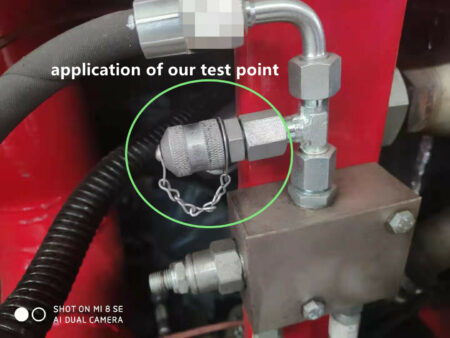
**1.4 Temperature effects**
В В В В В Temperature variations can significantly impact pressure test results, particularly in extreme high or low-temperature environments. These fluctuations can cause materials to expand or contract, affecting the system’s sealing and pressure stability.
**Solutions:**
В В В В В Selection of Temperature-Resistant Materials: Choose materials that are resistant to temperature changes based on the system’s working environment. This ensures that the system maintains stable performance under extreme temperature conditions.
В В В В В Implement Temperature Compensation Mechanism: Introduce a temperature compensation mechanism during testing to minimize the impact of temperature fluctuations on the results. This helps ensure the accuracy and reliability of the pressure tests.
В В В В В By addressing temperature-related issues, the stability and accuracy of pressure test results can be significantly improved.
**1.5 Connectivity issues**
В В В В В Connection problems are a common challenge during pressure testing, often caused by mismatched fitting types, improper installation, or loose connections.
**Solutions:**
В В В В В Selecting the Appropriate Fitting Type: Choose fittings that are compatible with the system design and suitable for the working environment to ensure proper matching with the rest of the system.
Correct Installation of Fittings: Follow standard methods and procedures for installing fittings to ensure a secure and reliable connection.
В В В В В Regular Inspection and Tightening: Conduct periodic inspections of connection points and promptly tighten any loose parts to maintain a solid and dependable connection.
В В В В В By addressing these connection issues, the reliability and effectiveness of pressure testing can be significantly enhanced.
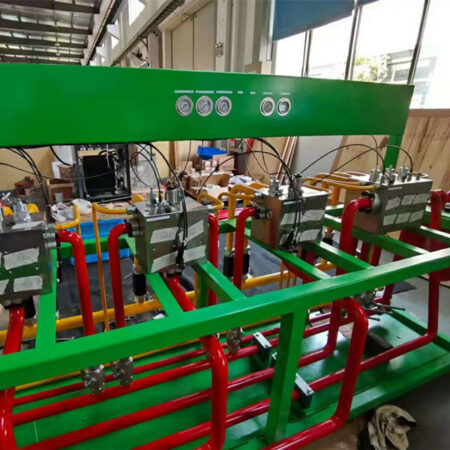
**2. Solutions for pressure testing**
**2.1 Development of a Detailed Test Plan**
В В В В В Before conducting a pressure test, it is crucial to develop a comprehensive test plan that outlines the purpose, scope, methodology, steps, and expected outcomes. A detailed test plan helps clarify the objectives and ensures that the testing process is systematic and organized.
**2.2 Use of High-Quality Test Equipment**
В В В В В Using high-quality test equipment is essential for obtaining accurate and reliable results. Select certified and calibrated equipment, and ensure that it is in optimal working condition before use.
**2.3 Training and Education**
В В В В В Provide thorough training and education for operators to equip them with the necessary knowledge and skills for pressure testing. Training should cover the use of test equipment, execution of test procedures, and identification and resolution of common issues.
**2.4 Recording and Analysis**
В В В В В During the pressure test, meticulously record all data and results, including pressure, temperature, time, and environmental conditions. Analyzing this data helps identify potential problems and implement timely corrective measures.
**2.5 Development of Contingency Plans**
В В В В В Develop a comprehensive contingency plan to address any emergencies that may arise during the testing process. The plan should include procedures for handling leaks, equipment failures, and safety measures to ensure the testing process remains safe and efficient.
В В В В В By implementing these strategies, the reliability and accuracy of pressure testing can be significantly enhanced, ensuring the safe and effective operation of hydraulic systems.
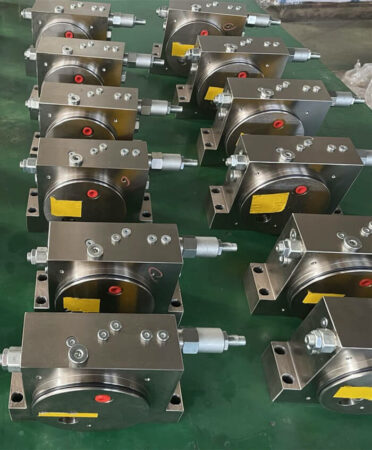
**3. Case Studies**
**Case 1: Pressure Testing in a Chemical Plant**
В В В В В During the pressure testing of a new piping system at a chemical plant, multiple leaks were detected. Upon investigation, it was determined that the primary causes of the leaks were aging seals and improper installation. To address these issues, the chemical plant implemented the following measures:
В В В В В – Replaced all deteriorated seals with corrosion-resistant, high-performance sealing materials to enhance durability and reliability.
В В В В В – Conducted a thorough inspection and tightening of all connections to ensure that the installation complied with relevant codes and standards.
В В В В В – Provided comprehensive training to operators to enhance their installation and operational skills.
В В В В В By taking these steps, the chemical plant effectively resolved the leakage issues and ensured the safety and stability of the piping system.
**Case II: Pressure Testing in a Pharmaceutical Company**
В В В В В During a pressure test of the hydraulic system at a pharmaceutical company, significant pressure fluctuations were detected. Analysis revealed that these fluctuations were caused by an unstable pressure source and poor system design. To address these issues, the pharmaceutical company implemented the following measures:
В В В В В – Replaced the existing pressure source with more stable equipment to ensure a continuous and stable pressure supply.
В В В В В –В Redesigned the hydraulic system, optimizing the piping layout and connections to enhance overall system stability.
В В В В В – Introduced an automated control system to monitor and regulate pressure in real-time, ensuring consistent system pressure.
В В В В В By implementing these measures, the pharmaceutical company successfully resolved the issue of pressure fluctuations, significantly improving the operational efficiency and stability of the hydraulic system.
**Case IV: Pressure Testing at an Aerospace Company**
В В В В В During pressure testing of an aircraft hydraulic system at an aerospace company, significant effects of temperature variations on the test results were observed. Analysis determined that these temperature changes caused material expansion and contraction, which impacted the system’s sealing and pressure stability. To address this issue, the aerospace company implemented the following measures:
В В В В В – Selected temperature-resistant materials suitable for both high and low-temperature environments to ensure stable performance despite temperature fluctuations.
В В В В В – Introduced a temperature compensation mechanism during the testing process to adjust system parameters in real-time, ensuring the accuracy of the test results.
В В В В В – Controlled the test environment to minimize the impact of temperature variations on the testing process.
В В В В В By adopting these measures, the aerospace company successfully mitigated the issues caused by temperature variations, significantly enhancing the accuracy and reliability of the pressure tests.
**Case V: Pressure Testing in a Shipping Company**
В В В В В During a pressure test of a ship’s hydraulic system at a shipping company, issues were identified at multiple joints. Inspection revealed that these problems were due to mismatched joint types and improper installation. To resolve these issues, the shipping company implemented the following measures:
В В В В В – Selected appropriate fittings that were compatible with the system, ensuring they matched the rest of the hydraulic components.
В В В В В – Reinstalled the connectors following correct methods and procedures to guarantee a secure and reliable connection.
В В В В В – Conducted thorough inspections and tightened all connections to ensure system stability and safety.
В В В В В By taking these steps, the shipping company successfully addressed the connection issues, ensuring the normal operation and reliability of the ship’s hydraulic system.

В В В В В Pressure testing is a vital procedure for ensuring the proper functioning and safety of hydraulic systems and equipment. During testing, issues such as leaks, pressure fluctuations, inaccurate gauge readings, temperature effects, and connection problems can arise. These challenges can be effectively managed through the implementation of detailed test plans, the use of high-quality testing equipment, comprehensive operator training, meticulous recording and analysis of test data, and robust contingency plans. These measures ensure the accuracy and reliability of pressure tests.
В В В В В Analyzing real-world cases demonstrates that scientific pressure testing methods and strategies not only address issues encountered during testing but also enhance the operational efficiency and safety of hydraulic systems. Therefore, focusing on the identification and resolution of problems during the pressure testing process is crucial for maintaining the stable operation of hydraulic systems.
Hydraulic Pressure Fittings Applied in Various Industries
Hydraulic Pressure Fittings Applied in Various Industries
В В В Pressure measuring fittings are essential hydraulic components. They monitor pressure in hydraulic systems to ensure safety and stability. These fittings are used in many industries, including construction, industrial equipment, aerospace, automotive manufacturing, and oil & gas. Each industry has different performance requirements.
В В В The performance requirements for pressure measuring fittings differ across industries. Specific examples demonstrate the practical importance of these fittings.
В В В In this article, we will explore how pressure-measuring fittings are used across various industries. We’ll analyze their key roles and impacts through specific case studies.
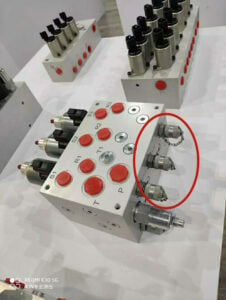
1. In the field of construction machinery
В В В In the construction machinery industry, pressure measuring fittings are indispensable components. Equipment such as excavators, bulldozers, and loaders must endure harsh environments for extended periods, demanding highly reliable hydraulic systems.
В В В Pressure measuring fittings play a critical role by continuously monitoring hydraulic system pressure in real time. This real-time monitoring ensures that the equipment operates within the optimal pressure range, thereby enhancing reliability, preventing system failures, and maintaining peak performance and safety.
В В В Excavators, bulldozers, loaders, and similar equipment often operate in harsh environments for prolonged periods. This demanding usage necessitates exceptional reliability in their hydraulic systems. To achieve this, pressure measuring fittings are employed to monitor the hydraulic system’s pressure in real time. These fittings ensure that the equipment operates within the optimal pressure range, thereby preventing potential system failures and maintaining peak performance and safety standards.В
**Case Study: Excavator Application**
В В В A leading construction machinery company incorporates high-performance pressure measuring fittings in the hydraulic systems of its excavators. Given that excavators are required to function in high-intensity work environments, the pressure resistance and durability of these fittings are crucial.
В В В These pressure measuring fittings are crafted from the latest high-strength alloy materials and utilize advanced sealing technology. This design enables them to perform reliably for extended periods under high-pressure and high-temperature conditions, effectively preventing leaks and system failures.
В В В Through regular maintenance and servicing, the company’s excavators have significantly enhanced their operational efficiency and safety. The robust construction of these fittings ensures that the hydraulic systems remain reliable, thereby optimizing performance and reducing downtime. This meticulous approach to equipment maintenance has contributed to the company’s reputation for producing durable and efficient machinery capable of withstanding the rigors of demanding construction environments.
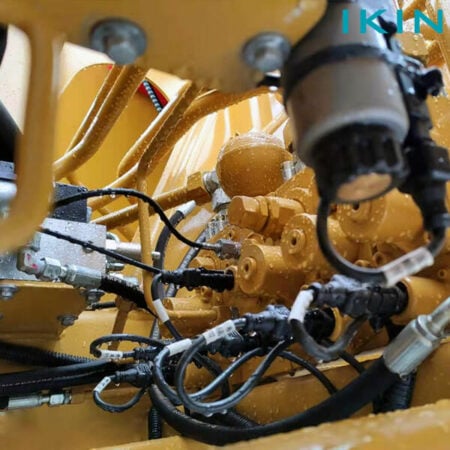
2. **Industrial Equipment Sector**
В В В Industrial equipment such as hydraulic presses, die casting machines, and injection molding machines heavily rely on pressure measuring fittings. These fittings ensure the systems operate smoothly under high pressure and high temperature conditions. They provide accurate pressure data, enabling operators to adjust system parameters in a timely manner. This real-time data optimizes equipment performance and ensures an efficient, stable production process.
**Case Study: Hydraulic Press Application in a Manufacturing Company**
В В В A manufacturing company has implemented new high-pressure gauge fittings in its hydraulic press equipment. Precise pressure control is essential for hydraulic presses during production, making the accuracy and stability of these fittings crucial.
В В В By utilizing high-performance pressure measuring fittings, the company has notably enhanced the quality of its hydraulic products. This improvement has led to a significant reduction in scrap rates and an increase in production efficiency. The reliable performance of these fittings ensures that the hydraulic presses maintain consistent pressure control, thereby optimizing the overall manufacturing process and ensuring high-quality output.
В В В 3. **Automobile Manufacturing Sector**
В В В In the automotive manufacturing sector, hydraulic systems play a crucial role in braking, steering, and suspension systems. Pressure measuring fittings are essential for real-time pressure monitoring in these systems, ensuring the vehicle’s safety performance under various operating conditions.
**Case Study: Braking System Application for an Automobile Manufacturer**
В В A renowned automobile manufacturer has integrated intelligent pressure measurement fittings into the braking system of its latest models. These advanced fittings combine a pressure sensor with data transmission capabilities, allowing real-time pressure data to be sent to the vehicle’s electronic control system. This continuous data stream enables the system to dynamically adjust brake pressure, significantly enhancing braking performance and vehicle safety.
В В В The manufacturer has also conducted extensive testing and validation to ensure these pressure-measuring fittings maintain optimal performance across different climatic conditions and driving environments. This rigorous testing ensures that the fittings provide consistent, reliable data, contributing to a safer and more dependable driving experience for consumers. By incorporating these intelligent fittings, the automaker has improved the overall safety and reliability of its vehicles, reinforcing its commitment to quality and innovation in automotive design.

В В В 4. **Oil and Gas Sector**
В В В In the oil and gas industry, hydraulic systems must function in complex environments with significant pressure fluctuations and exposure to corrosive media. Pressure measuring fittings are critical in these systems for monitoring the pressure of pipelines and equipment, preventing safety incidents such as leaks and explosions.
**Case Study: High-Pressure Pipeline Application in an Oilfield Project**
В В В An oilfield project implemented high-pressure gauge fittings within its pipeline system. These fittings, constructed from high-strength alloys and featuring multi-layer seals, are engineered to withstand high-pressure and highly corrosive environments over extended periods. Regular inspections and maintenance have enabled the project team to avert numerous potential leakage incidents, ensuring safe production and environmental compliance.
В В В Additionally, these pressure measuring fittings are equipped with remote monitoring technology, allowing operators to observe real-time pressure changes in the pipeline from a central control room. This capability ensures that any abnormalities are quickly addressed, significantly enhancing production efficiency and safety management in the oilfield. The integration of these advanced fittings not only ensures the structural integrity of the pipeline system but also supports the overall safety and efficiency of the oilfield operations.
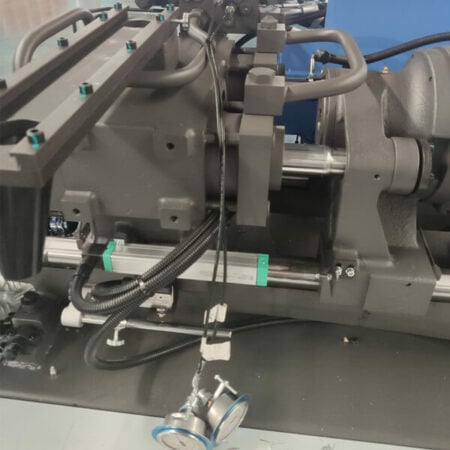
В В 5. **Building Construction Sector**
В В В In the building construction sector, large mechanical equipment such as tower cranes and concrete pump trucks rely on stable hydraulic systems for optimal performance. Pressure measuring fittings are crucial in these hydraulic systems to ensure stability and safety during construction activities5.
**Case Study: Tower Crane Application for a Construction Company**
В В В В A construction company has integrated high-precision pressure measurement fittings into the hydraulic systems of its tower cranes. During construction, tower cranes frequently lift heavy loads, demanding extremely stringent pressure requirements for their hydraulic systems. By employing high-performance pressure measuring fittings, the company has significantly enhanced construction efficiency and safety in large-scale projects.
В В В These advanced pressure measuring fittings feature the latest self-locking design, ensuring that the fittings remain secure under high pressure and vibration. This innovation greatly improves the reliability and operational safety of construction equipment, enabling the tower cranes to function seamlessly in demanding environments. Consequently, the construction company has achieved higher productivity and reduced risks, reinforcing the importance of utilizing top-tier pressure measuring fittings in critical construction machinery.
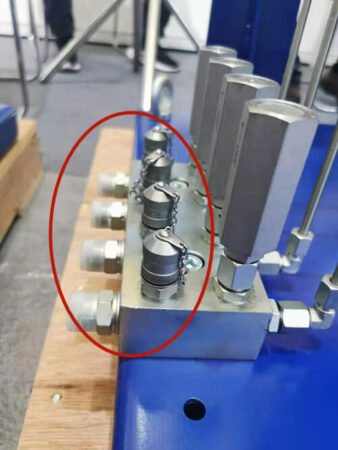
6. **Agricultural Machinery Sector**
В В В In the agricultural machinery sector, equipment such as tractors, harvesters, and planters rely heavily on hydraulic systems. Pressure measuring fittings are essential for monitoring and controlling these hydraulic systems, ensuring the machines’ reliability and efficiency in various farming operations.
**Case Study: Harvester Application for an Agricultural Machinery Company**
В В В An agricultural machinery company has implemented a new type of pressure measuring connector in the hydraulic system of its latest harvester model. These advanced fittings allow operators to monitor the hydraulic system’s status in real time, enabling timely adjustments and maintenance. As a result, the harvester performs reliably in field operations, reducing mechanical failures and enhancing harvesting efficiency.
В В В These pressure measuring fittings feature an anti-fouling design that effectively prevents soil and impurities from entering the system. This design keeps the hydraulic system clean and functioning properly, ultimately improving the efficiency and service life of the agricultural machinery.
В В В By adopting these innovative fittings, the company has ensured that its harvesters deliver optimal performance, contributing to more productive and efficient farming operations.
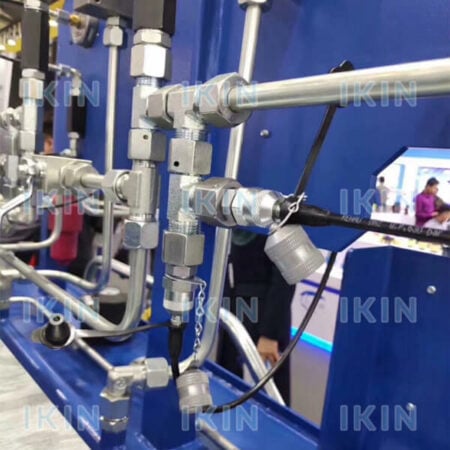
7. **Mining Sector**
В В В The mining industry is highly demanding, and hydraulic systems are crucial for the performance of mining equipment. Pressure measuring fittings are essential for monitoring the hydraulic systems in this sector, ensuring stable operation under high loads, high pressures, and harsh environmental conditions.
**Case Study: Hydraulic Drilling Rig Application for a Mining Company**
В В В A mining company has integrated high-performance pressure measuring couplings into the hydraulic systems of its drilling rigs. These couplings are made with special wear-resistant materials and a multi-layer sealing structure, allowing them to operate reliably for extended periods under high-pressure and high-vibration conditions.
В В В Through regular maintenance and real-time monitoring, the company’s hydraulic drilling rigs perform exceptionally well in deep well drilling and ore extraction. This significantly boosts both efficiency and safety. The use of these advanced pressure measuring couplings not only extends the lifespan of the equipment but also reduces downtime caused by equipment failures, thereby improving overall productivity at the mine. By leveraging these robust fittings, the mining company ensures that its drilling operations are more efficient, reliable, and productive.
В В В The case studies above clearly illustrate the application of pressure measuring fittings across various industrial fields, highlighting their critical role in ensuring the stable operation and safety of hydraulic systems. These fittings help enterprises improve productivity, reduce maintenance costs, and enhance safety.

В В В As technology continues to advance, the performance and functionality of pressure measuring fittings are also improving. This progress will lead to their application and promotion in even more fields in the future, making significant contributions to industrial development and technological progress.
В В В By integrating these advanced fittings, industries can look forward to more efficient, reliable, and safe hydraulic systems, driving further innovation and growth.
Pressure Measuring Fittings in Hydraulic Systems: Types, Applications, and Best Practices
Pressure Measuring Fittings in Hydraulic Systems: Types, Applications, and Best Practices
В В В В В В В Hydraulic systems are essential in modern industry, playing a crucial role in fields such as construction machinery, industrial equipment, aerospace, and automotive manufacturing.
В В В В В В В At the heart of these systems lies the pressure measuring fitting, which is critical for measuring and monitoring system pressure to ensure stability and safety.
In this comprehensive guide, we will explore the various types of pressure measuring fittings, their application scenarios, selection criteria, installation and maintenance procedures, and real-world case studies demonstrating their importance in hydraulic systems.
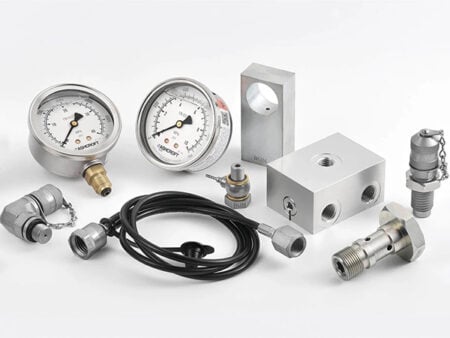
Pressure measuring fittings come in various designs tailored for specific applications, each with unique features:
1. Quick couplings
В В·Characteristics: Designed for rapid connection and disconnection.
В В·Applications: Used in hydraulic systems requiring frequent assembly and disassembly, enhancing efficiency through simple insertion and removal.

2. Threaded joints
В В В·Characteristics: Secured by threaded connections, suitable for high-pressure environments.
В В В·Applications: Common in systems needing robust connections that can withstand high pressure and vibration.
3. Push-in fittings
В В·Characteristics: Connect via a simple push-in operation.
В В·Applications: Ideal for low and medium pressure systems, though caution is needed in high-pressure environments.
4. Flanged joints
В В·Characteristics: Provide high-strength connections.
В В·Applications: Used in heavy machinery and high-pressure pipelines due to their strong connections and excellent seismic.
5. Welded joints
В·Characteristics: Connected by welding, suitable for high-pressure and high-temperature conditions.
В·Applications: Preferred in environments demanding high connection strength, despite more complex installation and maintenance.
В
When selecting a pressure measurement fitting, a number of factors need to be thoroughly evaluated to ensure optimum performance and long-lasting reliability in a particular application. The main factors to consider include the following:
В
1. Pressure range
В According to the working pressure of the hydraulic system, select the coupling that can withstand the corresponding pressure. Over-pressurization can lead to damage to the couplings and even safety accidents.
В В When choosing, you need to carefully check the maximum working pressure of the hydraulic system and the rated pressure of the pressure measurement joints to ensure that the joints can withstand the working pressure of the system.
В
2. Temperature range
В Hydraulic systems may operate in high or low temperature environments, requiring the selection of fittings with good temperature resistance.
В В В Pressure gauge fittings made of different materials have different performance in different temperature ranges, and you need to choose the right fittings according to the operating temperature of the hydraulic system.
В
3. Media type
В According to the medium used in the hydraulic system (such as oil, water, etc.) to select the appropriate joint material to prevent corrosion and media leakage.
В В Different media have different requirements for pressure measurement joint materials, such as oil-based hydraulic media suitable for the use of metal joints, while water-based hydraulic media may require the use of corrosion-resistant materials.
В
4. Connectivity
В According to the design and installation requirements of the system to choose the appropriate connection, such as quick couplings, threaded fittings or push-in fittings. The selection needs to take into account the connection method and operating habits of the hydraulic system to ensure that the fitting is easy to install and use.
In order to ensure that the gauge fitting will operate consistently and efficiently in the hydraulic system for a long period of time, proper installation methods and a systematic maintenance program are essential. Below are some detailed recommendations:
1. Installation steps
В В В – Ensure that the hydraulic system is fully pressurized before installation.
В В В – Select the appropriate installation tool according to the type of fitting.
В В В – Ensure that fittings are clean and free of foreign matter where they connect to the system.
В В В – Install the fitting correctly according to the product instructions to ensure a good seal.
В В В – Pressure test after installation to ensure that the joints are leak-free.
В
2. Maintenance methods
В В В – Regularly check the sealing of the joints and replace the seals when leaks are detected.
В В В – Clean fittings regularly to prevent dust and contaminants from entering the system.
В В В – Regularly lubricate frequently used joints to ensure smooth operation.
В В В – When used under high pressure or in harsh environments, periodically check the fittings for wear and replace damaged fittings in a timely manner.
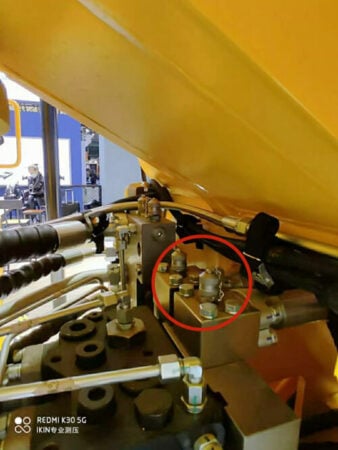
In the hydraulic system, the pressure measuring fitting is not only widely used, but also plays a vital role. Through the following case studies of several practical applications, we can have a clearer understanding of the key role and significant results of the pressure measurement joints in various industries.
В В В В В В В #Construction machinery
A major construction machinery company has introduced a new type of pressure measurement joint in its excavator hydraulic system. Made with high-precision sensors and durable materials, the connector provides excellent measurement accuracy and durability.
By using this pressure fitting, the company monitors the hydraulic system pressure in real time to ensure that the equipment operates within the optimal pressure range, improving efficiency and safety.
In addition, the corrosion and pressure resistance of the couplings significantly reduces maintenance costs, extends service life, and improves overall productivity.
В
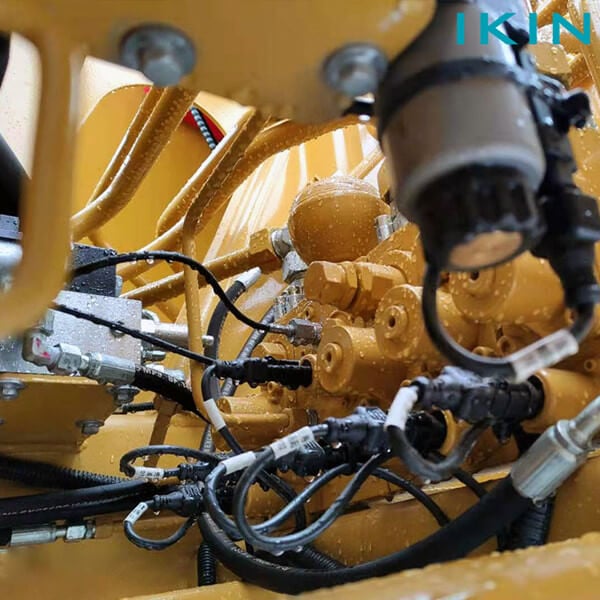
#Oil and gas
In the oil and gas industry, a large oilfield project has adopted a high-pressure and corrosion-resistant pressure measuring fitting to monitor the pressure of high-pressure pipelines. The application of this pressure fitting effectively prevents safety incidents such as pipeline leaks and explosions, and improves the safety and productivity of the project.
Installed at key pipeline nodes, these couplings transmit real-time pressure data to the monitoring center, helping operators adjust system parameters in a timely manner to prevent potential hazards.
#Industrial equipment
An industrial equipment manufacturing company has installed a variety of pressure measurement fittings in its hydraulic presses to monitor the pressure of the equipment’s hydraulic system.
Through accurate pressure monitoring and data analysis, the company identified and resolved potential problems in the hydraulic system and made timely adjustments, significantly improving the equipment’s operational stability and service life.
The real-time data provided by the pressure measurement couplings supports predictive maintenance, reduces equipment failure rates and downtime, and improves overall productivity.
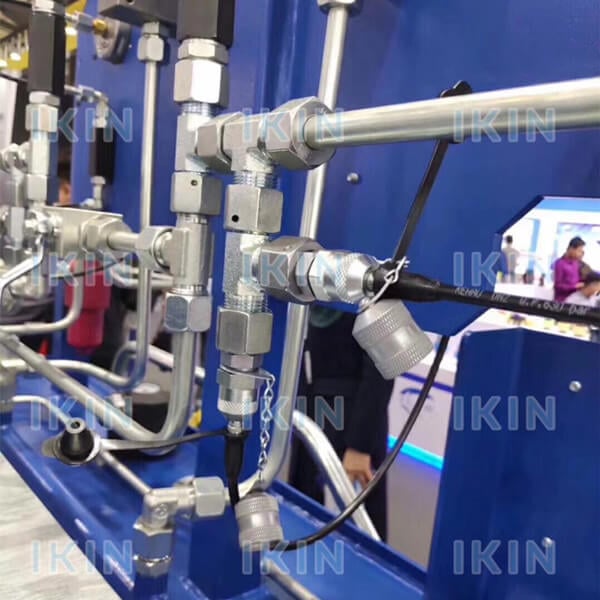
Pressure gauge fittings play a vital role in hydraulic systems, and their proper selection, installation and maintenance are the keys to ensuring the safe and stable operation of hydraulic systems. By understanding the different types of pressure measuring fittings and their application scenarios, and mastering the selection and maintenance methods, the operating efficiency and safety of the hydraulic system can be effectively enhanced.
В В В В В В В We hope this article can help you better understand the basics and practical application scenarios of pressure measuring fittings, as well as grasp the key methods of selection and maintenance. We hope this information will be helpful to hydraulic system engineers and technicians in their work to enhance the performance and reliability of hydraulic systems. If you have any questions or need further guidance, please feel free to contact a professional.
мӢңмһҘм—җм„ң мң м•• н…ҢмҠӨнҠё м»Өн”Ң л§Ғмқҳ м°Ёмқҙм җмқҖ л¬ҙм—Үмһ…лӢҲк№Ң?
мӨ‘көӯ 3лҢҖ м ңмЎ°м—…мІҙ
мҲҳм•• н…ҢмҠӨнҠё н”јнҢ… кіөкёүм—…мІҙ
SGS мҠ№мқё
мӢңмһҘм—җм„ң м••л Ҙ н…ҢмҠӨнҠё нҸ¬мқёнҠёмқҳ кө¬мЎ°лҠ” л¬ҙм—Үмһ…лӢҲк№Ң?
м••л Ҙ н…ҢмҠӨнҠё нҸ¬мқёнҠёлҠ” мһ‘кі л¶Ҳн•„мҡ”н•ҙ ліҙмқҙм§Җл§Ң мң м•• н…ҢмҠӨнҠё мӢңмҠӨн…ңмқҖ нӣЁм”¬ лҚ” нҺёлҰ¬н• кІғмһ…лӢҲлӢӨ.В
1. м••л Ҙ н…ҢмҠӨнҠё нҸ¬мқёнҠёмқҳ кё°лҠҘ
м••л Ҙ н…ҢмҠӨнҠё нҸ¬мқёнҠёлҠ” мЈјлЎң мң мІҙ мӢңмҠӨн…ңмқҳ м••л Ҙмқ„ мёЎм •н•ҳлҠ” лҚ° мӮ¬мҡ©лҗҳл©° лӮҙл¶Җм—җ мһҗмІҙ л°Җлҙү л°ёлёҢк°Җ мһҲмҠөлӢҲлӢӨ.
лӢЁлҸ…мңјлЎң мӮ¬мҡ©н•ҳл©ҙ мҠӨн”„л§Ғмқҳ мһ‘мҡ©мңјлЎң мӢңмҠӨн…ң л§ӨмІҙмқҳ лҲ„м¶ңмқ„ л§үмқ„ мҲҳ мһҲмҠөлӢҲлӢӨ.
мһҗмІҙ л°Җлҙү л°ёлёҢлҠ” кіЁл¬ҙ лҳҗлҠ” м••л Ҙ м„јм„ңк°ҖмһҲлҠ” мёЎм • нҳёмҠӨм—җ м—°кІ° н•ң нӣ„ м—ҙ мҲҳ мһҲмңјл©° мӢңмҠӨн…ң м••л Ҙ л§Өк°ң ліҖмҲҳлҠ” мӢңмҠӨн…ң м••л Ҙ к°җм§Җ, мӢңмҠӨн…ң л””лІ„к№… л°Ҹ мҳӨлҘҳ 진лӢЁм—җ мӮ¬мҡ©лҗҳлҠ” м••л Ҙ кІҢмқҙм§Җ лҳҗлҠ” н…ҢмҠӨн„°лЎң н‘ңмӢң лҗ мҲҳ мһҲмҠөлӢҲлӢӨ. кі м•• лҳҗлҠ” м Җм•• мң мІҙ мӢңмҠӨн…ң.
нҠ№мҲҳ мң„м№ҳм—җ м„Өм •н•ҳл©ҙ н…ҢмҠӨнҠё нҸ¬мқёнҠё м–ҙлҢ‘н„°лҘј мң м•• мӢңмҠӨн…ң л§ӨмІҙ мғҳн”Ңл§Ғ, мӢңмҠӨн…ң м••л Ҙ мҷ„нҷ” л°Ҹ мӢңмҠӨн…ң л°°кё°м—җлҸ„ мӮ¬мҡ©н• мҲҳ мһҲмҠөлӢҲлӢӨ.
2. мӢңмһҘм—җм„ң м••л Ҙ н…ҢмҠӨнҠё нҸ¬мқёнҠёмқҳ 분лҘҳ
м••л Ҙ н…ҢмҠӨнҠё нҸ¬мқёнҠё м»Өл„Ҙн„°лҠ” м••л Ҙ мёЎм • л°Ҹ кі / м Җ мң лҹү мң мІҙ мғҳн”Ңл§Ғмқ„ мң„н•ҙ нҠ№лі„нһҲ м„Өкі„ лҗҳм—Ҳкё° л•Ңл¬ём—җ м„Өкі„лҠ” м••л Ҙ лІ”мң„лҘј 충분нһҲ кі л Өн–ҲмҠөлӢҲлӢӨ.
к·ёлҰ¬кі лӢӨм–‘н•ң мӮ¬мҡ© лІ”мң„м—җ л”°лқј лӢӨм–‘н•ң мң нҳ•кіј к°•м җмқҳ н…ҢмҠӨнҠё нҸ¬мқёнҠёк°Җ м„Өкі„лҗҳм—Ҳмңјл©° мқҙлҹ¬н•ң м»Өл„Ҙн„°лҠ” мһ‘м—…м—җм„ң лҢҖмІҙ н• мҲҳм—ҶлҠ” м—ӯн• мқ„н•©лӢҲлӢӨ.
лӢӨлҘё лӮҙл¶Җ кө¬мЎ°м—җ л”°лқј м••л Ҙ н…ҢмҠӨнҠё нҸ¬мқёнҠё кө¬мЎ°лҠ” ліј м”°, н”јмҠӨнҶӨ м”° л°Ҹ мҪҳ м”°лЎң лӮҳлҲҢ мҲҳ мһҲмҠөлӢҲлӢӨ.
2.1 ліј м”° кө¬мЎ°
ліј м”° м••л Ҙ н…ҢмҠӨнҠё м»Өн”Ң л§ҒмқҖ мЈјлЎң мҠӨнӢё ліјкіј мҠӨн”„л§ҒмңјлЎң кө¬м„ұлҗ©лӢҲлӢӨ.
추л ҘмқҖ мҠӨн”„л§Ғ мӮ¬м „ 압축м—җ мқҳн•ҙ мғқм„ұлҗҳлҜҖлЎң к°•мІ ліјмқҙ л°ёлёҢ ліёмІҙ кІ°н•© н‘ңл©ҙм—җ лҢҖн•ҙ лҲҢлҹ¬м ё л°Җлҙүлҗ©лӢҲлӢӨ.
ліј м”° кө¬мЎ°мқҳ нҠ№м§• : к°„лӢЁн•ң кө¬мЎ°, кё°кі„м Ғ м”°, л…ёнҷ”н•ҳкё° мүҪм§Җ м•Ҡкі м•Ҳм •м„ұмқҙ мўӢмҠөлӢҲлӢӨ.
лҳҗ лӢӨлҘё нҠ№м§• : л°ёлёҢ л°”л”” м ‘мҙүл©ҙмқҳ к°Җкіө м •нҷ•лҸ„к°Җ лҶ’м•„м•јн•ҳкі , мҠӨнӢё ліјкіј л°ёлёҢ л°”л””к°Җ лқјмқё м ‘мҙү мғҒнғңмқҙл©°, м”°л§Ғ нҡЁкіјлҠ” нҸүк· мһ…лӢҲлӢӨ.
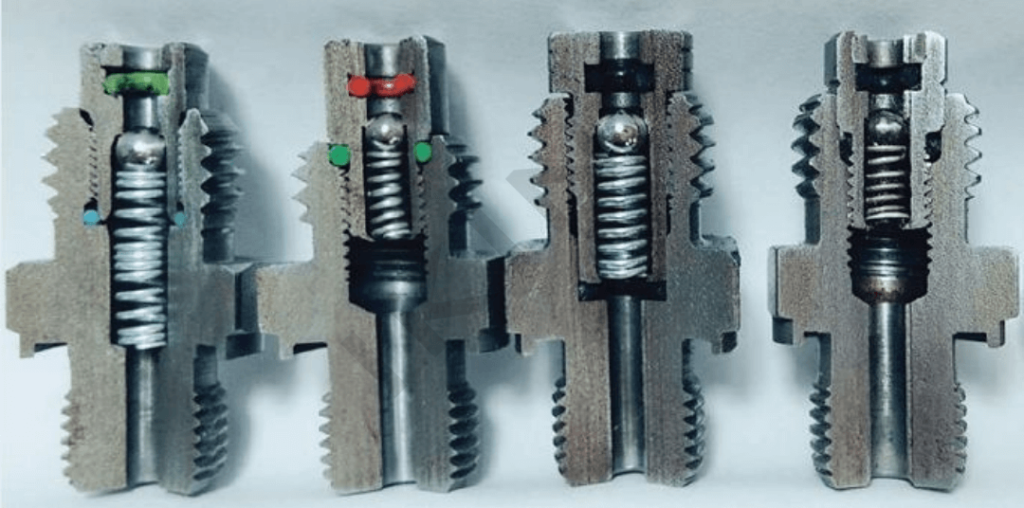
ліј м”°мқҙмһҲлҠ” м••л Ҙ н…ҢмҠӨнҠё нҸ¬мқёнҠёмқҳ лӮҙл¶Җ кө¬мЎ°
2.2 н”јмҠӨнҶӨ м”° кө¬мЎ°
н”јмҠӨнҶӨ м”° м••л Ҙ н…ҢмҠӨнҠё нҸ¬мқёнҠё м–ҙлҢ‘н„°лҠ” мЈјлЎң н”јмҠӨнҶӨ, O- л§Ғ л°Ҹ мҠӨн”„л§ҒмңјлЎң кө¬м„ұлҗ©лӢҲлӢӨ. м”°л§Ғ л§ҒмқҖ н”јмҠӨнҶӨ нҷҲм—җ мһҲмҠөлӢҲлӢӨ.
мҠӨн”„л§Ғ мӮ¬м „ 압축 추л Ҙмқ„ нҶөн•ҙ м”°л§Ғ мҪҳ (л°©мӮ¬нҳ• м”°) лҳҗлҠ” нҸүнҸүн•ң н‘ңл©ҙ (축 м”°)м—җ л¶Җм°©н•ҳмӢӯмӢңмҳӨ.
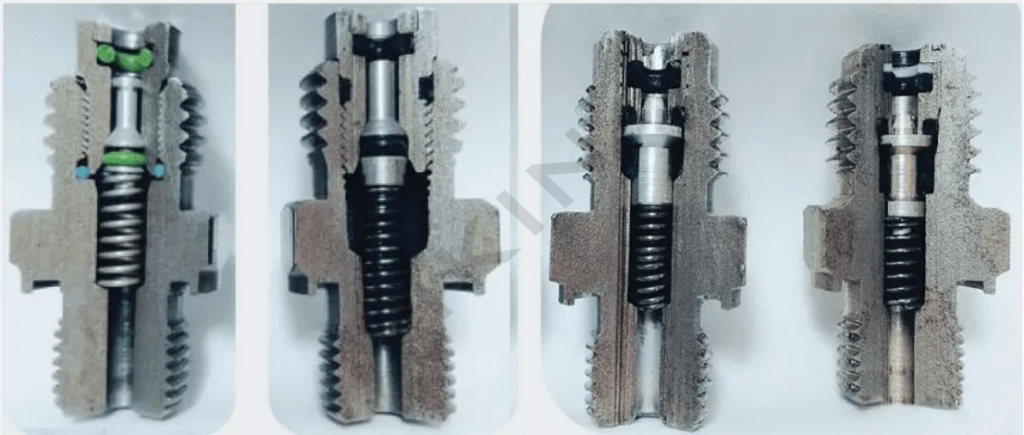
2.3 мҪҳ мӢӨл§Ғ кө¬мЎ°
мҪҳ м”° м••л Ҙ н…ҢмҠӨнҠё м»Өн”Ң л§ҒмқҖ мҪҳ л°ёлёҢ мҪ”м–ҙ, мҪҳ м”° л°Ҹ мҠӨн”„л§ҒмңјлЎң кө¬м„ұлҗ©лӢҲлӢӨ.
мӣҗ추нҳ• м”°кіј мӣҗ추нҳ• л°ёлёҢ мҪ”м–ҙлҠ” мҠӨн”„л§Ғмқҳ мӮ¬м „ 압축 추л Ҙ м•„лһҳм—җм„ң л°ёлёҢ ліёмІҙмқҳ мӣҗ추нҳ• кІ°н•© н‘ңл©ҙм—җ лӢЁлӢЁнһҲ л¶Җм°©лҗ©лӢҲлӢӨ.
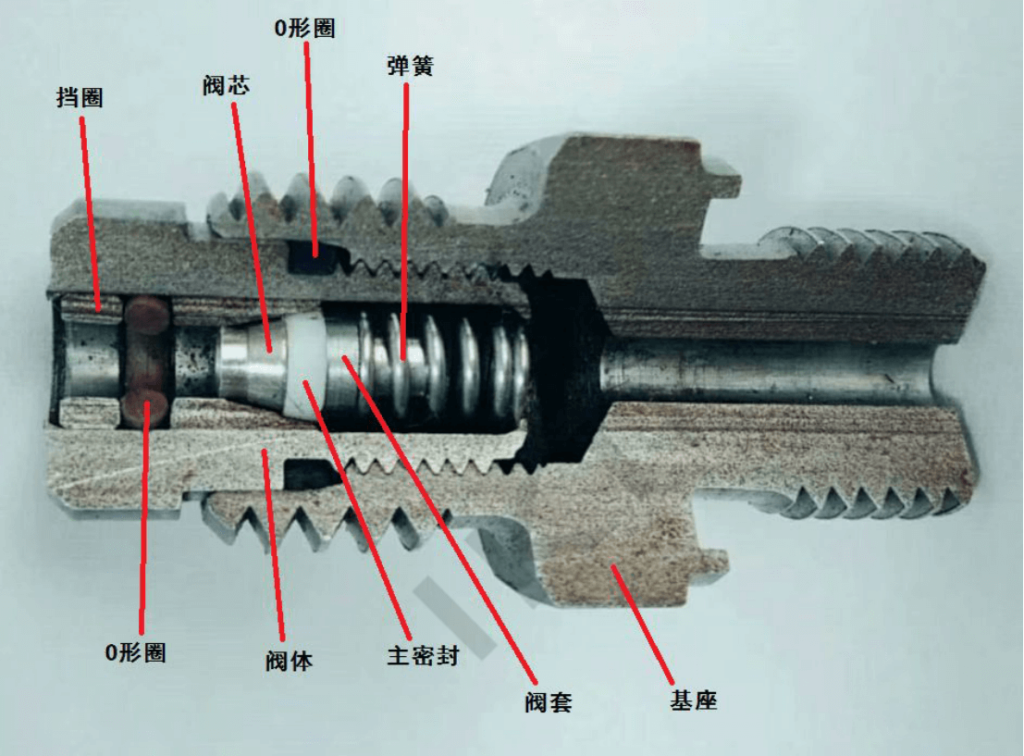
мҪҳ л°ҖнҸҗ м••л Ҙ мӢңн—ҳмқҳ лӮҙл¶Җ кө¬мЎ°
мҪҳ м”° нҠ№м§• : мӣҗ추нҳ• л°ёлёҢ мҪ”м–ҙмҷҖ мӣҗ추нҳ• м”°мқҙ н•Ёк»ҳ мһ‘лҸҷн•ҳкі м”°л§Ғмқҙ н‘ңл©ҙ м ‘мҙүмқҙл©° м”°л§Ғ нҡЁкіјк°Җ лҚ” мўӢкі к°ҖмҠӨмҷҖ м•ЎмІҙк°Җ ліҙнҺём Ғмһ…лӢҲлӢӨ.
мҠӨн”„л§ҒмқҖ л°ёлёҢ ліёмІҙм—җ нҶөн•©лҗҳм–ҙ мһҲмңјл©° н’Җкё°к°Җ мүҪм§Җ м•ҠмҠөлӢҲлӢӨ. к·ёлҹ¬лӮҳ л°ёлёҢ лӘёмІҙмҷҖ мҠӨн’Җмқҳ мІҳлҰ¬ м •нҷ•лҸ„лҠ” мғҒлҢҖм ҒмңјлЎң лҶ’мҠөлӢҲлӢӨ.
м—…кі„м—җм„ң мқјл°ҳм ҒмңјлЎң мӮ¬мҡ©лҗҳлҠ” мһҘ비лЎңм„ң мң мІҙ м••л Ҙ н…ҢмҠӨнҠё нҸ¬мқёнҠёлҠ” кҙ‘лІ”мң„н•ң мӢӨм ң лІ”мң„мҷҖ нҺёлҰ¬н•ң м—°кІ° л°Ҹ мғҳн”Ңл§ҒмңјлЎң мң лӘ…н•©лӢҲлӢӨ. нҠ№нһҲ кі м•• л°Ҹ мң мҶҚм—җм„ң мң мІҙлҘј мӮ¬мҡ©н•ҳлҠ” кІҪмҡ° л§ҺмқҖ мһҘм җкіј нҺёлҰ¬н•Ёмқҙ мһҲмҠөлӢҲлӢӨ.
к·ёл ҮлӢӨл©ҙ мһҘм җмқҖ л¬ҙм—Үмһ…лӢҲк№Ң?
мһҘм җ 1 : мһ‘м—…мқҖ кі м••м—җм„ң мҲҳлҸҷмңјлЎң мҷ„лЈҢ н• мҲҳ мһҲмҠөлӢҲлӢӨ.
мң мІҙк°Җ кі м•• мғҒнғң мқј л•Ң мһ‘лҸҷмқҙ л¶ҖмЈјмқҳн•ҳл©ҙ кі м••мқҙ мүҪкІҢ м•ЎмІҙк°Җ лҲ„м¶ңлҗҳм–ҙ лҸҢмқҙнӮ¬ мҲҳм—ҶлҠ” кіөм • мӮ¬кі лҘј мқјмңјнӮӨкі мғқлӘ…мқ„ мң„нҳ‘ н• мҲҳ мһҲмҠөлӢҲлӢӨ.
к·ёлҹ¬лӮҳ м••л Ҙ н…ҢмҠӨнҠё нҳёмҠӨ м»Өл„Ҙн„°лҠ”мқҙлҘј 충분нһҲ кі л Өн•ҳм—¬ кі м•• мғҒнғңм—җм„ң м–‘мҶҗмңјлЎң к°„лӢЁнһҲ м»Өл„Ҙн„°лҘј 분лҰ¬н•ҳкі лӢ«мқ„ мҲҳ мһҲмҠөлӢҲлӢӨ.
мһҘм җ 2 : мһ‘мқҖ кө¬мЎ°
мғҳн”Ңл§Ғ л°Ҹ м••л Ҙ н…ҢмҠӨнҠё мң„м№ҳлҠ” кі м •лҗҳм§Җ м•ҠлҠ” кІҪмҡ°к°Җ л§Һкё° л•Ңл¬ём—җ нҠ№м • мЎ°кұҙ л°Ҹ мҡ”кө¬ мӮ¬н•ӯм—җ л”°лқј мһ‘м—…мқ„ мҲҳн–үн•ҙм•јн•©лӢҲлӢӨ.
л”°лқјм„ң мҪӨнҢ©нҠё н•ң нҳ•нғңлҠ” мҡҙл°ҳ л°Ҹ м—”м§ҖлӢҲм–ҙл§Ғм—җ нҒ° нҺёмқҳлҘј м ңкіөн•©лӢҲлӢӨ.
к·ёлҹ° лӢӨмқҢ лҜён„°мҷҖ мүҪкІҢ м—°кІ°н• мҲҳмһҲлҠ” кё°лҠҘмқҙ мһҲмҠөлӢҲлӢӨ.
кі мң н•ң лӘ©м ҒмңјлЎң мқён•ҙ м•…кё°мҷҖмқҳ м—°кІ°мқ„ мҷ„м „нһҲ кі л Өн•ҳм—¬ мЎ°мһ‘мқҙ мүҪкі м—°кІ°мқҙ кІ¬кі н•©лӢҲлӢӨ.
3. мҡ”м•Ҫ
н…ҢмҠӨнҠё нҸ¬мқёнҠё м–ҙлҢ‘н„°лҠ” мң м•• мӢңмҠӨн…ңмқҳ л§Өмҡ° мһ‘мқҖ кө¬м„ұ мҡ”мҶҢмқҙм§Җл§Ң мң м•• мӢңмҠӨн…ңмқҳ л””лІ„к№…, н…ҢмҠӨнҠё л°Ҹ 진лӢЁм—җ мӨ‘мҡ”н•ң м—ӯн• мқ„ н•©лӢҲлӢӨ.
м••л Ҙкі„ лҳҗлҠ” м„јм„ңлҘј нҶөн•ҙ 분н•ҙ л°Ҹ мЎ°лҰҪм—Ҷмқҙ лӢӨм–‘н•ң м••л Ҙ н…ҢмҠӨнҠёлҘј мҷ„лЈҢ н• мҲҳ мһҲмңјл©° лҲ„м¶ңмқҙ м—ҶмҠөлӢҲлӢӨ.
мң м•• мӢңмҠӨн…ңм—җм„ң м••л Ҙ н…ҢмҠӨнҠё м§Җм җ н”јнҢ…мқ„ н•©лҰ¬м ҒмңјлЎң м„Өм •н•ҳл©ҙ л””лІ„к№…, н…ҢмҠӨнҠё л°Ҹ 진лӢЁм—җ л§ҺмқҖ нҺёмқҳлҘј м ңкіөн•©лӢҲлӢӨ.
мўӢмқҖ м Ғмҡ© нҡЁкіјлҘј ліҙмһҘн•ҳкё° мң„н•ҙм„ңлҠ” кі н’Ҳм§Ҳмқҳ м•Ҳм •м Ғмқё м ңн’Ҳмқ„ м„ нғқн•ҳлҠ” кІғмқҙ л§Өмҡ° мӨ‘мҡ”н•©лӢҲлӢӨ.
м••л Ҙ н…ҢмҠӨнҠё нҸ¬мқёнҠёмқҳ нҳ„мһ¬ нҸүк°Җк°Җ л§Өмҡ° мўӢкі м ңн’Ҳ л””мһҗмқёмқҙ мҡ°мҲҳн•©лӢҲлӢӨ.
нҒ° мң лҹү м¶ңл Ҙмқ„ ліҙмһҘн•ҳлҠ” лҸҷмӢңм—җ м—„кІ©н•ң н’Ҳм§Ҳ мӢ¬мӮ¬ кё°мӨҖмқ„ ліҙмһҘн•ҳм—¬ м ңн’Ҳмқҳ мӮ¬мҡ© к°Җм№ҳлҘј лҶ’мқј мҲҳ мһҲмҠөлӢҲлӢӨ.
нҳ„мһ¬ мғҒнҷ©м—җм„ң ліј л•Ң м••л Ҙ н…ҢмҠӨнҠё м»Өн”Ң л§ҒмқҖ мЈјлЎң лӢӨм–‘н•ң мң мІҙ мӢңмҠӨн…ңм—җ мң м—°н•ҳкІҢ м Ғмҡ©лҗ©лӢҲлӢӨ.
к·ёлҹ¬лӮҳ лӢӨлҘё мң мІҙ мӢңмҠӨн…ңмқҳ лӮҙл¶Җ л°°м„ кіј м»Өл„Ҙн„°мқҳ нҒ¬кё°к°Җ лӢӨлҘҙлҜҖлЎң н•ҙлӢ№ м••л Ҙ н…ҢмҠӨнҠё м§Җм җмқ„ кө¬л§Өн•ҳкё° м „м—җ лҜёлҰ¬ нқҗлҰ„ м ңм–ҙлҘј мҲҳн–үн•ҙм•јн•©лӢҲлӢӨ.
мӮ¬мқҙмҰҲк°Җ л§һм§Җ м•Ҡмңјл©ҙ к·Җм°®мқҖ мқјмқҙкё°лҸ„н•©лӢҲлӢӨ.
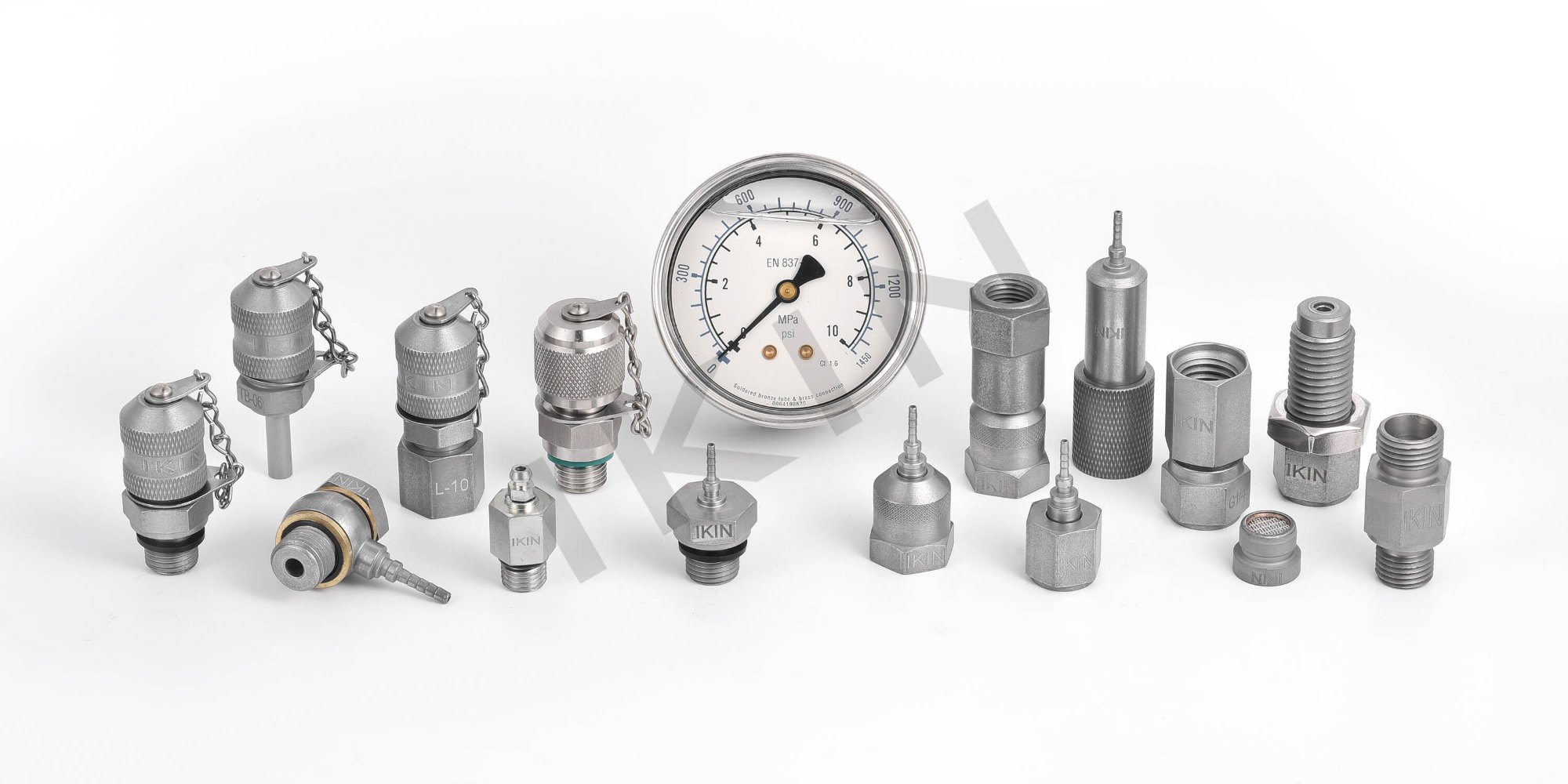
мқҙнӮЁ н”ҢлЈЁмқҙл“ң
вҖ”вҖ” мӨ‘көӯ мөңкі мқҳ 3 м ңмЎ°м—…мІҙ, мҲҳм•• н…ҢмҠӨнҠё нҸ¬мқёнҠё м „л¬ё
лӢ№мӢ мқҙ м°ҫмқ„ мҲҳмһҲлҠ” нҳңнғқ мқҙнӮЁм—җм„ң
кіөмһҘ к°ҖкІ©кіј лӮ®мқҖ moq
мӢ лў°н• мҲҳмһҲлҠ” н’Ҳм§Ҳ, Eaton, Hawee л“ұмқҳ кіөкёү м—…мІҙ
100% лҲ„м¶ң кІҖмӮ¬ мҷ„лЈҢ м „
3л…„ ліҙмҰқ
лҢҖлҹү л°°мҶЎмқҳ кІҪмҡ° мҳҒм—…мқј кё°мӨҖ 10мқј
minimess, stauff л“ұкіј к°ҷмқҖ лӢӨлҘё н”јнҢ…кіј мқјм№ҳ
мҪҳ м”° л””мһҗмқё кө¬мЎ°, м•Ҳм •м Ғмқҙкі кёҙ мҲҳлӘ…
л¬ҙлЈҢ мғҳн”Ң л°ӣкё°
2мқј м•Ҳм—җ
*мҡ°лҰ¬лҠ” к·Җн•ҳмқҳ кё°л°Җмқ„ мЎҙмӨ‘н•ҳл©° лӘЁл“ м •ліҙлҘј ліҙнҳён•©лӢҲлӢӨ.
Ikin FluidлҠ” 2020 Bauma Chinaм—җ м°ём„қн–ҲмҠөлӢҲлӢӨ.
2020 л…„ л°”мҡ° л§Ҳ м°ЁмқҙлӮҳ мғҒн•ҳмқҙлҘј лҸҢм•„ліҙм„ёмҡ”
11 мӣ” 27 мқј, 4 мқјк°„мқҳ Bauma China Shanghai 2020мқҙ м„ұкіөм ҒмңјлЎң мў…лЈҢлҗҳм—ҲмҠөлӢҲлӢӨ.
мҪ”лЎңлӮҳ 19мқҳ мҳҒн–Ҙм—җлҸ„ л¶Ҳкө¬н•ҳкі 4 мқј м—°мҶҚ 비к°Җ лӮҙлҰјм—җлҸ„ л¶Ҳкө¬н•ҳкі кұҙм„Ө кё°кі„ мӮ°м—…мқҳ м—ҙм •мқҖ м—¬м „нһҲ л©Ҳм¶ң мҲҳ м—ҶмҠөлӢҲлӢӨ.

мЈјмҡ” кұҙм„Ө кё°кі„ нҡҢмӮ¬л“ӨмқҖ к·ёл“Өмқҳ лҠҘл Ҙкіј н–үмӮ¬мқҳ м°Ҫмқҳм„ұмқ„ ліҙм—¬ мЈјм—Ҳкі кҙҖк°қмқ„ м••лҸ„н–ҲмҠөлӢҲлӢӨ.
м¶ңн’Ҳмһҗл“ӨмқҖ л°қмқҖ м җмқҙ л§Һм•„ лҚ”мҡұ мң мҫҢн•ҳкІҢ лҶҖлқјмӣҖмқ„ ліҙм—¬мЈјм—ҲмҠөлӢҲлӢӨ.
Sanyмқҳ "Online Bauma Show"к°Җ мғҲлЎңмҡҙ IP 235 м–ө мЈјл¬ём—җ м„ңлӘ…лҗҳм—ҲмҠөлӢҲлӢӨ!
мӢ м ңн’Ҳмқҳ лҚ°л·”лҠ”вҖңнҠёлҰ¬лӢҲнӢ° мҠӨнӢё кө°лӢЁвҖқмқҳ к°•м җмқ„ ліҙм—¬ мЈјм—ҲлӢӨ.
- нҸ¬кҙ„м Ғ мқё к·ңм •кіј к°ҖмһҘ кёҙ л¶җмқ„ к°–м¶ҳ C10 мӢңлҰ¬мҰҲ мғҲлЎңмҡҙ нҺҢн”„ нҠёлҹӯ
мғҲлЎңмҡҙ 100 нҶӨ лҢҖнҳ• көҙмӮӯкё° SY1250H
25 нҶӨм—җм„ң 800 нҶӨ нҒ¬л Ҳмқёк№Ңм§Җ Sanyмқҳ мөңмӢ мһҘ비 46 к°ң лӘЁлҚё
мҡҙм „мӢӨмқҙм—ҶлҠ” л¬ҙмқёлЎңл“ң лЎӨлҹ¬
м„ёкі„ мөңмҙҲмқҳ н”Ңлҹ¬к·ёмқё н•ҳмқҙлёҢлҰ¬л“ң нҸ¬мһҘкё°
м„ёкі„ мөңмҙҲмқҳ лҢҖлҹү мғқмӮ° м „кё° көҙмӮӯкё° л°Ҹ кё°нғҖ мҲҳмӢӯ к°Җм§Җ мөңмІЁлӢЁ м ңн’Ҳмқҙ лӘЁл‘җ м „л©ҙ кіөкІ©мқ„ л°ӣм•„ кҙҖк°қмқ„ лҶҖлқјкІҢн•©лӢҲлӢӨ!
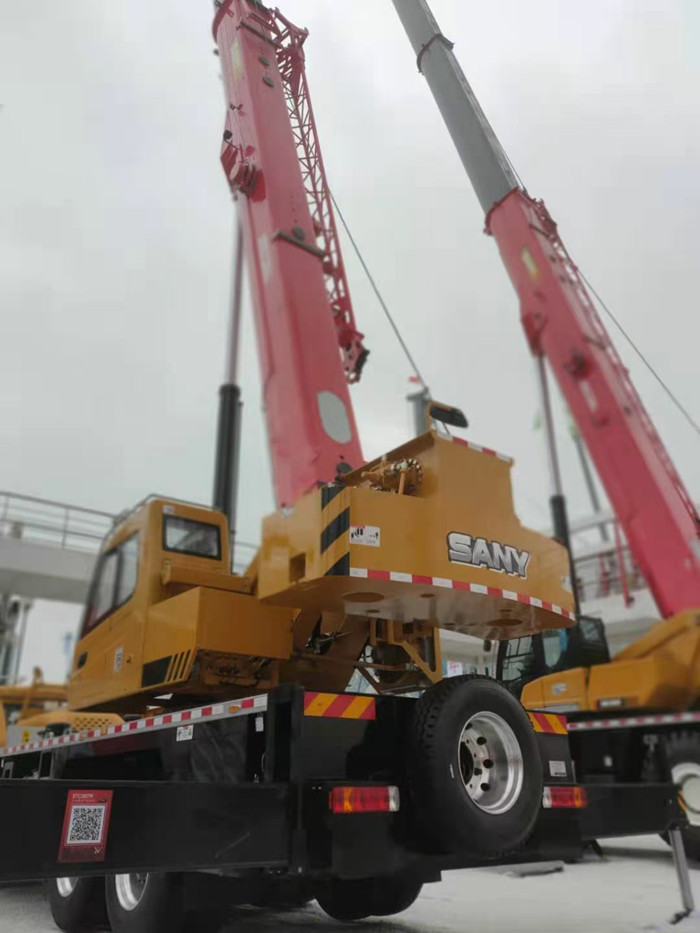
м•„лһҳ мӮ¬м§„мқҖ Bauma Exihibitionм—җм„ң Sany нҒ¬л Ҳмқё мң м•• мӢңмҠӨн…ңм—җ мӮ¬мҡ© лҗң IKINмқҳ н…ҢмҠӨнҠё м»Өн”Ң л§Ғмқ„ ліҙм—¬мӨҚлӢҲлӢӨ.
лӢӨмқҢмқҖ Sany л¶ҖмҠӨм—җм„ңмқҳ лқјмқҙлёҢ мҙ¬мҳҒмһ…лӢҲлӢӨ. мҡ°лҰ¬мқҳ IKINмһ…лӢҲлӢӨВ мң м•• н…ҢмҠӨнҠё м»Өн”Ң л§Ғ мқөмҲҷн•ң Sany нҒ¬л Ҳмқём—җм„ң.
Wмқҙмһҗнҳ• IKINВ мІҙм•ЎВ мӢ¬к°Ғн•ҳлӢӨ м„Өкі„ л°Ҹ м ңмЎ° мң м•• н…ҢмҠӨнҠёВ нҸ¬мқёнҠём—җмҠӨ.
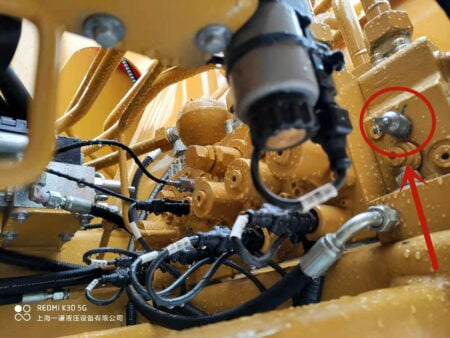
"мӨ‘көӯмқҳ м§Җнҳң"лЎң к°Җл“қ м°¬ XCMG "м ңмІ кө°лӢЁ"мңөн•©
XCMG к·ёлЈ№мқҖ кёҖлЎңлІҢ л””м§Җн„ё мҳҲ비 л¶Җн’Ҳ м„ң비мҠӨ м •ліҙ мӢңмҠӨн…ң (X-GSSлқјкі н•ҳлҠ” XCMG-Global Service System)мқ„ м¶ңмӢңн–ҲмҠөлӢҲлӢӨ.
л””м§Җн„ё, м§ҖлҠҘнҳ•, л¬ҙмқё ліҖнҷҳ л°Ҹ м—…к·ёл Ҳмқҙл“ңлҘј нҷҚліҙн•ҳмӢӯмӢңмҳӨ.
лӢӨмӢң л§җн•ҳм§Җл§Ң IKIN FLUID м••л Ҙ мІҙнҒ¬ н…ҢмҠӨнҠё нҸ¬мқёнҠёлҠ” XCMGмқҳ л¶ҖмҠӨ.

ZoomlionмқҖ мІ«лӮ 90 м–ө RMB мқҙмғҒмқҳ кі„м•Ҫмқ„ мІҙкІ°н–Ҳмңјл©°мқҙ мӢ м ңн’ҲмқҖ м„ёкі„м—җм„ң к°ҖмһҘ л§ҺмқҖ кІғмқ„ лӘ©кІ©н–ҲмҠөлӢҲлӢӨ.
- Zoomlionмқҳ м„ёкі„м—җм„ң к°ҖмһҘ лҶ’мқҖ мһҗмІҙ 추진 м§Ғм„ м•” кі мҶҢ мһ‘м—… н”Ңлһ«нҸј ZT68J
- ZoomlionмқҖ л§ҺмқҖ "лё”лһҷ кё°мҲ "м ңн’Ҳмқ„ м „мӢңн–ҲмҠөлӢҲлӢӨ.
- Zoomlionмқҳ мғҲлЎңмҡҙ н•ҳмқҙн…ҢнҒ¬ м ңн’ҲмқҖ лӘЁл‘җ к°•л Ҙн•ң R & D л°Ҹ нҳҒмӢ лҠҘл Ҙмқ„ ліҙм—¬мӨҚлӢҲлӢӨ.
лӢӨмқҢ к·ёлҰјмқҖ Zoomlion л¶ҖмҠӨм—җм„ң м°ҚмқҖ IKIN м••л Ҙ н…ҢмҠӨнҠё нҸ¬мқёнҠёмқҳ м Ғмҡ©мқ„ ліҙм—¬мӨҚлӢҲлӢӨ.
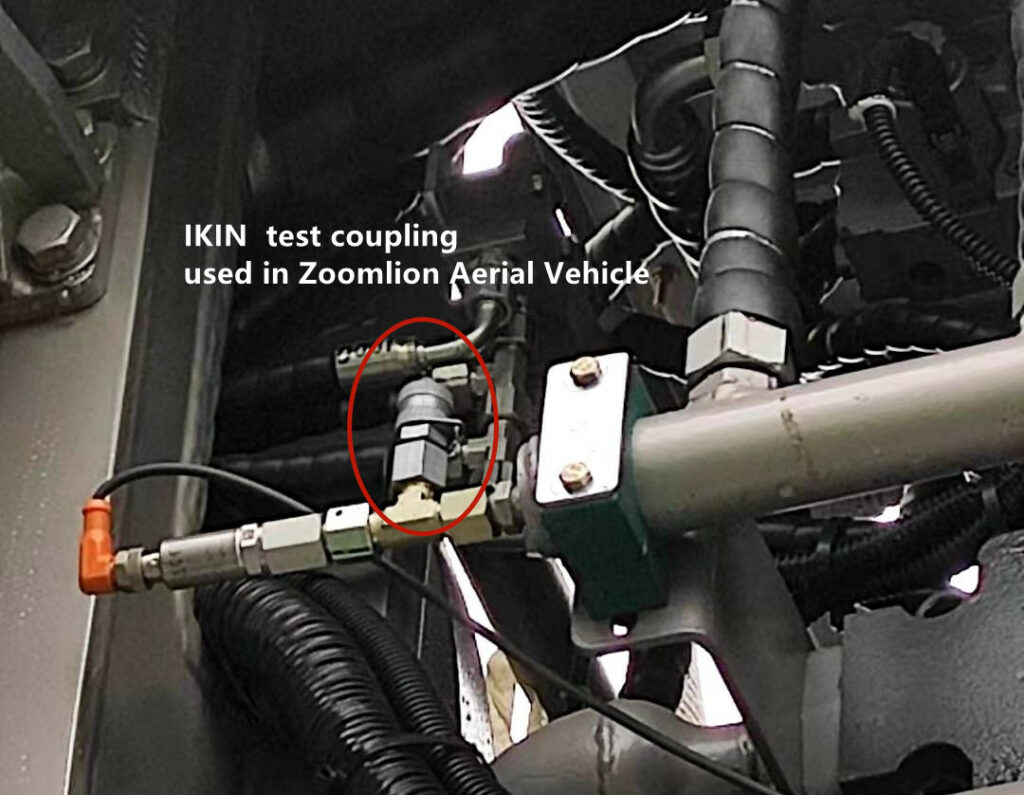
лҳҗн•ң м•„лһҳлҠ” лӢӨлҘё л§ҺмқҖ кі к°қ л¶ҖмҠӨ м „мӢңнҡҢм—җм„ң мӮ¬мҡ©лҗҳлҠ” м••л Ҙ н…ҢмҠӨнҠё м»Өн”Ң л§Ғмһ…лӢҲлӢӨ.
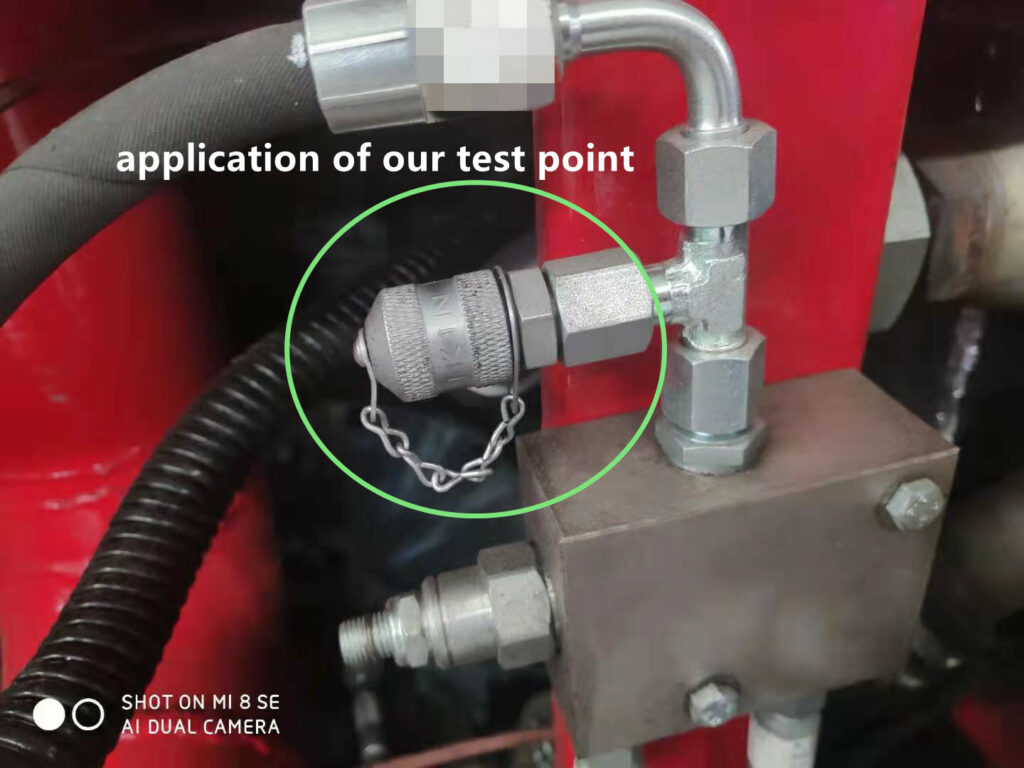

м „м—јлі‘мқҳ мҳҒн–Ҙмқ„ л°ӣм•„ 2018 л…„ліҙлӢӨ мҮјм—җ м°ём—¬н•ҳлҠ” кі к°қ мҲҳк°Җ к°җмҶҢн–Ҳм§Җл§Ң м—¬м „нһҲ л§ҺмқҖ кі к°қмқҙ нҢҢнӢ°лҘј м°ҫлҠ”лӢӨ.
IKINмқҙ м •м„ұмҠӨлҹҪкІҢ мӨҖ비н•ң кіјн•ҷкіј кё°мҲ мқҳ к°җк°Ғмқ„ лӢҙмқҖ м „л¬ё м „мӢңнҡҢлҠ” л§ҺмқҖ кі к°қмқҳ кҙҖмӢ¬мқ„ лҒҢм—ҲмҠөлӢҲлӢӨ.
IKIN л¶ҖмҠӨ


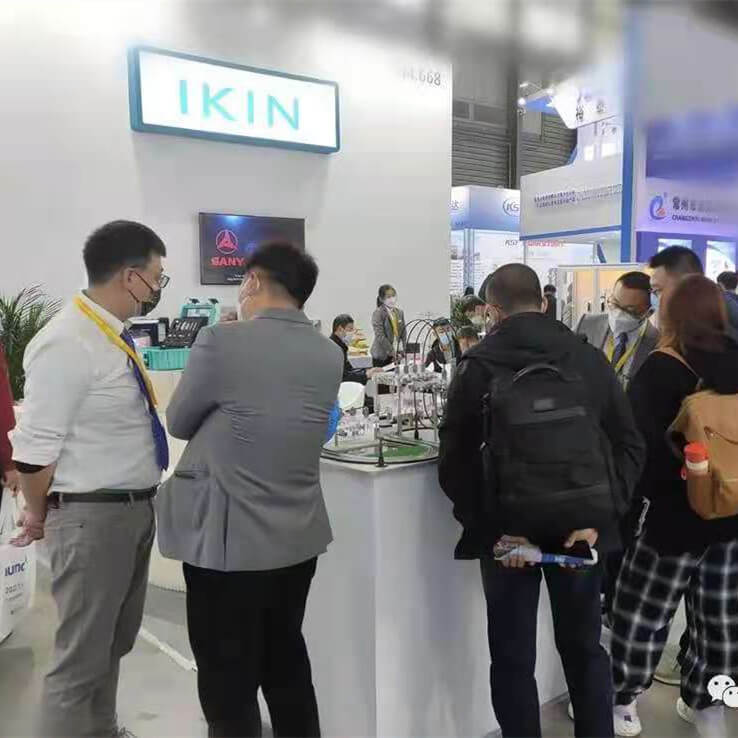
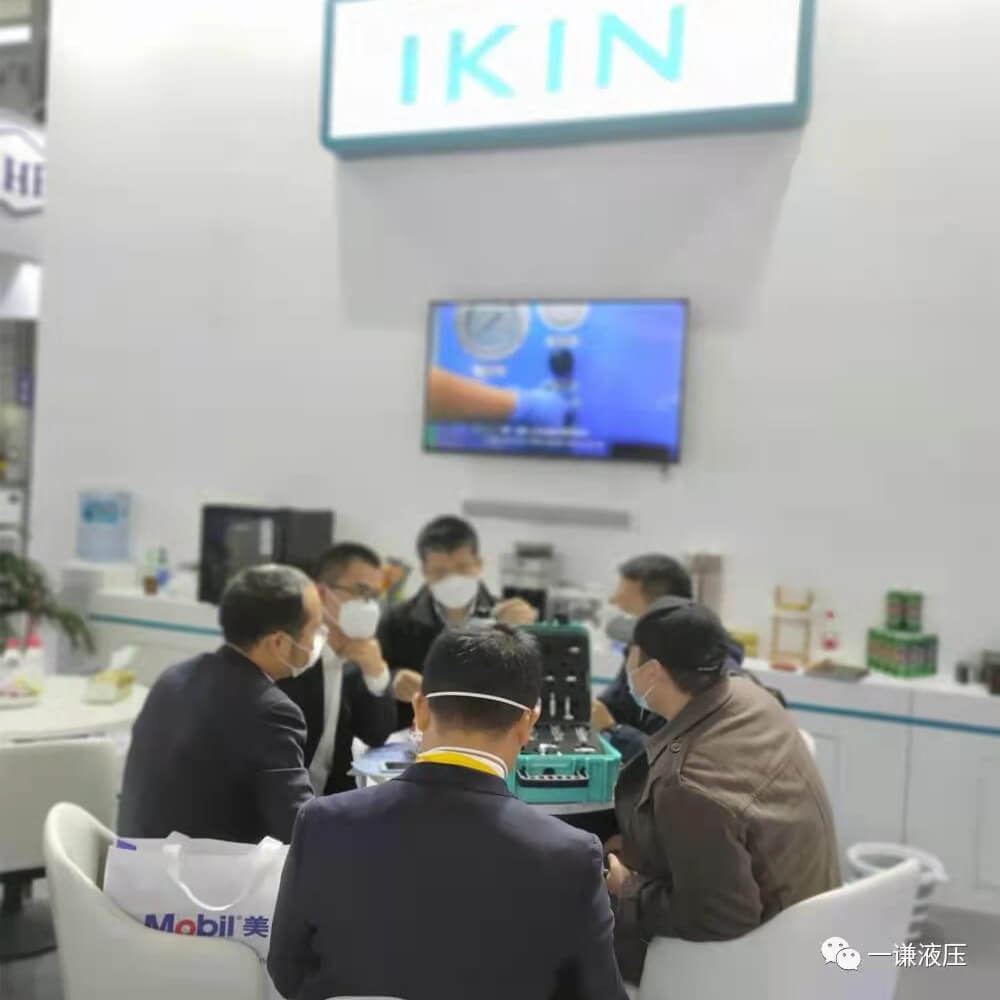
- мӨ‘көӯ м ңмЎ°м—…мІҙ
- Sany Crane, XCMG Group, Zoomlion, GE л“ұ inbroad кіөкёү
- hydrauli н…ҢмҠӨнҠё н”јнҢ… м „л¬ё
- м•Ҳм •м Ғмқҙкі л№„мҡ©мқҙ л§Һмқҙ л“ңлҠ” м„ұлҠҘ
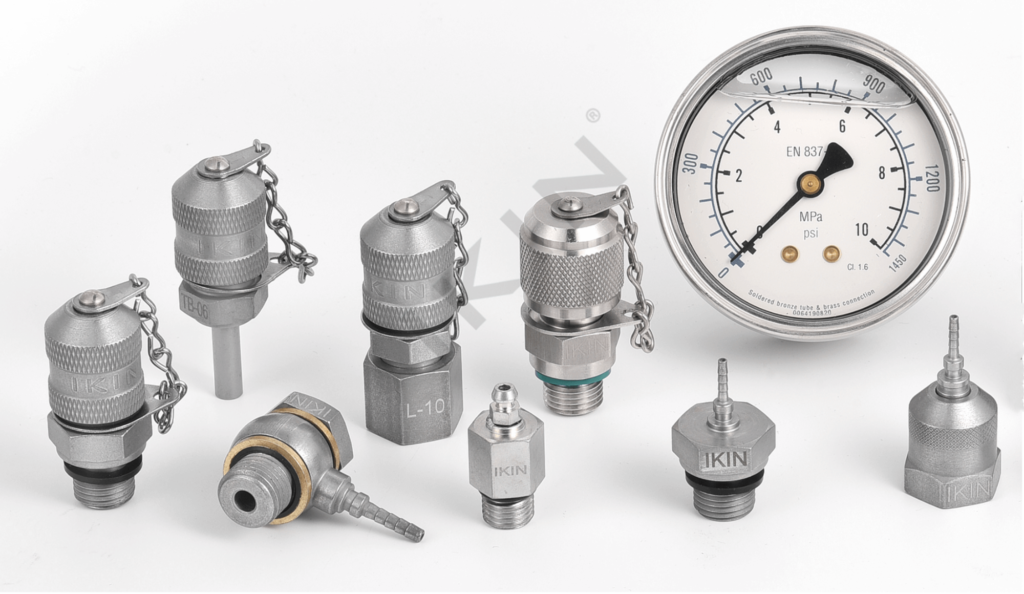
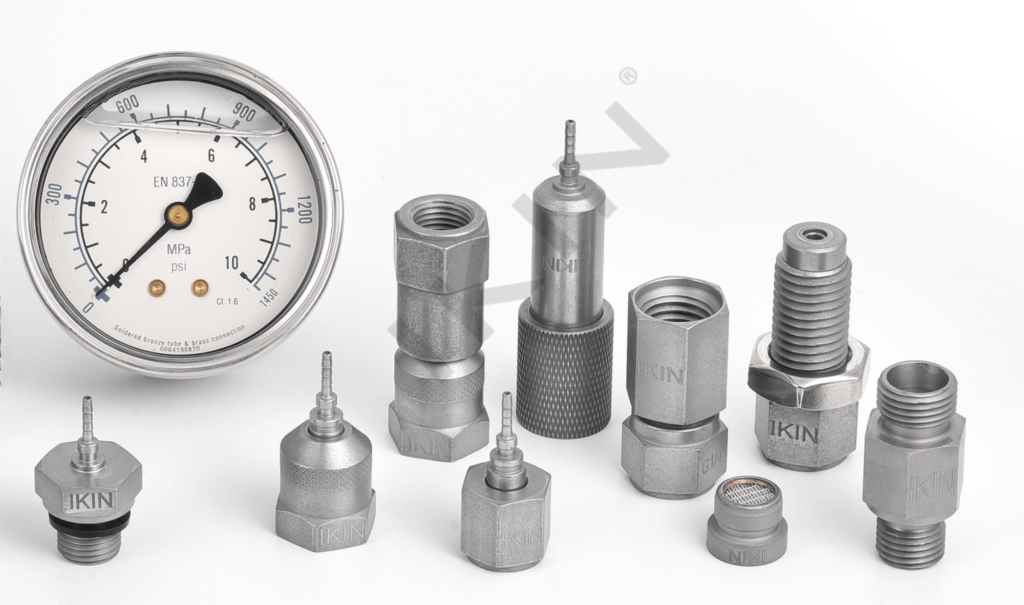
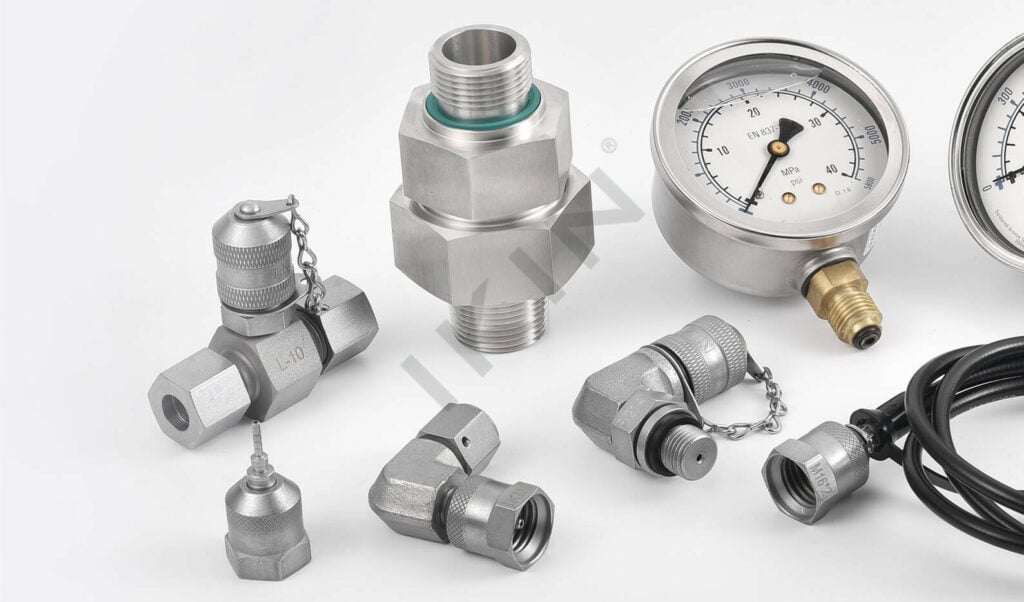
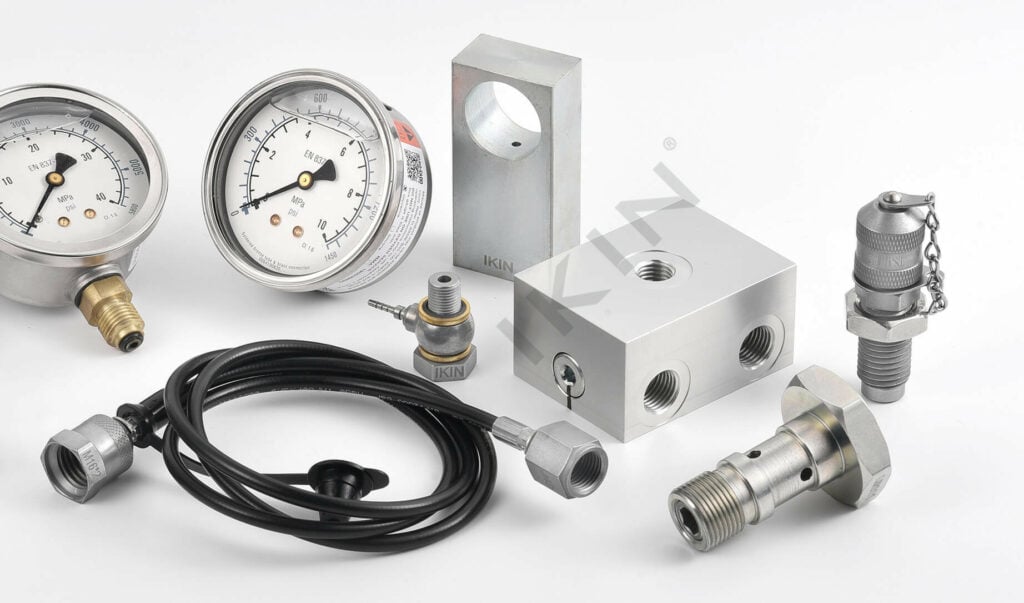
мң м•• нҳёмҠӨ н”јнҢ…мқҳ мң нҳ•кіј кі мһҘ 분м„қмқҖ л¬ҙм—Үмһ…лӢҲк№Ң?
мӨ‘көӯ 3лҢҖ м ңмЎ°м—…мІҙ
мң м•• н…ҢмҠӨнҠё нҸ¬мқёнҠё нҳёмҠӨ кіөкёү м—…мІҙ
SGS мҠ№мқё
мң м•• нҳёмҠӨ м–ҙм…Ҳлё”лҰ¬ л°Ҹ н”јнҢ…мқҳ мң нҳ•мқҖ л¬ҙм—Үмһ…лӢҲк№Ң?
мӨ‘көӯ кұҙм„Ө кё°кі„мқҳ кёүмҶҚн•ң л°ңм „мңјлЎң мң м•• нҳёмҠӨ м–ҙм…Ҳлё”лҰ¬мқҳ мӢ лў°м„ұмқҖ м—…кі„м—җм„ң к°ҖмһҘ мҡ°л ӨлҗҳлҠ” л¬ём ң мӨ‘ н•ҳлӮҳк°Җлҗҳм—ҲмҠөлӢҲлӢӨ.
мң м•• нҳёмҠӨ м–ҙм…Ҳлё”лҰ¬лҠ” мң м•• м „мҶЎ мӢңмҠӨн…ңмқҳ кё°ліё мҡ”мҶҢмһ…лӢҲлӢӨ. нҳёмҠӨ м–ҙм…Ҳлё”лҰ¬мқҳ н’Ҳм§ҲмқҖ мң м•• мӢңмҠӨн…ңкіј л©”мқё 엔진мқҳ м„ұлҠҘм—җ м§Ғм ‘м Ғмқё мҳҒн–Ҙмқ„ лҜём№©лӢҲлӢӨ. нҳёмҠӨ м–ҙм…Ҳлё”лҰ¬ кі мһҘмқҳ мқјл¶ҖлҠ” мЎ°мқёнҠё мҪ”м–ҙмқҳ кө¬мЎ°м—җм„ң 비лЎҜлҗ©лӢҲлӢӨ.
нҳёмҠӨ м»Өл„Ҙн„° мҪ”м–ҙлҠ” мЈјлЎң SAE н‘ңмӨҖ, ISO н‘ңмӨҖ л°Ҹ KES н‘ңмӨҖмқ„ кё°л°ҳмңјлЎңн•ҳлҠ” м—°кІ° кө¬мЎ°мһ…лӢҲлӢӨ. лӢӨлҘё л¶Җ분мқҖ м••м°© л¶Җ (кј¬лҰ¬ кө¬мЎ°)мқҳ кө¬мЎ°лЎң, нҳёмҠӨмқҳ мҷёл¶Җ мһ¬нӮ·кіј лӮҙл¶Җ л°Ҹ мҷёл¶Җ кі л¬ҙмёөкіј мқјм№ҳн•ҳм—¬ нҳёмҠӨ м–ҙм…Ҳлё”лҰ¬мқҳ м„ұлҠҘмқ„ 충мЎұмӢңнӮӨкё° мң„н•ҙ мӢ лў°н• мҲҳмһҲлҠ” м••м°© ліҖнҳ•мқ„ нҳ•м„ұн•©лӢҲлӢӨ.
мқҙмқҢ мӢ¬ м••м°© л¶Җмқҳ кө¬мЎ°к°Җ нҳёмҠӨмқҳ мў…лҘҳм—җ л”°лқј м„Өкі„к°Җ л¶Җм Ғм Ҳ н• кІҪмҡ° м ңн’Ҳ н’Ҳм§Ҳ л¬ём ңк°Җ нҒ¬кІҢ л°ңмғқн•©лӢҲлӢӨ.
л”°лқјм„ң лӢӨлҘё мһ‘м—… нҷҳкІҪм—җм„ң нҳёмҠӨм—җ лҢҖн•ҙ м„ нғқлҗң (м„Өкі„лҗң) мЎ°мқёнҠё мҪ”м–ҙмқҳ мң нҳ•лҸ„ лӢӨлҘҙл©° н•©лҰ¬м Ғмқё м„Өкі„лЎң кі мһҘ л°ңмғқмқ„ н”јн•ҳкұ°лӮҳ мӨ„мқј мҲҳ мһҲмҠөлӢҲлӢӨ.
1. нҳёмҠӨ н”јнҢ…мқҳ мў…лҘҳмҷҖ нҠ№м§•
м „мІҙ нҳёмҠӨ мЎ°лҰҪ мӮ°м—… м „л°ҳм—җ кұёміҗ нҳёмҠӨ мЎ°мқёнҠёмҷҖ нҳёмҠӨ мӮ¬мқҙм—җлҠ” мЈјлЎң л‘җ к°Җм§Җ мң нҳ•мқҳ м•Ҳм •м Ғмқё м—°кІ°мқҙ мһҲмҠөлӢҲлӢӨ. мҰү, мҷ„м „ ліҙлҘҳ нҳёмҠӨ мЎ°мқёнҠёмҷҖ 분лҰ¬нҳ• нҳёмҠӨ мЎ°мқёнҠёмһ…лӢҲлӢӨ.
м „мІҙ м••м°© мЎ°мқёнҠёлҠ” м••м°©кё°мқҳ 8 л¶Җ분 м••м°© лӘЁл“Ҳмқҙ мЎ°мқёнҠё мҪ”м–ҙ, нҳёмҠӨ л°Ҹ м•„мҡ°н„° мһ¬нӮ·мқ„ мЎ°лҰҪ н•ң нӣ„ нҳёмҠӨ мЎ°мқёнҠёлҘј м–ҙлҠҗ м •лҸ„ к· мқјн•ҳкІҢ м••м°©н•ҳм—¬ нҳёмҠӨ мЎ°мқёнҠёмҷҖ нҳёмҠӨк°Җ м „мІҙк°ҖлҗҳлҸ„лЎқн•ҳлҠ” кіөм •мһ…лӢҲлӢӨ. .
нғҲм°©мӢқ нҳёмҠӨ м»Өл„Ҙн„°лҠ” мҷёл¶Җ мҪҳкіј м»Өл„Ҙн„° мҪ”м–ҙк°ҖмһҲлҠ” м»Өл„Ҙн„° мҪ”м–ҙлҘј нҶөн•ҙ нҳёмҠӨлҘј 압축н•ҳм—¬ нҳёмҠӨк°Җ м»Өл„Ҙн„° мҠ¬лҰ¬лёҢмқҳ лӮҙл¶Җ мҪҳм—җ к°Җк№ҢмӣҢм ё лҚ” нҒ° кІ°н•©л Ҙмқ„ к°Җ진 м—°кІ°мқ„ нҳ•м„ұн•©лӢҲлӢӨ.
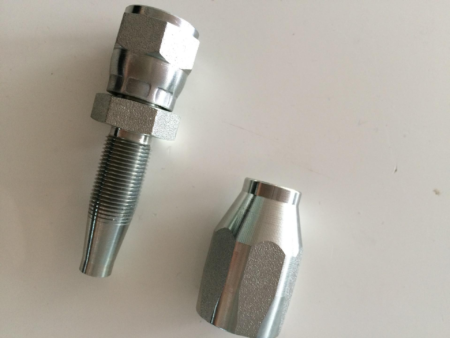
1.1 нҳёмҠӨ м••м°© нҳ•нғң л°Ҹ нҠ№м„ұ
нҳёмҠӨ ліҙлҘҳ мң нҳ•мқҖ мЈјлЎң нҳёмҠӨ мң нҳ• (лҳҗлҠ” лӮҙл¶Җ л°Ҹ мҷёл¶Җ кі л¬ҙмқҳ нҒ¬кё°)кіј нҳёмҠӨ м–ҙм…Ҳлё”лҰ¬мқҳ м••л Ҙ нҷҳкІҪм—җ л”°лқј лӢӨлҰ…лӢҲлӢӨ.
мЈјлЎң 비 н•„л§Ғ кі л¬ҙ м••м°©, н•„л§Ғ мҷёл¶Җ кі л¬ҙ м••м°©, лӮҙл¶Җ л°Ҹ мҷёл¶Җ кі л¬ҙ н•„л§Ғ м••м°©мқҳ м„ё к°Җм§Җ лІ”мЈјлЎң лӮҳлү©лӢҲлӢӨ.
к°Ғ мң нҳ•мқҳ нҠ№м„ұмқҖ лӢӨмқҢкіј к°ҷмҠөлӢҲлӢӨ.
(1) Non-peeling л°Ҹ crimping : нҳёмҠӨмқҳ лӮҙл¶Җ л°Ҹ мҷёл¶Җ кі л¬ҙлҘј лІ—кёё н•„мҡ”к°Җ м—Ҷмңјл©° нҳёмҠӨ м„Өм№ҳ нӣ„ м••м°©мңјлЎң м ңн’Ҳмқ„ мҷ„м„ұ н• мҲҳ мһҲмҠөлӢҲлӢӨ. мІҳлҰ¬ кё°мҲ мқҖ к°„лӢЁн•©лӢҲлӢӨ.
мқҙлҹ¬н•ң мң нҳ•мқҳ нҒ¬лҰј н•‘мқҖ GB / T3683, EN853 л°Ҹ SAE н‘ңмӨҖкіј к°ҷмқҙ мғҒлҢҖм ҒмңјлЎң м–ҮмқҖ мҷёл¶Җ кі л¬ҙ мёөмқҙмһҲлҠ” к°•мІ мҷҖмқҙм–ҙ лёҢл Ҳмқҙл“ң нҳёмҠӨм—җ мһҗмЈј мӮ¬мҡ©лҗ©лӢҲлӢӨ.
(2) мҠӨнҠёлҰ¬н•‘ л°Ҹ м••м°© : нҳёмҠӨмқҳ мҷёл¶Җ кі л¬ҙмёөмқ„ мқјм • кёёмқҙ (мҷёл¶Җ кі л¬ҙмёөмқҙ л‘җкәјмӣҖ)лЎң лІ—кІЁм•јн•ҳлҠ”лҚ°, мқҙлҠ” к°•м„ ліҙк°•мёөмқҙмқҙ нҷҲкіј лҚ” мһҳ м ‘мҙүн•ҳлҸ„лЎқн•ҳлҠ” лҚ° мӮ¬мҡ©лҗ©лӢҲлӢӨ. мһҗмј“.
мҷёл Ҙм—җ мқҳн•ҙ мһ¬нӮ·мқҙ мҲҳ축 л°Ҹ ліҖнҳ•лҗҳл©ҙ к°•мІ мҷҖмқҙм–ҙк°Җ лӢЁлӢЁнһҲ кі м •лҗҳм–ҙ кі м•• 충격мқ„л°ӣмқ„ л•Ң мЎ°мқёнҠёк°Җ л№ м§ҖлҠ” кІғмқ„ л°©м§Җн•©лӢҲлӢӨ.
мқҙлҹ¬н•ң мң нҳ•мқҳ м••м°©мқҖ мЈјлЎң GB / T10544, EN856 л°Ҹ SAE н‘ңмӨҖкіј к°ҷмқҖ к°•м„ к¶Ңм„ нҳёмҠӨм—җ м Ғмҡ©лҗ©лӢҲлӢӨ.
(3) лӮҙл¶Җ л°Ҹ мҷёл¶Җ кі л¬ҙ мҠӨнҠёлҰ¬н•‘ л°Ҹ нҒ¬лҰј н•‘ : лӮҙл¶Җ л°Ҹ мҷёл¶Җ кі л¬ҙ мёөмқ„ мқјм • кёёмқҙ (лӮҙл¶Җ л°Ҹ мҷёл¶Җ кі л¬ҙмқҳ л‘җк»ҳ)лЎң лІ—кІЁм•јн•ҳл©° к°•м„ мёөкіј лӮҙл¶Җ кі л¬ҙ мёөмқҙ л¬јкІ° лӘЁм–‘мңјлЎң м••м¶ңлҗ©лӢҲлӢӨ. мқјл°ҳм ҒмңјлЎң GB / T10544, EN856-R13, R15 л“ұм—җ м Ғн•©н•©лӢҲлӢӨ. мӮ¬м–‘ (32 к°ң мқҙмғҒ 32 к°ң нҸ¬н•Ё) мҙҲкі м•• к°•м„ лӮҳм„ нҳ• нҳёмҠӨ.
1.2. мӣҗмІң 징мҲҳ нҳ• нҳёмҠӨ м»Өл„Ҙн„°
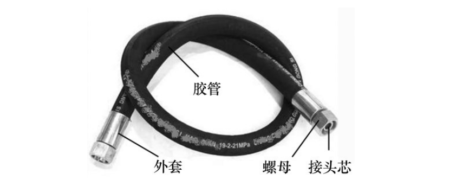
мӣҗмІң 징мҲҳ нҳ• нҳёмҠӨ мЎ°мқёнҠёлҠ” мЈјлЎң мЎ°мқёнҠё мҪ”м–ҙ, мҷёл¶Җ мһ¬нӮ· (л„ҲнҠёлҠ” мҳөм…ҳ л¶Җн’Ҳ) л°Ҹ кё°нғҖ л¶Җн’ҲмңјлЎң кө¬м„ұлҗ©лӢҲлӢӨ.
1) кіөлҸҷ н•өмӢ¬ мһ¬лЈҢ, мң нҳ• л°Ҹ нҠ№м„ұ
мқјл°ҳм ҒмңјлЎң мЎ°мқёнҠё мҪ”м–ҙм—җ мӮ¬мҡ©лҗҳлҠ” мһ¬лЈҢлҠ” 20, 35 л°Ҹ 45 к°•мІ мһ…лӢҲлӢӨ. м§Ғм„ мЎ°мқёнҠё мҪ”м–ҙмқҳ кІҪмҡ° ліҖнҳ•м—җ к°•н•ң м Җн•ӯл Ҙмқ„ к°Җ진 35 л°Ҹ 45 к°•мІ мқҙ мһҗмЈј мӮ¬мҡ©лҗ©лӢҲлӢӨ. лІӨл”© мЎ°мқёнҠё мҪ”м–ҙмқҳ м ңмЎ° к°ҖлҠҘм„ұмқ„ кі л Өн• л•Ң мқјл°ҳм ҒмңјлЎң 20 лҳҗлҠ” 35 к°•мқҙ мӮ¬мҡ©лҗ©лӢҲлӢӨ.
м—ҙк°„ көҪнһҳ кё°мҲ мқҙ лҢҖмӨ‘нҷ”лҗЁм—җ л”°лқј 35 к°•кіј 45 к°•мқ„ нҢ”кҝҲм№ҳ мЎ°мқёнҠё мҪ”м–ҙм—җлҸ„ мӮ¬мҡ©н• мҲҳ мһҲмҠөлӢҲлӢӨ.
мЎ°мқёнҠё мҪ”м–ҙмқҳ кө¬мЎ°м Ғ нҠ№м„ұмқҖ нҳёмҠӨ м••м°© нҳ•нғңмҷҖ л°Җм ‘н•ң кҙҖл Ёмқҙ мһҲмңјл©° кө¬мЎ°мқҳ к·ңм№ҷм„ұм—җ л”°лқј мЎ°мқёнҠё мҪ”м–ҙмқҳ мң нҳ•мқҖ нҒ¬кІҢ м§Җк·ёмһ¬к·ё кө¬мЎ°, м§ҒмӮ¬к°Ғнҳ• кө¬мЎ°, лӮҙл¶Җ мһ кёҲ кө¬мЎ° л“ұмңјлЎң кө¬л¶„лҗ©лӢҲлӢӨ.
(1) мқјл°ҳм ҒмңјлЎң лҜёлҠҳ мң нҳ•мңјлЎң м•Ңл Ө진 нҶұлӢҲ кө¬мЎ° мЎ°мқёнҠё мҪ”м–ҙлҠ” мЈјлЎң нҶұлӢҲ нҷҲмңјлЎң кө¬м„ұлҗҳл©° л№—ліҖкіј 축 мӮ¬мқҙмқҳ к°ҒлҸ„лҠ” мқјл°ҳм ҒмңјлЎң 20 В° мқҙн•ҳмһ…лӢҲлӢӨ.
м„ё л Ҳмқҙм…ҳмқҳ мғҒлӢЁмқҖ мӣҗ нҳёнҳ• лҳҗлҠ” нҸүнҸүн•ҳл©°, м„ё л Ҳмқҙм…ҳмқҳ нҸүл©ҙкіј 짧мқҖл©ҙмқҖ л§ӨлҒ„лҹҪкі л‘Ҙк·ј лӘЁм„ңлҰ¬ (0.2 ~ 0.5mm)лЎң мЎ°лҰҪ л°Ҹ м••м°©мӢң нҳёмҠӨмқҳ лӮҙл¶Җ кі л¬ҙмёө мҶҗмғҒмқ„ л°©м§Җн•©лӢҲлӢӨ.
мқҙ кө¬мЎ°мқҳ мЎ°мқёнҠё мҪ”м–ҙлҠ” к°•н•ң л°Җлҙү л°Ҹ мқёл°ң м Җн•ӯмқ„ к°Җм§Җл©° мЈјлЎң к°•мІ к¶Ңм„ кі л¬ҙ нҳёмҠӨм—җ мӮ¬мҡ©лҗ©лӢҲлӢӨ.
(2) м§ҒмӮ¬к°Ғнҳ• кө¬мЎ° мЎ°мқёнҠё мҪ”м–ҙ : мЈјлЎң м—¬лҹ¬ к°ңмқҳ м§ҒмӮ¬к°Ғнҳ• нҷҲмңјлЎң кө¬м„ұлҗҳл©° 5 ~ 7 нҷҲ л°”л””лҠ” л°Җлҙү нҷҲмқ„ нҳ•м„ұн•ҳл©° нҷҲ к№ҠмқҙлҠ” мқјл°ҳм ҒмңјлЎң 0.3 ~ 0.6mmмһ…лӢҲлӢӨ.
нҷҲ мғҒлӢЁкіј нҷҲ н•ҳлӢЁ мӮ¬мқҙмқҳ м „мқҙ н‘ңл©ҙмқҖ мқјл°ҳм ҒмңјлЎң л°ҳкІҪ 0.1mm ~ 0.3mmмқҳ л‘Ҙк·ј лӘЁм„ңлҰ¬лЎң л§ӨлҒ„ лҹҪмҠөлӢҲлӢӨ.
мЎ°лҰҪ л°Ҹ м••м°© мӨ‘м—җ нҳёмҠӨмқҳ лӮҙл¶Җ кі л¬ҙмёө мҶҗмғҒмқ„ л°©м§Җн•ҳмӢӯмӢңмҳӨ. м „мІҙ кө¬мЎ°лҠ” к°„лӢЁн•ҳкі л°Җлҙү м„ұлҠҘмқҙ мҡ°мҲҳн•ҳм§Җл§Ң мқёл°ң м Җн•ӯмқҙ лӮ®мҠөлӢҲлӢӨ. мқҙ кө¬мЎ°лҠ” мҲҳм§Җ нҳёмҠӨ, к°•м„ нҺёмЎ° нҳёмҠӨ л°Ҹ кё°нғҖ мң нҳ•мқҳ нҳёмҠӨм—җ мһҗмЈј мӮ¬мҡ©лҗ©лӢҲлӢӨ.
мқјл°ҳм ҒмңјлЎң мЎ°мқёнҠё мҪ”м–ҙм—җ мӮ¬мҡ©лҗҳлҠ” мһ¬лЈҢлҠ” 20, 35 л°Ҹ 45 к°•мІ мһ…лӢҲлӢӨ. м§Ғм„ мЎ°мқёнҠё мҪ”м–ҙмқҳ кІҪмҡ° ліҖнҳ•м—җ к°•н•ң м Җн•ӯл Ҙмқ„ к°Җ진 35 л°Ҹ 45 к°•мІ мқҙ мһҗмЈј мӮ¬мҡ©лҗ©лӢҲлӢӨ. лІӨл”© мЎ°мқёнҠё мҪ”м–ҙмқҳ м ңмЎ° к°ҖлҠҘм„ұмқ„ кі л Өн• л•Ң мқјл°ҳм ҒмңјлЎң 20 лҳҗлҠ” 35 к°•мқҙ мӮ¬мҡ©лҗ©лӢҲлӢӨ.
м—ҙк°„ көҪнһҳ кё°мҲ мқҙ лҢҖмӨ‘нҷ”лҗЁм—җ л”°лқј 35 к°•кіј 45 к°•мқ„ нҢ”кҝҲм№ҳ мЎ°мқёнҠё мҪ”м–ҙм—җлҸ„ мӮ¬мҡ©н• мҲҳ мһҲмҠөлӢҲлӢӨ.
мЎ°мқёнҠё мҪ”м–ҙмқҳ кө¬мЎ°м Ғ нҠ№м„ұмқҖ нҳёмҠӨ м••м°© нҳ•нғңмҷҖ л°Җм ‘н•ң кҙҖл Ёмқҙ мһҲмңјл©° кө¬мЎ°мқҳ к·ңм№ҷм„ұм—җ л”°лқј мЎ°мқёнҠё мҪ”м–ҙмқҳ мң нҳ•мқҖ нҒ¬кІҢ м§Җк·ёмһ¬к·ё кө¬мЎ°, м§ҒмӮ¬к°Ғнҳ• кө¬мЎ°, лӮҙл¶Җ мһ кёҲ кө¬мЎ° л“ұмңјлЎң кө¬л¶„лҗ©лӢҲлӢӨ.
мӨ‘көӯ кұҙм„Ө кё°кі„мқҳ кёүмҶҚн•ң л°ңм „мңјлЎң мң м•• нҳёмҠӨ м–ҙм…Ҳлё”лҰ¬мқҳ мӢ лў°м„ұмқҖ м—…кі„м—җм„ң к°ҖмһҘ мҡ°л ӨлҗҳлҠ” л¬ём ң мӨ‘ н•ҳлӮҳк°Җлҗҳм—ҲмҠөлӢҲлӢӨ.
мң м•• нҳёмҠӨ м–ҙм…Ҳлё”лҰ¬лҠ” мң м•• м „мҶЎ мӢңмҠӨн…ңмқҳ кё°ліё мҡ”мҶҢмһ…лӢҲлӢӨ. нҳёмҠӨ м–ҙм…Ҳлё”лҰ¬мқҳ н’Ҳм§ҲмқҖ мң м•• мӢңмҠӨн…ңкіј л©”мқё 엔진мқҳ м„ұлҠҘм—җ м§Ғм ‘м Ғмқё мҳҒн–Ҙмқ„ лҜём№©лӢҲлӢӨ. нҳёмҠӨ м–ҙм…Ҳлё”лҰ¬ кі мһҘмқҳ мқјл¶ҖлҠ” мЎ°мқёнҠё мҪ”м–ҙмқҳ кө¬мЎ°м—җм„ң 비лЎҜлҗ©лӢҲлӢӨ.
нҳёмҠӨ м»Өл„Ҙн„° мҪ”м–ҙлҠ” мЈјлЎң SAE н‘ңмӨҖ, ISO н‘ңмӨҖ л°Ҹ KES н‘ңмӨҖмқ„ кё°л°ҳмңјлЎңн•ҳлҠ” м—°кІ° кө¬мЎ°мһ…лӢҲлӢӨ. лӢӨлҘё л¶Җ분мқҖ м••м°© л¶Җ (кј¬лҰ¬ кө¬мЎ°)мқҳ кө¬мЎ°лЎң, нҳёмҠӨмқҳ мҷёл¶Җ мһ¬нӮ·кіј лӮҙл¶Җ л°Ҹ мҷёл¶Җ кі л¬ҙмёөкіј мқјм№ҳн•ҳм—¬ нҳёмҠӨ м–ҙм…Ҳлё”лҰ¬мқҳ м„ұлҠҘмқ„ 충мЎұмӢңнӮӨкё° мң„н•ҙ мӢ лў°н• мҲҳмһҲлҠ” м••м°© ліҖнҳ•мқ„ нҳ•м„ұн•©лӢҲлӢӨ.
мқҙмқҢ мӢ¬ м••м°© л¶Җмқҳ кө¬мЎ°к°Җ нҳёмҠӨмқҳ мў…лҘҳм—җ л”°лқј м„Өкі„к°Җ л¶Җм Ғм Ҳ н• кІҪмҡ° м ңн’Ҳ н’Ҳм§Ҳ л¬ём ңк°Җ нҒ¬кІҢ л°ңмғқн•©лӢҲлӢӨ.
л”°лқјм„ң лӢӨлҘё мһ‘м—… нҷҳкІҪм—җм„ң нҳёмҠӨм—җ лҢҖн•ҙ м„ нғқлҗң (м„Өкі„лҗң) мЎ°мқёнҠё мҪ”м–ҙмқҳ мң нҳ•лҸ„ лӢӨлҘҙл©° н•©лҰ¬м Ғмқё м„Өкі„лЎң кі мһҘ л°ңмғқмқ„ н”јн•ҳкұ°лӮҳ мӨ„мқј мҲҳ мһҲмҠөлӢҲлӢӨ.
мӨ‘көӯ кұҙм„Ө кё°кі„мқҳ кёүмҶҚн•ң л°ңм „мңјлЎң мң м•• нҳёмҠӨ м–ҙм…Ҳлё”лҰ¬мқҳ мӢ лў°м„ұмқҖ м—…кі„м—җм„ң к°ҖмһҘ мҡ°л ӨлҗҳлҠ” л¬ём ң мӨ‘ н•ҳлӮҳк°Җлҗҳм—ҲмҠөлӢҲлӢӨ.
мң м•• нҳёмҠӨ м–ҙм…Ҳлё”лҰ¬лҠ” мң м•• м „мҶЎ мӢңмҠӨн…ңмқҳ кё°ліё мҡ”мҶҢмһ…лӢҲлӢӨ. нҳёмҠӨ м–ҙм…Ҳлё”лҰ¬мқҳ н’Ҳм§ҲмқҖ мң м•• мӢңмҠӨн…ңкіј л©”мқё 엔진мқҳ м„ұлҠҘм—җ м§Ғм ‘м Ғмқё мҳҒн–Ҙмқ„ лҜём№©лӢҲлӢӨ. нҳёмҠӨ м–ҙм…Ҳлё”лҰ¬ кі мһҘмқҳ мқјл¶ҖлҠ” мЎ°мқёнҠё мҪ”м–ҙмқҳ кө¬мЎ°м—җм„ң 비лЎҜлҗ©лӢҲлӢӨ.
нҳёмҠӨ м»Өл„Ҙн„° мҪ”м–ҙлҠ” мЈјлЎң SAE н‘ңмӨҖ, ISO н‘ңмӨҖ л°Ҹ KES н‘ңмӨҖмқ„ кё°л°ҳмңјлЎңн•ҳлҠ” м—°кІ° кө¬мЎ°мһ…лӢҲлӢӨ. лӢӨлҘё л¶Җ분мқҖ м••м°© л¶Җ (кј¬лҰ¬ кө¬мЎ°)мқҳ кө¬мЎ°лЎң, нҳёмҠӨмқҳ мҷёл¶Җ мһ¬нӮ·кіј лӮҙл¶Җ л°Ҹ мҷёл¶Җ кі л¬ҙмёөкіј мқјм№ҳн•ҳм—¬ нҳёмҠӨ м–ҙм…Ҳлё”лҰ¬мқҳ м„ұлҠҘмқ„ 충мЎұмӢңнӮӨкё° мң„н•ҙ мӢ лў°н• мҲҳмһҲлҠ” м••м°© ліҖнҳ•мқ„ нҳ•м„ұн•©лӢҲлӢӨ.
мқҙмқҢ мӢ¬ м••м°© л¶Җмқҳ кө¬мЎ°к°Җ нҳёмҠӨмқҳ мў…лҘҳм—җ л”°лқј м„Өкі„к°Җ л¶Җм Ғм Ҳ н• кІҪмҡ° м ңн’Ҳ н’Ҳм§Ҳ л¬ём ңк°Җ нҒ¬кІҢ л°ңмғқн•©лӢҲлӢӨ.
л”°лқјм„ң лӢӨлҘё мһ‘м—… нҷҳкІҪм—җм„ң нҳёмҠӨм—җ лҢҖн•ҙ м„ нғқлҗң (м„Өкі„лҗң) мЎ°мқёнҠё мҪ”м–ҙмқҳ мң нҳ•лҸ„ лӢӨлҘҙл©° н•©лҰ¬м Ғмқё м„Өкі„лЎң кі мһҘ л°ңмғқмқ„ н”јн•ҳкұ°лӮҳ мӨ„мқј мҲҳ мһҲмҠөлӢҲлӢӨ.
(3) лӮҙл¶Җ мһ кёҲ кө¬мЎ° мЎ°мқёнҠё мҪ”м–ҙ, м•ҲнӢ° н’Җ м•„мӣғ кө¬мЎ°лқјкі лҸ„н•©лӢҲлӢӨ.
мқҙ мң нҳ•мқҳ кө¬мЎ°лҠ” нҳёмҠӨк°Җ нҳёмҠӨ мЎ°мқёнҠём—җм„ң л№ м§ҖлҠ” кІғмқ„ л°©м§Җн•ҳлҸ„лЎқ нҠ№лі„нһҲ м„Өкі„лҗҳм—Ҳмңјл©° м§ҒмӮ¬к°Ғнҳ• кө¬мЎ°лЎң мқён•ҙ кІ¬кі м„ұмқҙ ліҙмһҘлҗ©лӢҲлӢӨ.
л”°лқјм„ң лӮҙл¶Җ мһ кёҲ кө¬мЎ° мЎ°мқёнҠё мҪ”м–ҙлҠ” мӢӨм ңлЎң н’Җ м•„мӣғ л°©м§Җ кө¬мЎ°мҷҖ м§ҒмӮ¬к°Ғнҳ• кө¬мЎ°мқҳ мЎ°н•©мһ…лӢҲлӢӨ.
мқҙлҹ¬н•ң мў…лҘҳмқҳ мЎ°мқёнҠёлҠ” лҶ’мқҖ мӢ лў°м„ұкіј кёҙ мҲҳлӘ…мқҳ нҠ№м„ұмқ„ к°Җм§Җкі мһҲмҠөлӢҲлӢӨ. мЈјлЎң к°Җнҳ№н•ң мһ‘м—… мЎ°кұҙм—җм„ң мҙҲкі м•• л°Ҹ лҢҖкө¬кІҪ к°•м„ к¶Ңм„ нҳёмҠӨ л°Ҹ лҸҷм Ғ к°•м„ к¶Ңм„ нҳёмҠӨ м–ҙм…Ҳлё”лҰ¬м—җ мӮ¬мҡ©лҗ©лӢҲлӢӨ.
2) мҷёл¶Җ мәЎ мһ¬м§Ҳ, мң нҳ• л°Ҹ нҠ№м„ұ
мҷёл¶Җ мһ¬нӮ·мқҳ мһ¬лЈҢлҠ” мқјл°ҳм ҒмңјлЎң 20 к°•мІ мқҙл©° мһ¬лЈҢмқҳ мҡ°мҲҳн•ң мҶҢм„ұ ліҖнҳ•мқҖ мҷёл¶Җ мһ¬нӮ· м№ҳм•„ м••м¶ң кі л¬ҙ нҠңлёҢмҷҖ мЎ°мқёнҠё мҪ”м–ҙ м”°л§Ғмқ„ л§һ추лҠ” лҚ° мӮ¬мҡ©лҗ©лӢҲлӢӨ.
мЈјлЎң м„ңлЎң лӢӨлҘё мЎ°мқёнҠё мҪ”м–ҙ, м„ңлЎң лӢӨлҘё мһ‘м—… нҷҳкІҪ, м„ңлЎң лӢӨлҘё нҠ№м • мһ‘м—… мЎ°кұҙ л°Ҹ н•„мҡ”н•ң м„ңлЎң лӢӨлҘё кө¬мЎ°м Ғ нҳ•нғңлҘјмң„н•ң л§ҺмқҖ мң нҳ•мқҳ мҷёл¶Җ мәЎмқҙ мһҲмҠөлӢҲлӢӨ.
мқјл°ҳм ҒмңјлЎң мһ¬нӮ·мқҳ м•ҲмӘҪмқҖ нҷҲмқҙлӮҳ нҶұлӢҲ лӘЁм–‘мңјлЎң кө¬м„ұлҗ©лӢҲлӢӨ. мӮ¬к°Ғнҳ• нҷҲ, мӮ¬лӢӨлҰ¬кјҙ, м§Җк·ёмһ¬к·ё л“ұмқҙ мһҲмңјл©° лӢӨлҘё мң нҳ•мқҳ мЎ°мқёнҠё мҪ”м–ҙмҷҖ н•Ёк»ҳ мӮ¬мҡ©н•ҙм•јн•©лӢҲлӢӨ.
В мқјл°ҳм ҒмңјлЎң мӮ¬мҡ©лҗҳлҠ” мҷёл¶Җ мәЎмқҳ кө¬мЎ° мң нҳ•мқҖ лҢҖлһө лӢӨмқҢ м„ё к°Җм§Җ мң нҳ•мңјлЎң лӮҳлү©лӢҲлӢӨ.
(1) л¬јкІ° лӘЁм–‘мқҳ нҶұлӢҲ нҷҲ мһ¬нӮ·. л¬јкІ° лӘЁм–‘ мһ¬нӮ·мқҳ мҷёл¶Җ н‘ңл©ҙмқҖ мЈјлЎң л§ӨлҒ„лҹ¬мҡҙ мӣҗнҶөмқҙл©° лӮҙл¶Җ м№ҳм•„мқҳ л№—ліҖкіј 축 мӮ¬мқҙмқҳ к°ҒлҸ„лҠ” 25 В° ~ 45 В°мһ…лӢҲлӢӨ.
мҡ”кіЁ мёЎкіј л№—ліҖмқҖ 0.2 ~ 0.5mmмқҳ л‘Ҙк·ј лӘЁм„ңлҰ¬лЎң м—°кІ°лҗҳл©° мқјл°ҳм ҒмңјлЎң 3 ~ 5 к°ңмқҳ лӮҙлӢҲлЎң кө¬м„ұлҗ©лӢҲлӢӨ. мЈјлЎң мҲҳм§Җ нҠңлёҢ л°Ҹ к°•м„ нҺёмЎ° нҳёмҠӨмҷҖ к°ҷмқҖ 비 л°•лҰ¬ мӨ‘м•• л°Ҹ м Җм•• нҳёмҠӨ м–ҙм…Ҳлё”лҰ¬м—җ м Ғн•©н•©лӢҲлӢӨ. м•Ҫн•ң мқёл°ң м Җн•ӯкіј к°„лӢЁн•ң к°Җкіө кё°мҲ лЎң нҶұлӢҲ кө¬мЎ° л°Ҹ м§ҒмӮ¬к°Ғнҳ• кө¬мЎ° мЎ°мқёнҠё мҪ”м–ҙмҷҖ н•Ёк»ҳ мӮ¬мҡ©н• мҲҳ мһҲмҠөлӢҲлӢӨ.
(2) мӮ¬лӢӨлҰ¬кјҙ нҶұлӢҲ нҷҲ мһ¬нӮ·. мҷёл¶Җ н‘ңл©ҙмқҖ л§ӨлҒ„лҹ¬мҡҙ мӣҗнҶөмқҙкі лӮҙл¶Җ н‘ңл©ҙмқҖ мқјм •н•ң мҲҳмқҳ мӮ¬лӢӨлҰ¬кјҙ нҶұлӢҲк°ҖмһҲлҠ” нҷҲмһ…лӢҲлӢӨ.
л№—ліҖкіј 축 мӮ¬мқҙмқҳ к°ҒлҸ„лҠ” 25 В° ~ 45 В°мқҙл©° к°Ғ нҶұлӢҲлҠ” м§ҒмӮ¬к°Ғнҳ• нҷҲмһ…лӢҲлӢӨ. нҶұлӢҲ лӘЁм–‘мқҳ мғҒлӢЁмқҖ л„Ҳ비к°Җ 1 ~ 2mm мқё нҸүл©ҙмқҙкі лӮ м№ҙлЎңмҡҙ лӘЁм„ңлҰ¬лҠ” 0.2mmмқҳ л‘Ҙк·ј лӘЁм„ңлҰ¬лЎң м „нҷҳлҗ©лӢҲлӢӨ.
м§ҒмӮ¬к°Ғнҳ• кө¬мЎ° мЎ°мқёнҠё мҪ”м–ҙмҷҖ н•Ёк»ҳ мӮ¬мҡ©н•ҳм—¬ нҡЁкіјм Ғмқё мқёл°ң м Җн•ӯмқ„ нҳ•м„ұ н• мҲҳ мһҲмңјл©°, мӨ‘м•• л°Ҹ кі м•• нҺёмЎ° нҢҢмқҙн”„мҷҖ мҷҖмқёл”© нҢҢмқҙн”„лҘј мҠӨнҠёлҰ¬н•‘н•ҳлҠ” лҚ° м Ғн•©н•©лӢҲлӢӨ.
(3) ліөн•© нҸҗнҸ¬ лҚ®к°ң. мҷёл¶Җ н‘ңл©ҙмқҖ лӮҙл¶Җ м№ҳм•„ нғҲкө¬м—җ н•ҙлӢ№н•ҳлҠ” T мһҗнҳ• нҷҲмқҙкі лӮҙл¶Җ н‘ңл©ҙмқҖ мқјм • мҲҳмқҳ м–‘мёЎ мӮ¬лӢӨлҰ¬кјҙ м№ҳм•„к°ҖмһҲлҠ” нҷҲмһ…лӢҲлӢӨ.
лӮҙл¶Җ мһ кёҲ кө¬мЎ° мЎ°мқёнҠё мҪ”м–ҙмҷҖ н•Ёк»ҳ мӮ¬мҡ©н•ҳкё°м—җ м Ғн•©н•ҳл©° мҙҲкі м•• л°Ҹ лҢҖ мң лҹү нҳёмҠӨ м–ҙм…Ҳлё”лҰ¬м—җ мӮ¬мҡ©лҗ©лӢҲлӢӨ.
лҢҖк·ңлӘЁ кұҙм„Ө кё°кі„мқҳ м җ진м Ғ л°ңм „кіј н•Ёк»ҳ мң м•• мӢңмҠӨн…ңлҸ„ кі м•• л°©н–ҘмңјлЎң м§ҖмҶҚм ҒмңјлЎң л°ңм „н•ҳкі мһҲмңјл©° мқҙлҹ¬н•ң кө¬мЎ°м Ғ нҳ•нғңмқҳ м Ғмҡ©мқҙ м җм җ лҚ” кҙ‘лІ”мң„ н•ҙм§Җкі мһҲмҠөлӢҲлӢӨ.
2. мЎ°мқёнҠё м••м°© лҹү м„ нғқ
лӢӨм–‘н•ң нҳёмҠӨ мң нҳ• л°Ҹ мЎ°мқёнҠё мң нҳ•м—җ л”°лқј м Ғм Ҳн•ң м••м°© лҹүлҸ„ нҳёмҠӨ м–ҙм…Ҳлё”лҰ¬м—җ л¬ём ңк°Җ м—ҶлҸ„лЎқн•ҳлҠ” н•өмӢ¬ мҡ”мҶҢмһ…лӢҲлӢӨ.
нҒ¬лҰј н•‘мқҳ м–‘мқҖ л°Җлҙү м„ұлҠҘ, н’Җ мҳӨн”„ к°•лҸ„ л°Ҹ м„ң비мҠӨ мҲҳлӘ…м—җ м§Ғм ‘м Ғмқё мҳҒн–Ҙмқ„ лҜём№©лӢҲлӢӨ.
мқјл°ҳм ҒмңјлЎң м••м°© ліҖнҳ•мқҳ н’Ҳм§Ҳмқ„ нҢҗлӢЁ н• л•Ң мҷёл¶Җ мҠ¬лҰ¬лёҢмқҳ лӮҙл¶Җ нҶұлӢҲ н‘ңл©ҙкіј мЎ°мқёнҠё мҪ”м–ҙмқҳ нҶұлӢҲ нҷҲ мӮ¬мқҙмқҳ к°„кІ©мқҙ кі л¬ҙ нҠңлёҢлЎң мұ„мӣҢм ё мһҲлҠ”м§Җ нҷ•мқён•ҳмӢӯмӢңмҳӨ.
ліҖнҳ•мқҙ л§ҢмЎұ лҗ л•Ңл§Ң мқёл°ң м Җн•ӯкіј л°Җлҙү м„ұлҠҘмқ„ ліҙмһҘ н• мҲҳ мһҲмҠөлӢҲлӢӨ.
мқјл°ҳм ҒмңјлЎң лӢҲнҠёлҰҙ кі л¬ҙмҷҖ к°ҷмқҖ лӮҙл¶Җ кі л¬ҙ нҳёмҠӨмқҳ м••м°© лҹүмқҖ лӮҙл¶Җ кі л¬ҙмёө 압축 (к°•м„ нҺёмЎ° нҳёмҠӨмқҳ кІҪмҡ° 40% ~ 45%, 4 мёө л°Ҹ 6 мёө к°•м„ к¶Ңм·Ё нҳёмҠӨмқҳ кІҪмҡ° 50% ~ 55%); мҲҳм§Җ нҠңлёҢмҷҖ PTFE нҳёмҠӨмқҳ м••м°© лҹүмқҖ лӮҙл¶Җ кі л¬ҙмёөмқҳ 압축 лҹүмқҙ 25% ~ 30%к°ҖлҗҳлҸ„лЎқ ліҙмһҘн•©лӢҲлӢӨ.
лҙүмқёмқ„ нҷ•ліҙн•ҳлҠ” кІҪмҡ° мӣҗмІң 징мҲҳ кёҲм•Ўмқҙ м Ғмқ„мҲҳлЎқ мўӢмҠөлӢҲлӢӨ. кі„мӮ° л°Ҹ кІҖмҰқмқ„ нҶөн•ҙ мқјм • кёҲм•Ўмқҳ мӣҗмІң 징мҲҳлҘј м„ нғқн•©лӢҲлӢӨ.
3. кІ°лЎ
мқҙ кё°мӮ¬м—җм„ңлҠ” мӣҗмІң 징мҲҳ нҳёмҠӨ м–ҙм…Ҳлё”лҰ¬м—җ мӮ¬мҡ©лҗҳлҠ” мЎ°мқёнҠё мҪ”м–ҙ л°Ҹ мҷёл¶Җ мәЎмқҳ мң нҳ•м—җ лҢҖн•ҙ м„ӨлӘ…н•©лӢҲлӢӨ.
нҳёмҠӨ м••м°©м—җ н’Ҳм§Ҳ л¬ём ңмҷҖ кі мһҘ мң нҳ•мқҙмһҲлҠ” кІҪмҡ°.
л¶Ҳн•©лҰ¬н•ң нҳёмҠӨ м••м°© кө¬мЎ°лЎң мқён•ң лӮ®мқҖ нҳёмҠӨ мЎ°лҰҪ м„ұлҠҘ л¬ём ңлҘј н”јн•ҳкё° мң„н•ҙ н•©лҰ¬м Ғмқё м••м°© кө¬м„ұ л°Ҹ м••м°© мЎ°мқёнҠёлҘј мӮ¬мҡ©н•ҳлҠ” мқҙмң мҷҖ л°©лІ•мқ„ 분м„қн–ҲмҠөлӢҲлӢӨ.
нҳёмҠӨ м–ҙм…Ҳлё”лҰ¬мқҳ мӢ лў°м„ұмқ„ нҡЁкіјм ҒмңјлЎң к°ңм„ л°Ҹ м ңм–ҙн•ҳкі лӢӨм–‘н•ң мң м•• м—”м§ҖлӢҲм–ҙл§Ғ кё°кі„мқҳ мӢ мҶҚн•ң к°ңл°ңмқ„ к°•л Ҙн•ҳкІҢ м§Җмӣҗн•©лӢҲлӢӨ.
мқҙнӮЁ н”ҢлЈЁмқҙл“ң
вҖ”вҖ” мӨ‘көӯ мөңкі мқҳ 3 м ңмЎ°м—…мІҙ, мҲҳм•• н…ҢмҠӨнҠё нҸ¬мқёнҠё м „л¬ё
лӢ№мӢ мқҙ м°ҫмқ„ мҲҳмһҲлҠ” нҳңнғқ мқҙнӮЁм—җм„ң
кіөмһҘ к°ҖкІ©кіј лӮ®мқҖ moq
мӢ лў°н• мҲҳмһҲлҠ” н’Ҳм§Ҳ, Eaton, Hawee л“ұмқҳ кіөкёү м—…мІҙ
100% лҲ„м¶ң кІҖмӮ¬ мҷ„лЈҢ м „
3л…„ ліҙмҰқ
лҢҖлҹү л°°мҶЎмқҳ кІҪмҡ° мҳҒм—…мқј кё°мӨҖ 10мқј
minimess, stauff л“ұкіј к°ҷмқҖ лӢӨлҘё н”јнҢ…кіј мқјм№ҳ
мҪҳ м”° л””мһҗмқё кө¬мЎ°, м•Ҳм •м Ғмқҙкі кёҙ мҲҳлӘ…
л¬ҙлЈҢ мғҳн”Ң л°ӣкё°
2мқј м•Ҳм—җ
*мҡ°лҰ¬лҠ” к·Җн•ҳмқҳ кё°л°Җмқ„ мЎҙмӨ‘н•ҳл©° лӘЁл“ м •ліҙлҘј ліҙнҳён•©лӢҲлӢӨ.
м••м¶ң н”„л ҲмҠӨ мң м•• мӢңмҠӨн…ң мң м§Җ л°Ҹ кҙҖлҰ¬ л°©лІ•
м••м¶ң н”„л ҲмҠӨ мң м•• мӢңмҠӨн…ң мң м§Җ л°Ҹ кҙҖлҰ¬ л°©лІ•
лҢҖнҳ• м•ҢлЈЁлҜёлҠ„ м••м¶ң н”„л ҲмҠӨлҘј мӮ¬мҡ©н•ҳм—¬ мӮ°м—…мҡ© н”„лЎңнҢҢмқј, мІ лҸ„ мҡҙмҶЎ н”„лЎңнҢҢмқј л°Ҹ лҢҖнҳ• лқјл””м—җмқҙн„°мҷҖ к°ҷмқҖ кі мӮ¬м–‘ м•ҢлЈЁлҜёлҠ„ м••м¶ң м ңн’Ҳмқ„ мғқмӮ°н• мҲҳ мһҲмҠөлӢҲлӢӨ.
н•ӯкіө мҡ°мЈј, мІ лҸ„ мҡҙмҶЎ, мһҗлҸҷм°Ё, м„ л°•, кұҙм„Ө, кё°кі„ м ңмЎ°, м „мһҗ м „л Ҙ л°Ҹ кё°нғҖ 분야м—җм„ң мӮ¬мҡ©н• мҲҳ мһҲмҠөлӢҲлӢӨ. лҢҖнҳ• м•ҢлЈЁлҜёлҠ„ м••м¶ң н”„л ҲмҠӨмқҳ мһ‘м—… кіјм •м—җм„ң мһ‘м—… м •нҷ•лҸ„мҷҖ кі м„ұлҠҘмқ„ ліҙмһҘн•ҳкё° мң„н•ҙ м „м ңлҠ” м–ҙлҠҗ м •лҸ„мқҳ м•Ҳм •м„ұмқ„ к°–лҠ” кІғмһ…лӢҲлӢӨ. м••м¶ңкё°мқҳ м•Ҳм •м„ұмқҙ мғқмӮ° н‘ңмӨҖмқ„ 충мЎұн•ҳм§Җ лӘ»н•ҳл©ҙ мғқмӮ°лҗҳлҠ” м ңн’Ҳмқҳ н’Ҳм§Ҳмқҙ нҒ¬кІҢ м Җн•ҳлҗ©лӢҲлӢӨ. к·ёлҰ¬кі кё°м—…мқҖ м—„мІӯлӮң кІҪм ңм Ғ мҶҗмӢӨмқ„ мһ…мқ„ кІғмһ…лӢҲлӢӨ.
дёҖ. лҢҖнҳ• м•ҢлЈЁлҜёлҠ„ м••м¶ң н”„л ҲмҠӨмқҳ мң м•• мӢңмҠӨн…ңмқҳ мқјл°ҳм Ғмқё л¬ём ң л°Ҹ мҶ”лЈЁм…ҳ
(дёҖ) нҢҢмқҙн”„ лҲ„м¶ң :
нҢҢмқҙн”„мҷҖ н”Ңлһңм§Җмқҳ мҡ©м ‘ мң„м№ҳлҠ” нҢҢмқҙн”„ лҲ„м¶ңмқ„ мң л°ңн• к°ҖлҠҘм„ұмқҙ к°ҖмһҘ лҶ’мҠөлӢҲлӢӨ. лҳҗн•ң нҢҢмқҙн”„ н”Ңлһңм§Җ м„Өм№ҳл©ҙкіј лӮҳмӮ¬ мң„м№ҳлҸ„ нҢҢмқҙн”„ лҲ„м¶ңмқ„ мқјмңјнӮ¬ к°ҖлҠҘм„ұмқҙ л§Өмҡ° лҶ’мҠөлӢҲлӢӨ.
нҢҢмқҙн”„ лҲ„м¶ңмқҳ л°ңмғқмқҖ мЈјлЎң мһҘкё°к°„ мһ‘лҸҷмңјлЎң мқён•ң лӮҳмӮ¬ л°Ҹ нҢҢмқҙн”„ мЎ°мқёнҠёмқҳ н’ҖлҰјмңјлЎң мқён•ҙ л°ңмғқн•©лӢҲлӢӨ. лҸҷмӢңм—җ н”Ңлһңм§Җ мһҘм°© н‘ңл©ҙ м”°мқҙ л…ёнҷ”лҗҳл©ҙ м”°л§Ғ л§Ғмқҙ мҶҗмғҒлҗ©лӢҲлӢӨ.
л¶Җм Ғм Ҳн•ң мҡ©м ‘мқҖ кё°кіөкіј к· м—ҙмқ„ мқјмңјнӮӨкі лҲ„м¶ңмқҙ л°ңмғқн–ҲмҠөлӢҲлӢӨ. лҳҗн•ң мӮ¬мҡ© мӢңк°„мқҙ л„Ҳл¬ҙ кёёкі м•Ҳм „ мқҳмӢқмқҙ к°•н•ҳм§Җ м•Ҡм•ҳкі м ҒмӢң мң м§Җ ліҙмҲҳк°Җ мқҙлЈЁм–ҙм§Җм§Җ м•Ҡм•„ мғҒнҷ©мқҙ нҷ•лҢҖлҗҳм–ҙ кІ°көӯ лҲ„мҲҳк°Җ л°ңмғқн•ҳкІҢлҗҳм—ҲмҠөлӢҲлӢӨ. нҢҢмқҙн”„ нҒҙлһЁн”„мҷҖ лёҢлһҳнӮ·мқ„ 추к°Җн•ҳм—¬ нҢҢмқҙн”„ 진лҸҷмқ„ м ңкұ°н•ҳкі м•Ҳм •м„ұмқ„ н–ҘмғҒмӢңнӮ¬ мҲҳ мһҲмҠөлӢҲлӢӨ.
мҡ©м ‘ мһ‘м—…мқҙ н‘ңмӨҖнҷ”лҗҳм§Җ м•Ҡмңјл©ҙ кё°кіөмқҙлӮҳ к· м—ҙмқҙ мғқкё°кі мӣҗлһҳ мң„м№ҳм—җм„ң м—°л§Ҳ н• мҲҳ мһҲмңјл©° нҢҢнҺёмқҙ м ңкұ° лҗң нӣ„ лӢӨмӢң мҡ©м ‘ н• мҲҳ мһҲмҠөлӢҲлӢӨ.
(дәҢ) мӢӨлҰ°лҚ”мқҳ мҳӨмқј лҲ„м¶ң :
1. мҳӨмқј мӢӨлҰ°лҚ” лҲ„м„Ө л°ңмғқлҘ мқҙ 비көҗм Ғ лҶ’мҠөлӢҲлӢӨ. мһҘкё°к°„мқҳ мһ‘м—… мЎ°кұҙмңјлЎң мқён•ҙ н•„м—°м ҒмңјлЎң л§ҺмқҖ м–‘мқҳ м—°л§Ҳ мһ…мһҗк°Җ л°ңмғқн•©лӢҲлӢӨ. лҸҷмӢңм—җ н”јмҠӨнҶӨлЎңл“ңмқҳ л…ём¶ң мң„м№ҳк°Җ мһҘмӢңк°„ кіөкё°м—җ л…ём¶ңлҗҳкё° л•Ңл¬ём—җ лӢӨлҹүмқҳ лЁјм§ҖмҷҖ м•ҢлЈЁлҜёлҠ„ 분л§җмқҙ л¶Җм°©лҗҳлҠ” кІғмқҖ л¶Ҳк°Җн”јн•©лӢҲлӢӨ.
мқҙлҹ¬н•ң мғҒнҷ©м—җм„ңлҠ” мқјл°ҳм ҒмңјлЎң лЁјм§Җ кі лҰ¬лҘј мӮ¬мҡ©н•ҳм—¬ кёҒм–ҙлғ…лӢҲлӢӨ. к·ёлҹ¬лӮҳ лҚ”мҠӨнҠё л§Ғмқҳ нҡЁкіјлҘј кі л Өн• л•Ң мҷ„м „нһҲ кёҒм–ҙ лӮҙкё°к°Җ м–ҙл Өмҡ°лҜҖлЎң н”јмҠӨнҶӨлЎңл“ң м”°мқҙ мҶҗмғҒлҗҳм–ҙ лҲ„мҲҳк°Җ л°ңмғқн•©лӢҲлӢӨ. л”°лқјм„ң мҳӨмқј мӢӨлҰ°лҚ” лҲ„м¶ңм—җлҠ” мқјл°ҳм ҒмңјлЎң л‘җ к°Җм§Җ мІҳлҰ¬ л°©лІ•мқҙ мұ„нғқлҗ©лӢҲлӢӨ. мІ«м§ё, мҳӨмқј мӢӨлҰ°лҚ”лҘј мІӯмҶҢн•ҳкі м”°мқ„ көҗмІҙн•ҳмӢӯмӢңмҳӨ. л‘ҳм§ё, н”јмҠӨнҶӨлЎңл“ңмқҳ н‘ңл©ҙмёөмқҙ л§ҲлӘЁлҗҳм—ҲлҠ”м§Җ нҷ•мқён•ҳкі ,
2. мӢӨлҰ°лҚ”мқҳ 축мқҙ к°Җмқҙл“ң л Ҳмқјкіј нҸүн–үн•ҳм§Җ м•Ҡкі мҳӨлҘҳк°Җ н‘ңмӨҖ лІ”мң„ мқё 0.04-0.08mm / mлҘј мҙҲкіјн•©лӢҲлӢӨ. м°ЁлЎҖлЎң м—”л“ң м»ӨлІ„ кі м • ліјнҠёк°Җ н’ҖлҰ¬кі м”°мқҙ мӢӨнҢЁн–ҲмҠөлӢҲлӢӨ. к·ёлҹ° лӢӨмқҢ лі‘л ¬м„ұмқ„ мң м§Җн•ҳкі н‘ңмӨҖ лІ”мң„ лӮҙм—җм„ң мҳӨлҘҳлҘј м ңм–ҙн•ҙм•јн•©лӢҲлӢӨ.
3. м”°мқҙ нҢҢмҶҗлҗҳкі л°°м•• л°Ҹ м••л Ҙ м„Өм •мқҙ л„Ҳл¬ҙ лҶ’м•„ лҲ„мң к°Җ л°ңмғқн•©лӢҲлӢӨ. м°ЁлЎҖлЎң м”°мқҙ кіјлҸ„н•ң м••л Ҙм—җ л…ём¶ңлҗҳкі м”°мқҙ нҢҢмҶҗлҗ©лӢҲлӢӨ. мқҙлҘј мң„н•ҙм„ңлҠ” мң м•• мӢңмҠӨн…ң м••л Ҙмқ„ мһ¬м„Өм •н•ҳкі мң м•• м ңм–ҙ л°ёлёҢ кө¬м„ұ мҡ”мҶҢлҘј н…ҢмҠӨнҠён•ҙм•јн•©лӢҲлӢӨ.
4. мһ‘лҸҷмң к°Җ мӢ¬н•ҳкІҢ мҳӨм—јлҗҳм–ҙ л¶ҲмҲңл¬јмқҙ л§Һмқҙ л°ңмғқн•ҳм—¬ м”°мқҙ мӢ¬н•ҳкІҢ л§ҲлӘЁлҗҳм–ҙ нҢҢмҶҗлҗ©лӢҲлӢӨ. мҳӨлһң мӢңк°„ лҸҷм•Ҳ мҳӨмқј мҳЁлҸ„к°Җ лҶ’мңјл©ҙ мһ‘лҸҷмң к°Җ м җм°Ём ҒмңјлЎң мӮ°нҷ”лҗҳм–ҙ мҪңлЎңмқҙл“ң м№Ём „л¬јмқҙ мғқм„ұлҗ©лӢҲлӢӨ. мҳӨмқј мҳЁлҸ„к°Җ мһҘмӢңк°„ м ҖмҳЁ мғҒнғңм—җ мһҲмңјл©ҙ м”°мқҳ нғ„м„ұмқҙ мҶҗмӢӨлҗ©лӢҲлӢӨ. м”°мқҳ л…ёнҷ”лҠ” лӢӨлҹүмқҳ мҳӨмқј мһ”лҘҳ л¬јмқҙ 축м Ғлҗҳм–ҙ л°ңмғқн•©лӢҲлӢӨ.
к·ёлҹ° лӢӨмқҢ мң м••мң кҙҖлҰ¬лҘј к°•нҷ”н•ҳкі мҳӨм—јмӣҗмқҳ м№Ёмһ…мқ„ м—„кІ©н•ҳкІҢ нҶөм ңн•ҙм•јн•©лӢҲлӢӨ. мң м•• мһҘ비 лғүк°Ғ мӢңмҠӨн…ңмқҳ мһ‘лҸҷ мғҒнғңлҘј нҷ•мқён•ҳкі м •мғҒ мһ‘лҸҷмқ„ нҷ•мқён•ҳмӢӯмӢңмҳӨ. к°ҖмһҘ м Ғн•©н•ң мҳЁлҸ„лҠ” 30-45 в„ғмһ…лӢҲлӢӨ.
5. Seal мІҳлҰ¬лҘј мң„н•ҙ м Ғм Ҳн•ң Sealмқ„ м„ нғқн•ҳм§Җ м•ҠмқҖ кІҪмҡ° Sealмқ„ м„ нғқн• л•Ң. м”°мқҳ мһ¬м§Ҳ, лӘЁлҚё л°Ҹ кұ°м№ кё°лҘј кі л Өн•ҳкё° мң„н•ҙ мҳӨмқј лҲ„м¶ңмқҙ л°ңмғқн•©лӢҲлӢӨ. л”°лқјм„ң м”°мқ„ м„ нғқн• л•Ң м”°мқҳ нҠ№м„ұмқ„мЈјмқҳ к№ҠкІҢ нҷ•мқён•ҳкі н•ҙлӢ№н•ҳлҠ” м Ғм Ҳн•ң м”°мқ„ м„ нғқн•ҳмӢӯмӢңмҳӨ.
(дёү) м ңм–ҙ л°ёлёҢ кө¬м„ұ мҡ”мҶҢмқҳ лҲ„м¶ң :
лӮҙл¶Җ лҲ„м¶ңмқҖ м ңм–ҙ л°ёлёҢ кө¬м„ұн’Ҳмқҳ лҲ„м¶ңм—җм„ң к°ҖмһҘ мқјл°ҳм Ғмһ…лӢҲлӢӨ. лӮҙл¶Җ лҲ„м¶ңмқҳ к·јліё мӣҗмқёмқҖ мң м•• л¶ҲмҲңл¬јмқҙ л§Һмқҙ 축м Ғлҗҳм–ҙ м ңм–ҙ л°ёлёҢ кө¬м„ұн’Ҳмқ„ м°ЁлӢЁн•ҳлҠ” кІғмһ…лӢҲлӢӨ. лҳҗн•ң л°ёлёҢ мҪ”м–ҙмқҳ кіјлҸ„н•ң л§ҲлӘЁмҷҖ л¶Җм Ғм Ҳн•ң нҸҗмҮ„лЎң мқён•ҙ лҲ„м¶ңмқҙ л°ңмғқн• мҲҳ мһҲмҠөлӢҲлӢӨ.
кіјлҸ„н•ң м••л ҘмқҖ мҠӨн’Җмқҳ мң м•• нҒҙлһЁн•‘мқ„ мң л°ңн•ҳм—¬ лҲ„м¶ңмқ„ мң л°ңн•©лӢҲлӢӨ. 분н•ҙ нӣ„ м ңм–ҙ л°ёлёҢлҘј л°ҳліөм ҒмңјлЎң мІӯмҶҢн•ҳкұ°лӮҳ м ңм–ҙ л°ёлёҢ кө¬м„ұн’Ҳмқ„ м—°л§Ҳн•ҳлҠ” кІғмқҙ мўӢмҠөлӢҲлӢӨ. м •нҷ•м„ұмқ„ лҶ’мқҙкі мӣҗлһҳ лӘЁм–‘мңјлЎң ліөмӣҗн•ҳкё° мң„н•ҙ.
(еӣӣ) мҶ”л Ҳл…ёмқҙл“ң л°ёлёҢ кі мһҘ : мҶ”л Ҳл…ёмқҙл“ң л°ёлёҢ кі мһҘмқҖ лӢӨмқҢ мң нҳ•мңјлЎң лӮҳлҲҢ мҲҳ мһҲмҠөлӢҲлӢӨ.
1. мҠӨн’Җмқҙ мӣҖм§Ғмқҙм§Җ м•ҠмқҢ : (1) 진лҸҷ л°Ҹ мһҗкё°мһҘ к°җм§ҖмҷҖ кІ°н•© лҗң м „мһҗм„қ кі мһҘ, мҠӨн’Җмқҙ мӣҖм§Ғмқҙм§Җ м•ҠмқҢмқ„ м•Ң мҲҳ мһҲмҠөлӢҲлӢӨ. (2) л°ёлёҢ мҪ”м–ҙк°Җ кі м •лҗҳкі мҳӨмқјмқҙ л°”лҖҢкі лҰ¬н„ҙ мҠӨн”„л§Ғм—җ кІ°н•Ёмқҙ мһҲмҠөлӢҲлӢӨ. 진лҸҷ к°җм§Җ нӣ„ л°ёлёҢ мҪ”м–ҙ кі м°© мҳӨлҘҳлҘј ліј мҲҳ мһҲмҠөлӢҲлӢӨ.
2. нҒ° м••л Ҙ мҶҗмӢӨ : (1) нқҗлҰ„мқҙ л„Ҳл¬ҙ нҒ¬кі нҒ¬кё°к°Җ мһҳлӘ»лҗҳм–ҙ 진лҸҷкіј мһҗкё°мһҘмқҳ кіөлҸҷ кІҖмӮ¬лҘј нҶөн•ҙ нҷ•мқён• мҲҳ мһҲмҠөлӢҲлӢӨ. (2) мҠӨн’Җмқҙ м ңмһҗлҰ¬м—җм„ң мӣҖм§Ғмқҙм§Җ м•Ҡкі мҠӨн’Җ кұёлҰј мҳӨлҘҳлҠ” 진лҸҷ к°җм§ҖлҘј нҶөн•ҙ ліј мҲҳ мһҲмҠөлӢҲлӢӨ.
3. мһҗмҶҚ лҲ„м„Ө : м „мһҗкё° мҪ”мқј н‘ңл©ҙм—җ кІ°н•Ёмқҙ лӮҳнғҖлӮҳл©° мһҗкё°мһҘ к°җм§ҖлЎң нҷ•мқён• мҲҳ мһҲмҠөлӢҲлӢӨ.
4. 충격 (진лҸҷ) : мҠӨн’Җ лӢ«нһҳ мҶҚлҸ„к°Җ л„Ҳл¬ҙ л№ лҘҙкі лӮҳмӮ¬к°Җ лҠҗмҠЁн•ҳм—¬ 진лҸҷ к°җм§ҖлЎң нҷ•мқён• мҲҳ мһҲмҠөлӢҲлӢӨ.
мң„ л¬ём ңмқҳ мӣҗмқёмқ„ кі л Өн•ҳм—¬ л¬ём ңлҘј н•ҙкІ°н•ҳкё° мң„н•ҙ н•ҙлӢ№ мЎ°м№ҳлҘј м·Ён•ҳмӢӯмӢңмҳӨ.
дәҢ. лҢҖнҳ• м•ҢлЈЁлҜёлҠ„ м••м¶ң н”„л ҲмҠӨмқҳ мң м•• мӢңмҠӨн…ң мң м§Җ кҙҖлҰ¬
(дёҖ) мқјмқј м •л№„ кі„нҡҚ мһ‘м„ұ
(1) мһҘмӢңк°„ кіөкё°м—җ л…ём¶ң лҗң мқјл¶Җ мһҘ비мқҳ кІҪмҡ° мһҘ비мқҳ л…ём¶ң лҗң л¶Җ분мқ„ к№ЁлҒ—н•ҳкі л¶ҲмҲңл¬јмқҙ м—ҶлҸ„лЎқ мң м§Җн•ҳкё° мң„н•ҙ м •кё°м ҒмңјлЎң мІӯмҶҢн•ҳмӢӯмӢңмҳӨ.
(2) мһ‘лҸҷ нҷҳкІҪмқ„ к№ЁлҒ—н•ҳкі к№”лҒ”н•ҳкІҢ мң м§Җн•ҳм—¬ лЁјм§Җ л°Ҹ нҢҢнҺёмқҳ м№Ёмһ…мқ„ л°©м§Җн•ҳкі мң м•• мӢңмҠӨн…ңмқ„ мҳӨм—јмӢңнӮөлӢҲлӢӨ.
(3) лҲ„мң мңЁмқҙ мғҒлҢҖм ҒмңјлЎң лҶ’мқҖ кіім—җм„ңлҠ” м–ём ңлқјлҸ„ мҲңм°° м җкІҖмқ„ мӢӨмӢңн•ҳкі , л°ңкІ¬лҗҳл©ҙ мҰүмӢң лҢҖмқ‘ мЎ°м№ҳлҘј м·Ён•ңлӢӨ.
(4) кІҖмӮ¬ н”„лЎңм„ёмҠӨлҘј н‘ңмӨҖнҷ”н•ҳмӢӯмӢңмҳӨ. кІҖмӮ¬ кІҪлЎңмҷҖ кё°лҰ„ мң м¶ң м§Җм җмқҳ к°ҖмһҘ лҶ’мқҖ л¶Җ분мқ„ л¬ҳмӮ¬н•ҳмӢӯмӢңмҳӨ. нҠ№м • лӢЁкі„мқҳ кІҖмӮ¬ мһ‘м—…мқҙ мҷ„лЈҢлҗҳл©ҙ лӢӨмқҢ лӢЁкі„мқҳ м§Ғмӣҗм—җкІҢ мқёкі„лҗҳл©° мқҙм „ лӢЁкі„мқҳ мһ‘м—… 진н–ү мғҒнҷ©мқ„ мһҗм„ёнһҲ м„ӨлӘ…н•©лӢҲлӢӨ.
(5) мӣҗлһҳ мһ‘лҸҷ мғҒнғңлҘј мһҗм„ёнһҲ кё°лЎқн•ҳмӢӯмӢңмҳӨ. мң м•• мӢңмҠӨн…ңмқҳ м •мғҒм Ғмқё мһ‘м—… мЎ°кұҙмқ„ мқҙн•ҙн•ҳл©ҙ кІҖмӮ¬ н”„лЎңм„ёмҠӨ мӨ‘м—җ л¬ём ңлҘј м ҒмӢңм—җ л°ңкІ¬ л°Ҹ н•ҙкІ°н•ҳкі мһ‘м—… нҡЁмңЁм„ұмқ„ к°ңм„ н•ҳл©° м•Ҳм „ мң„н—ҳмқ„ н”јн• мҲҳ мһҲмҠөлӢҲлӢӨ.
(дәҢ) м •кё°м Ғ мқё мң м§Җ ліҙмҲҳ л°Ҹ м җкІҖ мӢңмҠӨн…ңмқ„ к°ңл°ңн•ҳкі мң м•• мӢңмҠӨн…ңмқҳ лӢӨм–‘н•ң кё°кё°лҘј көҗм • н• лӮ м§ңлҘј м •н•©лӢҲлӢӨ. лҜён„°к°Җ мҳ¬л°”лҘҙкІҢ мһ‘лҸҷн•ҳкі лҶ’мқҖ м •нҷ•лҸ„лҘј к°Җм§Җкі мһҲлҠ”м§Җ нҷ•мқён•ҳмӢӯмӢңмҳӨ.
лҸҷмӢңм—җ мң м•• мӢңмҠӨн…ңмқҖ м •мғҒ мҳЁлҸ„лҘј мң м§Җн•ҳкё° мң„н•ҙ м Ғм Ҳн•ң м••л Ҙ к°’мқ„ м„Өм •н•ҳкё° мң„н•ҙ м••л Ҙ н…ҢмҠӨнҠёлҘј л°ӣм•„м•јн•©лӢҲлӢӨ. м••л Ҙ л¶Ҳк· нҳ•мқ„ н”јн•ҳкё° мң„н•ҙ мҳЁлҸ„к°Җ л„Ҳл¬ҙ лӮ®кұ°лӮҳ л„Ҳл¬ҙ лҶ’м•„ лҲ„м¶ңмқҙ л°ңмғқн•©лӢҲлӢӨ. н•„н„° мҡ”мҶҢлҘј м •кё°м ҒмңјлЎң мІӯмҶҢн•ҳкі көҗмІҙн•ҳм—¬ мһ”н•ҙ л°Ҹ мң м•• мҳӨмқј мҳӨм—јмқҳ кө¬м„ұмқ„ нҷ•мқён•ҳмӢӯмӢңмҳӨ.
мң м•• мӢңмҠӨн…ңмқҳ л§ҲлӘЁ л°Ҹ л§ҲлӘЁ м •лҸ„лҘј нҷ•мқён•ҳкі 3 к°ңмӣ”л§ҲлӢӨ м••м¶ңкё°мқҳ мң м•• мҳӨмқјмқ„ мғҳн”Ңл§Ғн•ҳкі н…ҢмҠӨнҠён•©лӢҲлӢӨ. мһ‘лҸҷмң м җлҸ„, мӮ°к°Җ, мҲҳ분, мһ…мһҗ л°Ҹ кё°нғҖ н•ӯлӘ©мқ„ нҷ•мқён•ҳм—¬ л¬ём ңлҘј н•ҙкІ°н•ҳкё° мң„н•ҙ н•©лҰ¬м Ғмқё мЎ°м№ҳлҘј м·Ён• мҲҳ мһҲмҠөлӢҲлӢӨ.
дёү. кІ°лЎ
분м„қмқ„ нҶөн•ҙ м•ҢлЈЁлҜёлҠ„ м••м¶ңкё°мқҳ мң м•• мӢңмҠӨн…ң лҲ„м¶ңмқҖ мЈјлЎң мң м•• мӢңмҠӨн…ңмқҳ м•Ҳм •м„ұ л¶ҖмЎұм—җ кё°мқё н•Ёмқ„ нҷ•мқён• мҲҳ мһҲмҠөлӢҲлӢӨ. л”°лқјм„ң мҡ°лҰ¬лҠ” мқҙм—җ мғҒмқ‘н•ҳлҠ” мЎ°м№ҳлҘј м·Ён•ҙм•јн•©лӢҲлӢӨ.
к·ёлҹ¬лӮҳ мҶ”лЈЁм…ҳмқҖ н•ӯмғҒ мӢңм • мЎ°м№ҳм—җ кё°мқён•ҳл©° мҳҲл°© нҡЁкіјлҘј к°Җм§Ҳ мҲҳ м—ҶмҠөлӢҲлӢӨ.В
л”°лқјм„ң мқјмғҒ мһ‘м—…м—җм„ң н•„мҡ”н•ң мң м•• мӢңмҠӨн…ң мң м§Җ кҙҖлҰ¬ л°Ҹ кҙҖлҰ¬к°Җ л§Өмҡ° мӨ‘мҡ”н•©лӢҲлӢӨ.
л°ёлёҢ н”Ңлһңм§Җ мң мІҙ м„Өкі„ м ңн’Ҳ мң м•• н”Ңлһңм§Җ н”јнҢ… bspp мң м•• н”јнҢ… л°ёлёҢ н”Ңлһңм§Җ л№ лҘё 분лҰ¬ м»Өн”Ң л§Ғ мң мІҙ л°ёлёҢ лҜёкөӯ мң мІҙ лҸҷл Ҙ л№ лҘё м—°кІ° м»Өн”Ң л§Ғ мң м•• н…ҢмҠӨнҠё н”јнҢ… мң м•• н…ҢмҠӨнҠё н”јнҢ… мң м•• н…ҢмҠӨнҠё нҳёмҠӨ hyd н…ҢмҠӨнҠё н”јнҢ… мң м•• н…ҢмҠӨнҠё нҸ¬нҠё н”јнҢ… cat мң м•• н…ҢмҠӨнҠё н”јнҢ… john deere мң м•• н…ҢмҠӨнҠё н”јнҢ… мң м•• н…ҢмҠӨнҠё кІҢмқҙм§Җ н”јнҢ… мң м•• н…ҢмҠӨнҠё нҳёмҠӨ н”јнҢ… нһҲнғҖм№ҳ мң м•• н…ҢмҠӨнҠё н”јнҢ… jcb мң м•• н…ҢмҠӨнҠё н”јнҢ… jic мң м•• н…ҢмҠӨнҠё н”јнҢ… мң м•• н…ҢмҠӨнҠё н”јнҢ… нӮӨнҠё кі л§Ҳм“° мң м•• н…ҢмҠӨнҠё н”јнҢ… л©”нҠёлҰӯ мң м•• н…ҢмҠӨнҠё н”јнҢ… мң м•• н…ҢмҠӨнҠё нҸ¬мқёнҠё н”јнҢ… мң м•• н…ҢмҠӨнҠё нҸ¬мқёнҠё м»Өл„Ҙн„° мәҗ н„°н•„ ar мң м•• н…ҢмҠӨнҠё нҸ¬нҠё н”јнҢ… parker мң м•• н…ҢмҠӨнҠё нҸ¬нҠё н”јнҢ… parker мң м•• н…ҢмҠӨнҠё н”јнҢ… parker мң м•• н…ҢмҠӨнҠё н”јнҢ… stauff мң м•• н…ҢмҠӨнҠё н”јнҢ… мң м•• н…ҢмҠӨнҠё нӢ° н”јнҢ… ліјліҙ мң м•• н…ҢмҠӨнҠё н”јнҢ… м••л Ҙ кІҢмқҙм§Җ м—°кІ° мң м•• мң мІҙ н…ҢмҠӨнҠё нҸ¬мқёнҠё parker н”јнҢ… м—°кІ° мҠӨл Ҳл“ң н…ҢмҠӨнҠё нҸ¬мқёнҠё мң м•• н…ҢмҠӨнҠё нҸ¬нҠё н”јнҢ… мң м•• м»Өн”Ң л§Ғ л°Ҹ нҳёмҠӨ н…ҢмҠӨнҠё м»Өн”Ң л§Ғ м••л Ҙ н…ҢмҠӨнҠё нҸ¬мқёнҠё мң м•• м•Ўм„ём„ңлҰ¬ нҳёмҠӨ н…ҢмҠӨнҠё м–ҙм…Ҳлё”лҰ¬ н…ҢмҠӨнҠё нҸ¬мқёнҠё н”јнҢ… н…ҢмҠӨнҠё нҸ¬мқёнҠё нҳёмҠӨ м••л Ҙ кІҢмқҙм§Җ н”јнҢ… м••л Ҙ кІҖмӮ¬лҘјмң„н•ң н…ҢмҠӨнҠё м»Өн”Ң л§Ғ
мң м•• лЎңн„°лҰ¬ нҸ¬мқёнҠёмқҳ м Ғмҡ©мқҖ л¬ҙм—Үмһ…лӢҲк№Ң
мң м•• лЎңн„°лҰ¬ нҸ¬мқёнҠёмқҳ м Ғмҡ©мқҖ л¬ҙм—Үмһ…лӢҲк№Ң
мң м•• лҸҷл Ҙ мӢңмҠӨн…ңмқҖ л§ҺмқҖ мһҘм җмңјлЎң мқён•ҙ мӮ°м—… 분야м—җм„ң л„җлҰ¬ мӮ¬мҡ©лҗ©лӢҲлӢӨ. нҡҢм „ мһҘ비к°Җ мң м•• л§ӨмІҙлҘј м „мҶЎ лҸҷл ҘмңјлЎң мӮ¬мҡ©н•ҙм•ј н• л•Ң мң м•• л§ӨмІҙмқҳ м••л Ҙ л°Ҹ м ңм–ҙ м •нҷ•лҸ„, мқјл°ҳм ҒмңјлЎң 30MP мқҙмғҒмқҳ м••л Ҙ л°Ҹ м•Ҳм •м Ғмқё мһ‘лҸҷм—җ лҢҖн•ң м—„кІ©н•ң мҡ”кө¬ мӮ¬н•ӯмқҙ мһҲмҠөлӢҲлӢӨ.
лЎңн„°лҰ¬ нҸ¬мқёнҠёмқҳ к°ңл°ң л°Ҹ м Ғмҡ©мқ„ мң„н•ҙм„ңлҠ” лҚ” лӮҳмқҖ ліҖнҷҳ кё°лҠҘмқ„ лӢ¬м„ұн•ҳл©ҙм„ң мһҘ비мқҳ кө¬мЎ°лҘј лӢЁмҲңнҷ”н•ҳлҠ” кІғмқҙ н•„мҡ”н•©лӢҲлӢӨ. мң м•• нҡҢм „ м§Җм җмқҳ к°ҖмһҘ кҙ‘лІ”мң„н•ҳкі мқјл°ҳм Ғмқё м Ғмҡ©мқҖ к°•мІ м••м—° мһҘ비мқҳ м—ҙк°„ м••м—° мҷҖмқҙл“ң мҠӨнҠёлҰҪ к°•мІ мҪ” мқјлҹ¬м—җ мһҲмҠөлӢҲлӢӨ. к·ёлҰ¬кі лғүм—° мҠӨнҠёлҰҪ мғқмӮ° лқјмқёмқҳ м–ёмҪ” мқјлҹ¬, мҪ” мқјлҹ¬ л°Ҹ кё°нғҖ мһҘ비мқҳ нҢҪм°Ҫ л°Ҹ мҲҳ축 мӢӨлҰ°лҚ”м—җ мӮ¬мҡ©лҗ©лӢҲлӢӨ.
1. мң м•• нҡҢм „ м җмқҳ кө¬мЎ° мӣҗлҰ¬ н•ҙм„қ
1.1 кө¬мЎ°мҷҖ мӣҗлҰ¬
мң м•• нҡҢм „ м§Җм җм—җлҠ” мң м•• мӢңмҠӨн…ңмқҳ кі м • нҢҢмқҙн”„ лқјмқём—җ к°Ғк°Ғ м—°кІ°лҗң л‘җ к°ңмқҳ м ңм–ҙ мҳӨмқј нҸ¬нҠёмҷҖ л°°мҲҳ нҸ¬нҠёк°Җ мһҲмҠөлӢҲлӢӨ. к°Ғ мҷёл¶Җ нҢҢмқҙн”„ лқјмқёмқҖ нҡҢм „ м§Җм җмқҳ мүҳм—җ м •м ҒмңјлЎң м—°кІ°лҗ©лӢҲлӢӨ.
мң м•• нҡҢм „ м§Җм җмқҳ мүҳмқҖ мқјм№ҳн•ҳлҠ” мЈјмҡ” мһҘ비мқҳ мүҳм—җ кі м •лҗҳм–ҙ мһҲмңјл©° л§Ёл“ңлҰҙмқ„ нҶөн•ҙ мЈјмҡ” мһҘ비мҷҖ м—°кІ°лҗң мЈјмҡ” мһҘл№„лІ мқҙмҠӨмҷҖ мғҒлҢҖм ҒмңјлЎң м •м Ғ мқё мғҒнғңлҘј мң м§Җн•©лӢҲлӢӨ. л§Ёл“ңлҰҙмқҳ мҷёкІҪкіј мң м•• лЎңн„°лҰ¬ мЎ°мқёнҠёмқҳ лӮҙкІҪ мӮ¬мқҙмқҳ к°„кІ©. мӢӨлҰ°лҚ” л°°лҹҙкіј н”јмҠӨнҶӨ мӮ¬мқҙмқҳ к°„кІ©мқҖ мң м•• мӢӨлҰ°лҚ”мқҳ к°„кІ©кіј лҸҷмқјн•ҙм•јн•ҳл©° мқјл°ҳм ҒмңјлЎң 0.04mm ~ 0.07mmмһ…лӢҲлӢӨ. мЎ°кұҙмқҙ н—Ҳмҡ©лҗҳл©ҙ к°ҖлҠҘн•ң н•ң м ңн•ңмқ„ лӮ®м¶”мӢӯмӢңмҳӨ. мң м•• мӢңмҠӨн…ңмқҙ мӢңмһ‘лҗ л•Ңл§ҲлӢӨ м •м•• мҳӨмқј л§үмқҙ л§Өм№ӯ нӢҲм—җ нҳ•м„ұлҗҳм–ҙ л§Ёл“ңлҰҙкіј мң м•• лЎңн„°лҰ¬ мЎ°мқёнҠёк°Җ л§ҲлӘЁлҗҳм§Җ м•ҠлҸ„лЎқ ліҙнҳён•ҳкі л°Җлҙү м—ӯн• мқ„н•©лӢҲлӢӨ.
нҡҢм „ м”°мқҖ мһҘ비мқҳ л§Ёл“ңлҰҙм—җ м„Өм№ҳлҗҳл©° мЈјмҡ” кё°лҠҘмқҖ мҳӨмқј мһ…кө¬ мәҗ비нӢ°мҷҖ мҳӨмқј лҰ¬н„ҙ мәҗ비нӢ°лҘј 분лҰ¬н•ҳм—¬ л‘җ к°ңмқҳ лҸ…лҰҪм Ғ мқё л°ҖнҸҗ кіөк°„мқ„ нҳ•м„ұн•ҳлҠ” кІғмһ…лӢҲлӢӨ. лҢҖл¶Җ분мқҳ мһ¬лЈҢлҠ” лӮҙл§ҲлӘЁм„ұ ліөн•© мһ¬лЈҢ лҳҗлҠ” кёҲмҶҚ мһ¬лЈҢмһ…лӢҲлӢӨ. лЎңн„°лҰ¬ м”°мқҖ 30MP мқҙмғҒмқҳ кі м••мқ„ кІ¬лҺҢм•јн•ҳл©° кі м•• 충격м—җ кІ¬л””кі ліҖнҳ•мқҙ мүҪм§Җ м•Ҡмңјл©° лҲ„м¶ңмқҙ м Ғм–ҙм•јн•©лӢҲлӢӨ. лЎңн„°лҰ¬ м”°кіј лЎңн„°лҰ¬ мЎ°мқёнҠёмқҳ лӮҙлІҪмқҖ м ‘мҙүн•ҳм§Җ м•Ҡкі л‘ҳ мӮ¬мқҙм—җ мң мІҙ л§Ҳм°°мқҙ мһҲмҠөлӢҲлӢӨ.
мЈјмҡ” мһҘ비мқҳ кі мҶҚ мһ‘лҸҷмңјлЎң л°ңмғқн•ҳлҠ” 진лҸҷкіј 충격мқҖ л§Ёл“ңлҰҙмқ„ нҶөн•ҙ мң м••мӢқ лЎңн„°лҰ¬ мЎ°мқёнҠёлЎң м „лӢ¬лҗҳм–ҙ лЎңн„°лҰ¬ мЎ°мқёнҠёк°Җ мқјм •н•ҳкІҢ нқ”л“Ө лҰ¬кІҢлҗ©лӢҲлӢӨ. лЎңн„°лҰ¬ мЎ°мқёнҠё н•ҳмҡ°м§•мқҳ мҠӨмңҷм—җ мқҳн•ҙ л°ңмғқн•ҳлҠ” 축 л°©н–Ҙ нһҳкіј л°ҳкІҪ л°©н–Ҙ нһҳмқ„м§Җм§Җн•ҳкі мһҘ비 мҪ”м–ҙ мғӨн”„нҠёмҷҖ лЎңн„°лҰ¬ мЎ°мқёнҠёмқҳ м •нҷ•н•ң мң„м№ҳлҘј мӢӨнҳ„н•ҳкё° мң„н•ҙ л‘җ к°ңмқҳ лІ м–ҙл§Ғмқҙ мӮ¬мҡ©лҗ©лӢҲлӢӨ.
лӢЁл©ҙ м”°мқҖ нҡҢм „ м”°м—җм„ң мғҲлҠ” мҳӨмқјмқ„ л°Җлҙүн•ҳлҠ” лҚ° мӮ¬мҡ©лҗҳлҠ” мҠӨмјҲл ҲнҶӨ лҰҪ м”°мқ„ мұ„нғқн•©лӢҲлӢӨ. мғҲлҠ” мҳӨмқј м••л ҘмқҖ мқјл°ҳм ҒмңјлЎң 0.3MPлҘј мҙҲкіјн•ҳм§Җ м•ҠмҠөлӢҲлӢӨ. лҲ„м¶ңмқҙ мҰқк°Җн•ҳл©ҙ м—”л“ң м”°мқҙ мҶҗмғҒлҗҳм–ҙ мң м•• мҳӨмқјмқҙ мҷёл¶ҖлЎң лҲ„м¶ңлҗҳкё° мүҪмҠөлӢҲлӢӨ. лЎңн„°лҰ¬ мЎ°мқёнҠё мүҳмқҳ мҳӨмқј нҸ¬нҠёлҠ” мһҘ비 л§Ёл“ңлҰҙмқҳ мҳӨмқј нҸ¬нҠёмҷҖ л§һлҢҖм–ҙ мһҲмҠөлӢҲлӢӨ.
1.2 лӮҙл¶Җ мӢӨл§Ғ кө¬мЎ° 분м„қ
лЎңн„°лҰ¬ нҸ¬мқёнҠё мҡ© лЎңн„°лҰ¬ м”°м—җлҠ” л‘җ к°Җм§Җ мЈјмҡ” мң нҳ•, ліөн•© м”° л°Ҹ л©”м№ҙлӢҲ컬 м”°мқҙ мһҲмҠөлӢҲлӢӨ. ліөн•© мһ¬лЈҢ м”°мқҳ м”°л§Ғ м„ұлҠҘмқҖ мғҒлҢҖм ҒмңјлЎң мҡ°мҲҳн•ҳл©° мң м•• мӢӨлҰ°лҚ”к°Җ мӨ‘к°„ мң„м№ҳм—җмһҲлҠ” кіім—җ мӮ¬мҡ©лҗ©лӢҲлӢӨ. ліөн•© мһ¬лЈҢлЎң л°Җлҙү лҗң нҡҢм „ м җмқҖ л°Җлҙү мһҗмІҙмқҳ нҒ¬кё°к°Җ мһ‘кё° л•Ңл¬ём—җ нҡҢм „ м җмқ„ліҙлӢӨ мҪӨнҢ©нҠён•ҳкі м •көҗн•ҳкІҢ л§Ңл“Ө мҲҳ мһҲмҠөлӢҲлӢӨ. ліөн•© м”° мһҗмІҙмқҳ 비мҡ©мқҖ л©”м№ҙлӢҲ컬 м”°мқҳ 비мҡ©ліҙлӢӨ нӣЁм”¬ м Җл ҙн•©лӢҲлӢӨ.
ліөн•© лЎңн„°лҰ¬ м”°мқҖ PTFEлЎң л§Ңл“ мҷёл¶Җ л§Ғкіј NBRлЎң л§Ңл“ O- л§Ғмқҳ мЎ°н•©мқҳ л‘җ л¶Җ분мңјлЎң кө¬м„ұлҗ©лӢҲлӢӨ. O- л§ҒмқҖ мҷёл¶Җ л§Ғмқ„м§Җм§Җн•ҳлҠ” м—ӯн• мқ„н•ҳм—¬ м „мІҙ нҡҢм „ м”°мқ„ м„Өм№ҳн•ҳкё° мүҪкІҢ л§Ңл“Өм–ҙ мҷёл¶Җ л§Ғкіј нҡҢм „ мЎ°мқёнҠёмқҳ н•ҳмҡ°м§• мӮ¬мқҙлҘј мҠ¬лқјмқҙл”©н•©лӢҲлӢӨ. л©”м№ҙлӢҲ컬 м”°мқҳ м ңмЎ°к°Җ лҚ” ліөмһЎн•ҳкі м •л°ҖлҸ„ мҡ”кө¬ мӮ¬н•ӯлҸ„ мғҒлҢҖм ҒмңјлЎң лҶ’мңјл©° мғҒлҢҖм Ғ к°ҖкІ©мқҙ мғҒлҢҖм ҒмңјлЎң лҶ’мҠөлӢҲлӢӨ.
2. мң м•• нҡҢм „ м§Җм җмқҳ м„Өм№ҳ л°Ҹ мң м§Җ кҙҖлҰ¬
мЈјмҡ” мһҘ비мқҳ л§Ёл“ңлҰҙм—җ мң м•• нҡҢм „ м§Җм җмқ„ м„Өм№ҳн• л•Ң лЎңн„°лҰ¬ мЎ°мқёнҠёмқҳ мәҗ비нӢ°мҷҖ мЈјмҡ” мһҘ비мқҳ л§Ёл“ңлҰҙмқҙ мўӢмқҖ лҸҷ축 м„ұмқ„ к°–лҸ„лЎқн•ҳмӢӯмӢңмҳӨ. мқјл°ҳм ҒмңјлЎң лЎңн„°лҰ¬ мЎ°мқёнҠё 축과 мһҘ비 축 мӮ¬мқҙмқҳ лҸҷ축лҸ„лҠ” Вұ 1mm / m мқҙлӮҙлЎң м ңм–ҙлҗҳм–ҙм•јн•©лӢҲлӢӨ. лҸҷмӢ¬мқ„ лІ—м–ҙлӮҳл©ҙ мң м•• нҡҢм „ м§Җм җмқҙ кі мҶҚ нҡҢм „ мӨ‘м—җ мғҒлҢҖм ҒмңјлЎң нҒ° л°ҳкІҪ л°©н–Ҙ мҠӨмңҷмқ„ мғқм„ұн•©лӢҲлӢӨ. л°ҳкІҪ л°©н–Ҙ нһҳмқҖ лЎңн„°лҰ¬ мЎ°мқёнҠёмҷҖ л§Ёл“ңлҰҙмқҙ 축 л°©н–ҘмңјлЎң мЈјкё°м ҒмңјлЎң лҜёлҒ„лҹ¬м§ҖлҸ„лЎқн•©лӢҲлӢӨ. лҸҷм Ғ мң л§үмқҙ нҢҢкҙҙлҗҳкі кІ°н•©л©ҙмқҳ л§ҲлӘЁк°Җ мҰқк°Җ н• лҝҗл§Ң м•„лӢҲлқј м”°мқҳ лҒқл©ҙлҸ„ л§ҲлӘЁлҗ©лӢҲлӢӨ. лҸҷмӢңм—җ лІ м–ҙл§ҒмқҖ лҚ” нҒ° мҷёл¶Җ 충격мқ„ кІ¬л”ң мҲҳ мһҲмҠөлӢҲлӢӨ. л”°лқјм„ң лҸҷ축 м„ұмқҙ мўӢм§Җ м•Ҡмңјл©ҙ лӮҙл¶Җ нҡҢм „ м”°кіј лІ м–ҙл§Ғм—җ нҒ° мҶҗмғҒмқ„ мһ…нһҲкі м„ң비мҠӨ мҲҳлӘ…м—җ мҳҒн–Ҙмқ„ лҜём№©лӢҲлӢӨ.
лЎңн„°лҰ¬ мЎ°мқёнҠёмқҳ н•ҳмҡ°м§•мқҖ мӣҗмқ„ к·ёлҰ¬л©° нҡҢм „н•ҳлҠ” кІғмқ„ л°©м§Җ н• мҲҳмһҲлҠ” н•ң мҠӨн•Җл“Өкіј лҸҷмӢңм—җ нҡҢм „н•ҳм§Җ м•ҠлҸ„лЎқ кі м •лҗҳм–ҙ мһҲмҠөлӢҲлӢӨ.
лҚ” л§ҺмқҖ м ңм•Ҫмқ„ мӮ¬мҡ©н•ҳм§Җ л§ҲмӢӯмӢңмҳӨ. мүҳм—җ мһ‘мҡ©н•ҳлҠ” л°ҳкІҪ л°©н–Ҙ лҳҗлҠ” 축 л°©н–Ҙ нһҳмқҖ мң м•• лЎңн„°лҰ¬ мЎ°мқёнҠёмқҳ лІ м–ҙл§Ғкіј мүҳмқ„ нҶөн•ҙ лӮҙл¶Җ нҡҢм „ м”°лЎң м „лӢ¬лҗҳм–ҙ лІ м–ҙл§Ғ лҳҗлҠ” м”°мқҙ л§ҲлӘЁлҗҳкұ°лӮҳ мҶҗмғҒлҗҳлҸ„лЎқн•©лӢҲлӢӨ.
мҷёл¶Җ мҳӨмқј нҢҢмқҙн”„лҘј м—°кІ°н• л•Ң мң м•• мһҘ비 м„Өм№ҳ мӮ¬м–‘мқ„ м—„кІ©нһҲ мӨҖмҲҳн•ҳмӢӯмӢңмҳӨ. нҠ№нһҲ мҷёл¶Җ мҳӨм—ј л¬јм§Ҳкіј к°Җкіө лҗң лІ„ (burr)к°Җ лЎңн„°лҰ¬ мЎ°мқёнҠёлЎң мң мһ…лҗҳлҠ” кІғмқ„ л°©м§Җн•ҳкё° мң„н•ҙ к°Ғ мҳӨмқј нҸ¬нҠёмқҳ мІӯкІ°лҸ„лҘј м—„кІ©н•ҳкІҢ м җкІҖн•ҙм•јн•©лӢҲлӢӨ. мң м•• лЎңн„°лҰ¬ мЎ°мқёнҠёмқҳ ліөмһЎн•ң лӮҙл¶Җ кө¬мЎ°мҷҖ мһ‘мқҖ мқјм№ҳ к°„к·№мңјлЎң мқён•ҙ мҷёл¶Җ мҳӨм—ј л¬јм§Ҳмқҙ мң м•• лЎңн„°лҰ¬ мЎ°мқёнҠём—җ л“Өм–ҙк°Җл©ҙ мҳӨмқј н•„лҰ„ мҶҗмғҒ, кё°кі„м Ғ м”° л°Ҹ лІ м–ҙл§Ғ мһј л°Ҹ мӢ¬к°Ғн•ң лҲ„м¶ңмқҙ л°ңмғқн•ҳкё° мүҪмҠөлӢҲлӢӨ.
лЎңн„°лҰ¬ мЎ°мқёнҠёмқҳ мҠӨмјҲл ҲнҶӨ мҳӨмқј м”°мқҖ нҡҢм „н•ҳлҠ” л§Ёл“ңлҰҙмқ„ л°Җлҙүн•ҳлҠ” лҚ° мӮ¬мҡ©лҗҳлҜҖлЎң лЎңн„°лҰ¬ м”°мқҳ лҲ„м¶ң мҳӨмқјмқҙ лҲ„м¶ң лҗң мҳӨмқј нҢҢмқҙн”„м—җм„ң мҳӨмқј нғұнҒ¬лЎң л°°м¶ңлҗ©лӢҲлӢӨ. мҳӨмқј мӢңмқјмқҳ лӮҙм••мқҖ мқјл°ҳм ҒмңјлЎң 3bar мқҙн•ҳмқҙлҜҖлЎң лҲ„м¶ң лҗң мҳӨмқј нҢҢмқҙн”„лҘј мҳӨмқјлЎң мӣҗнҷңн•ҳкІҢ лҗҳлҸҢл Ө м•јн•©лӢҲлӢӨ.
м„Өм№ҳ мӨ‘ лЎңн„°лҰ¬ мЎ°мқёнҠёмқҳ мғҲлҠ” мҳӨмқј нҸ¬нҠёлҘј л§үм•„м„ңлҠ” м•Ҳлҗ©лӢҲлӢӨ. мғҲлҠ” мҳӨмқј нҢҢмқҙн”„м—җ л°ёлёҢк°ҖмһҲлҠ” кІҪмҡ° л§ӨмІҙлҘј лҸ„мһ…н•ҳкё° м „м—җ л°ёлёҢлҘј м—ҙм–ҙм•јн•©лӢҲлӢӨ. к·ёл Үм§Җ м•Ҡмңјл©ҙ мҳӨмқј м”°мқҙ н•„м—°м ҒмңјлЎң м••м°©лҗ©лӢҲлӢӨ. лҳҗн•ң мҳӨмқј нҡҢмҲҳ нҢҢмқҙн”„мқҳ м••л Ҙмқҙ мқјл°ҳм ҒмңјлЎң 3barлҘј мҙҲкіјн•ҳкё° л•Ңл¬ём—җ лҲ„м¶ң лҗң мҳӨмқј нҢҢмқҙн”„лҘј мҳӨмқј нҡҢмҲҳ нҢҢмқҙн”„м—җ нҶөн•©н•ҳлҠ” кІғлҸ„ л¶Ҳк°ҖлҠҘн•©лӢҲлӢӨ. мғҲлҠ” мҳӨмқј нҢҢмқҙн”„м—җ н•„н„°лҘј м„Өм№ҳн•ҳм§Җ л§ҲмӢӯмӢңмҳӨ. лЎңн„°лҰ¬ мЎ°мқёнҠём—җлҠ” мқјл°ҳм ҒмңјлЎң лҲ„мҲҳк°Җ мһҲмңјлҜҖлЎң м••л Ҙмқҙ н•„мҡ”н•ң кІҪмҡ°м—җлҠ” мӮ¬мҡ©н• мҲҳ м—ҶмҠөлӢҲлӢӨ. кё°кі„м Ғ м”°мқҳ лҲ„м¶ңмқҙ лҚ” нҒҪлӢҲлӢӨ.
лҲ„м„Өмқ„ ліҙмғҒн•ҳкё° мң„н•ҙ мң м•• мӢӨлҰ°лҚ”мқҳ мҠӨнҠёлЎңнҒ¬лҘј м ңм–ҙн•ҙм•јн•ҳлҠ” кІҪмҡ° м„ңліҙ м ңм–ҙлҘј кі л Өн• мҲҳ мһҲмҠөлӢҲлӢӨ. мң м•• мӢӨлҰ°лҚ”к°Җ мӨ‘к°„м—җ мң„м№ҳн•ҳм§Җ м•Ҡмңјл©ҙ мң м•• мӢӨлҰ°лҚ”к°Җ н•ңкі„ мң„м№ҳлЎң мқҙлҸҷ н•ң нӣ„м—җлҸ„ мң м•• мӢӨлҰ°лҚ”к°Җ кі„мҶҚ л§ӨмІҙлҘј кіөкёүн•ҳл©ҙ л¬ём ңк°Җ лҚ” к°„лӢЁ н•ҙ집лӢҲлӢӨ.
лЎңн„°лҰ¬ мЎ°мқёнҠёлҠ” мқјл°ҳм ҒмңјлЎң л§Өм§Ҳм—җ мқҳн•ҙ мңӨнҷң л°Ҹ лғүк°ҒлҗҳлҜҖлЎң л§Өм§Ҳмқ„ нҶөкіјн•ҳм§Җ м•Ҡкі лҠ” н…ҢмҠӨнҠён•ҳкұ°лӮҳ мҡҙм „н• мҲҳ м—ҶмҠөлӢҲлӢӨ. лЎңн„°лҰ¬ мЎ°мқёнҠё лҳҗлҠ” кҙҖл Ё мһҘ비лҘј м җкІҖ н•ң нӣ„м—җлҠ” лҲ„м¶ң лҗң мҳӨмқј нҢҢмқҙн”„лҘј м—ҙм–ҙм•јн•©лӢҲлӢӨ. мң м•• лЎңн„°лҰ¬ мЎ°мқёнҠёмқҳ л§ҲлӘЁ лҳҗлҠ” мҶҗмғҒмқҖ лҲ„мҲҳлҘј мёЎм •н•ҳм—¬ м¶”м • н• мҲҳ мһҲмҠөлӢҲлӢӨ. лЎңн„°лҰ¬ мЎ°мқёнҠёмқҳ лҲ„мҲҳлҘј м •кё°м ҒмңјлЎң лӘЁлӢҲн„°л§Ғн•ҳкі м¶”м Ғн•ҳм—¬ лЎңн„°лҰ¬ мЎ°мқёнҠёмқҳ мһ‘лҸҷ мғҒнғңлҘј лӘЁлӢҲн„°л§Ғн•ҙм•јн•©лӢҲлӢӨ.
3. мң м•• лЎңн„°лҰ¬ мЎ°мқёнҠёмқҳ мқјл°ҳм Ғмқё кІ°н•Ё
мӢӨм ң мӮ¬мҡ©м—җм„ң мң м••мӢқ лЎңн„°лҰ¬ мЎ°мқёнҠём—җлҠ” мЈјлЎң л‘җ к°Җм§Җ мң нҳ•мқҳ кІ°н•Ёмқҙ мһҲмҠөлӢҲлӢӨ. н•ҳлӮҳмқҳ кІ°н•ЁмқҖ лЎңн„°лҰ¬ мЎ°мқёнҠёмқҳ лӮҙл¶Җ лІ м–ҙл§Ғ мҶҗмғҒмңјлЎң лӮҳнғҖлӮҳкі лӢӨлҘё н•ҳлӮҳлҠ” лЎңн„°лҰ¬ мЎ°мқёнҠёмқҳ мҷёл¶Җ лҲ„м¶ңлЎң лӮҳнғҖлӮ©лӢҲлӢӨ.
лӮҙл¶Җ лІ м–ҙл§Ғ мҶҗмғҒмқҳ мӣҗмқёмқ„ 분м„қн•ҳл©ҙ м„ё к°Җм§Җ мЈјмҡ” мӮ¬н•ӯмқҙ мһҲмҠөлӢҲлӢӨ.
1) мң м••мң лҠ” м„Өм№ҳ мӨ‘ лҳҗлҠ” мӮ¬мҡ© мӨ‘м—җ мІӯкІ°лҸ„мҷҖ мһ…лҸ„к°Җ мўӢм§Җ м•Ҡм•„ лІ м–ҙл§Ғмқҳ м „ лҸҷмІҙм—җ мӢ¬к°Ғн•ң л§ҲлӘЁ л°Ҹ кі мһҘмқҙ л°ңмғқн•©лӢҲлӢӨ.
2) лЎңн„°лҰ¬ мЎ°мқёнҠёк°Җ м„Өм№ҳлҗҳл©ҙ м„Өм№ҳ м •нҷ•лҸ„ мҡ”кө¬ мӮ¬н•ӯмқҙ 충мЎұлҗҳм§Җ м•Ҡм•„ лІ м–ҙл§Ғмқҳ м •н•ҳмӨ‘ мғҒнғңм—җм„ң нһҳмқҙ кі лҘҙм§Җ м•Ҡкі лҸҷм Ғ н•ҳмӨ‘ мғҒнғңм—җм„ң кіјлҸ„н•ң 진лҸҷ к°’мқҙ л°ңмғқн•ҳм—¬ лІ м–ҙл§Ғмқҙ мҶҗмғҒлҗ©лӢҲлӢӨ.
3) м„ нғқн•ң мң м••мӢқ лЎңн„°лҰ¬ мЎ°мқёнҠё м„Өкі„ л°Ҹ м ңмЎ° н’Ҳм§Ҳмқҙ мһҘ비мқҳ мһ‘м—… мЎ°кұҙ мҡ”кө¬ мӮ¬н•ӯмқ„ 충мЎұн•ҳм§Җ м•ҠмҠөлӢҲлӢӨ. лЎңн„°лҰ¬ мЎ°мқёнҠё мҷёл¶Җм—җм„ң лҲ„м¶ңлҗҳлҠ” мқҙмң лҠ” лӢӨмқҢкіј к°ҷмҠөлӢҲлӢӨ.
м„Өм№ҳ м”°мқҳ кІ°н•© н‘ңл©ҙмқҳ к°Җкіө м •нҷ•лҸ„к°Җ лӮ®м•„ м”°мқҳ м •нҷ•лҸ„ мҡ”кө¬ мӮ¬н•ӯмқ„ 충мЎұ н• мҲҳ м—ҶмҠөлӢҲлӢӨ.
м”°мқҳ м„ нғқ л°Ҹ м„Өм№ҳлҠ” мһ‘м—… мЎ°кұҙмқҳ мҡ”кө¬ мӮ¬н•ӯм—җ м Ғн•©н•ҳм§Җ м•ҠмҠөлӢҲлӢӨ.
лЎңн„°лҰ¬ мЎ°мқёнҠёмқҳ м„Өм№ҳ м •нҷ•лҸ„к°Җ мўӢм§Җ м•Ҡм•„ кіјлҸ„н•ң 진лҸҷкіј м”° мҶҗмғҒмқҙ л°ңмғқн•©лӢҲлӢӨ.
4. кІ°лЎ
мӢӨм ң м Ғмҡ©м—җм„ң, мЈјмҡ” мһҘ비мқҳ ліөмһЎн•ң мһ‘м—… мЎ°кұҙкіј ліҖнҷ” к°ҖлҠҘн•ң нҷҳкІҪмңјлЎң мқён•ҙ. нҠ№м • мҡ©лҸ„лҘј м„ нғқн• л•Ң нҠ№м • мһ‘м—… мЎ°кұҙм—җ л”°лқј лӢӨм–‘н•ң н•ҳмӨ‘м—җ м Ғн•©н•ң лЎңн„°лҰ¬ мЎ°мқёнҠёлҘј м„ нғқн•ҙм•јн•©лӢҲлӢӨ. кҙ‘лІ”мң„н•ң мһ‘м—… мЎ°кұҙм—җм„ң м Җм•• л°Ҹ м ҖмҶҚм—җм„ң кі м•• л°Ҹ кі мҶҚм—җ мқҙлҘҙкё°к№Ңм§Җ мЈјмҡ” мһҘ비мқҳ мҡ”кө¬ мӮ¬н•ӯмқ„ 충мЎұмӢңнӮӨкё° мң„н•ҙ. кі м •л°Җ кё°кі„м Ғ л°Җлҙү мң м•• лЎңн„°лҰ¬ мЎ°мқёнҠёлҠ” мһ‘мқҖ лҲ„м¶ң, м•Ҳм •м Ғмқҙкі лӮҙкө¬м„ұмһҲлҠ” мһ‘лҸҷмқҳ лӘ©м Ғмқ„ лҚ” мһҳ мӢӨнҳ„н• мҲҳ мһҲмҠөлӢҲлӢӨ.
л¶Җн’Ҳмқҳ к°Җкіө м •нҷ•лҸ„ л°Ҹ кё°мҲ м Ғ мҡ”кө¬ мӮ¬н•ӯмқ„ к°ңм„ н•ҳкі м„Өм№ҳ м •нҷ•лҸ„лҘј к°ңм„ н•ЁмңјлЎңмҚЁ кі мҶҚ л°Ҹ кі м••м—җ м Ғмқ‘н•ҳлҠ” лЎңн„°лҰ¬ мЎ°мқёнҠёмқҳ лҠҘл Ҙмқ„ нҒ¬кІҢ н–ҘмғҒмӢңнӮ¬ мҲҳ мһҲмңјл©° м„ң비мҠӨ мҲҳлӘ…мқ„ м—°мһҘ н• мҲҳ мһҲмҠөлӢҲлӢӨ.
мң м•• н…ҢмҠӨнҠё нҸ¬мқёнҠё мң м•• н…ҢмҠӨнҠё м»Өн”Ң л§Ғ м••л Ҙ н…ҢмҠӨнҠё м»Өн”Ңлҹ¬ Parker EMA м»Өн”Ң л§Ғ н…ҢмҠӨнҠё нҸ¬нҠё м»Өн”Ң л§Ғ мң м•• н…ҢмҠӨнҠё м»Өл„Ҙн„° мң м•• н…ҢмҠӨнҠё м–ҙлҢ‘н„° нӮӨнҠё мң м•• н…ҢмҠӨнҠё нӮӨнҠё н…ҢмҠӨнҠё м»Өн”Ң л§Ғ м••л Ҙ н…ҢмҠӨнҠё нҸ¬мқёнҠё мң м•• м•Ўм„ём„ңлҰ¬ нҳёмҠӨ н…ҢмҠӨнҠё м–ҙм…Ҳлё”лҰ¬ н…ҢмҠӨнҠё нҸ¬мқёнҠё н”јнҢ… н…ҢмҠӨнҠё нҸ¬мқёнҠё нҳёмҠӨ м••л Ҙ кІҢмқҙм§Җ н”јнҢ… м••л Ҙ нҷ•мқёмқ„мң„н•ң н…ҢмҠӨнҠё м»Өн”Ң л§Ғ нңҙлҢҖмҡ© м••л Ҙ н…ҢмҠӨнҠё мҡ© мң м•• кё°кё° кі м•• н”јнҢ… мҡ© нҳёмҠӨ нҳёмҠӨ м—”л“ң н”јнҢ… мң м•• н…ҢмҠӨнҠё нҸ¬мқёнҠё м»Өн”Ң л§Ғ мң м•• м•Ўм„ём„ңлҰ¬ мң м•• н”јнҢ… м ңмЎ°м—…мІҙ н‘ңмӨҖ мң м•• н”јнҢ… мң м•• н…ҢмҠӨнҠё м»Өл„Ҙн„° мң м•• н…ҢмҠӨнҠё нӢ° н”јнҢ… JIC н…ҢмҠӨнҠё нҸ¬мқёнҠё мң м•• н”јнҢ… tings м№ҙнғҲлЎңк·ё мң м•• н”јнҢ… JIC м••л Ҙ кІҢмқҙм§Җ м—°кІ° мң м•• мң мІҙ н…ҢмҠӨнҠё нҸ¬мқёнҠё нҢҢм»Ө н”јнҢ… м—°кІ° мҠӨл Ҳл“ң н…ҢмҠӨнҠё нҸ¬мқёнҠё мң м•• н…ҢмҠӨнҠё нҸ¬нҠё н”јнҢ… мң м•• м»Өн”Ң л§Ғ л°Ҹ нҳёмҠӨ лҜёлӢҲ мң м•• н”„л ҲмҠӨ 충격 л°ёлёҢ н”„л ҲмҠӨ л°ёлёҢ н”Ңлһңм§Җ л°ёлёҢ н…ҢмҠӨнҠё нҸ¬мқёнҠё мң мІҙ мң м•• мң мІҙ м»Өл„Ҙн„° мң м•• л№ лҘё 분лҰ¬ н”јнҢ… В
В
В В В В В В В В В В В В В В









